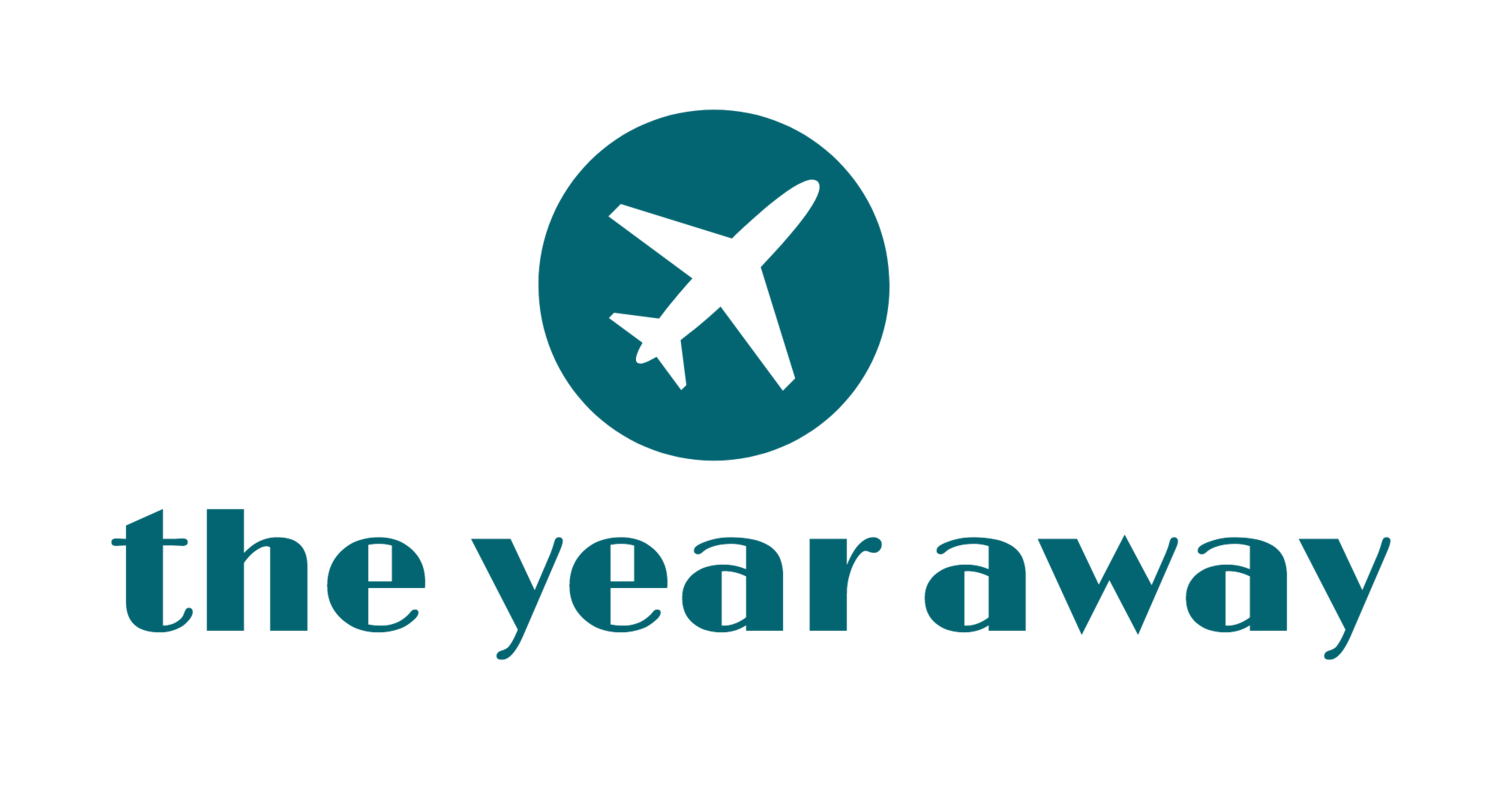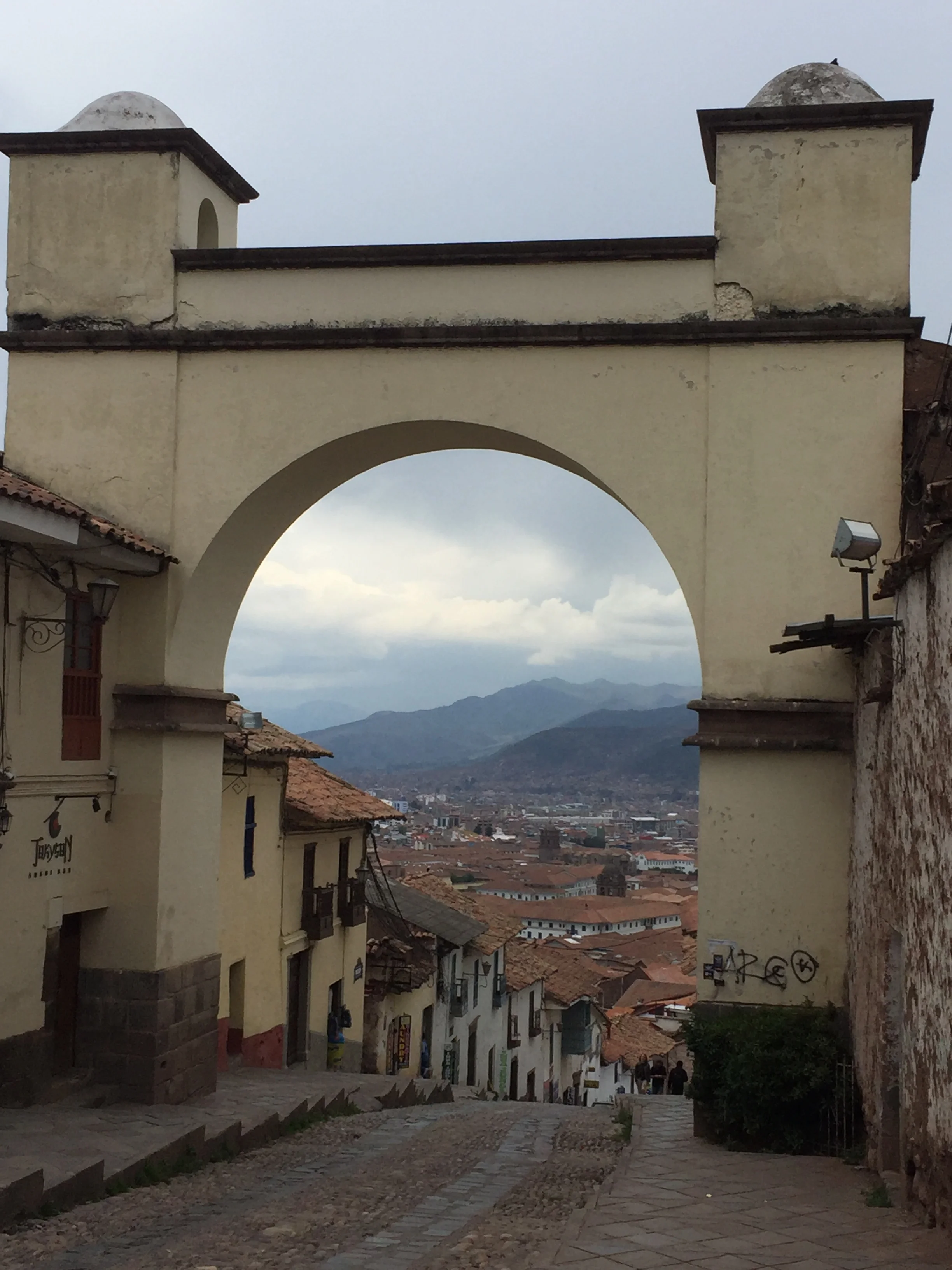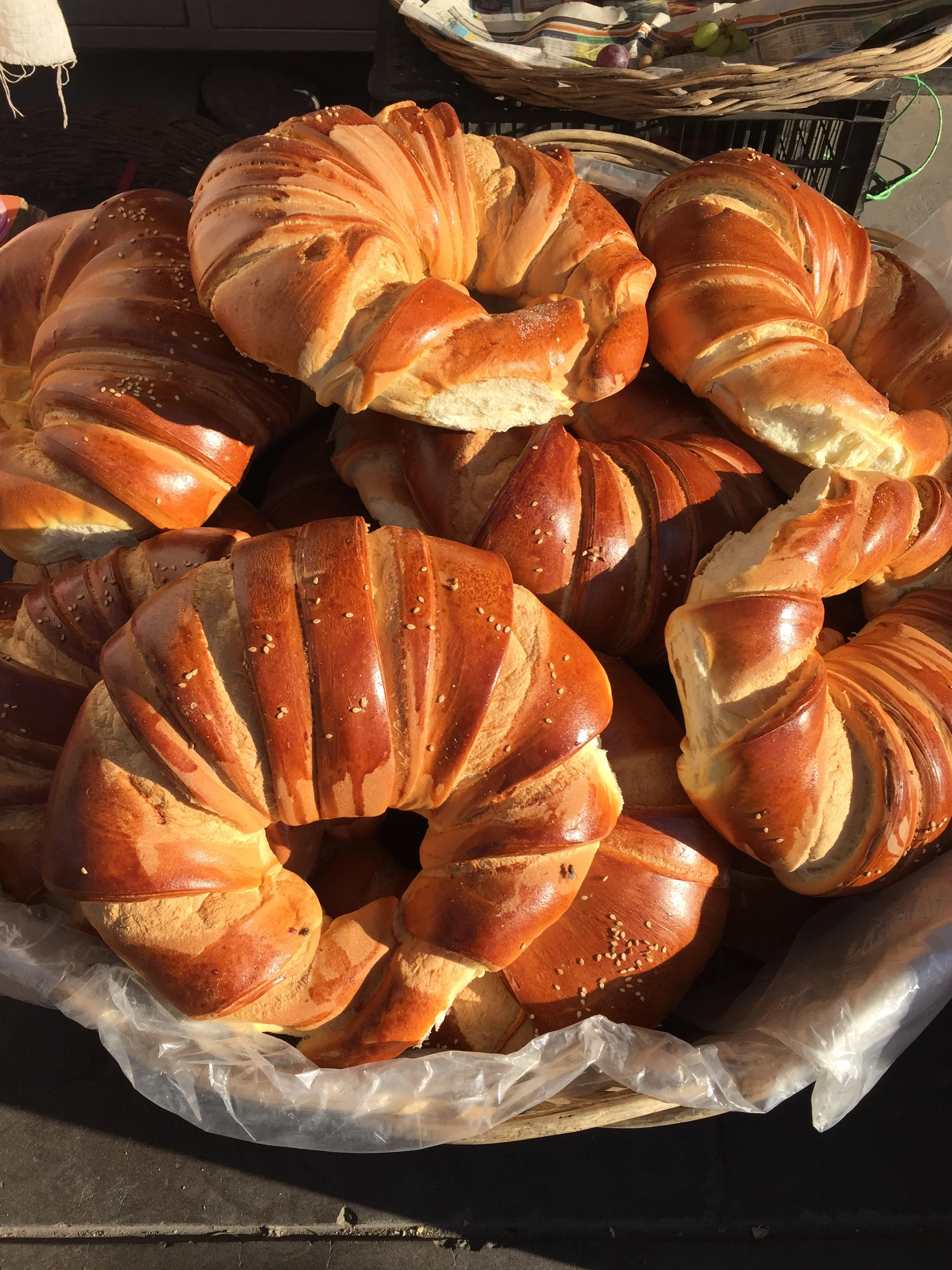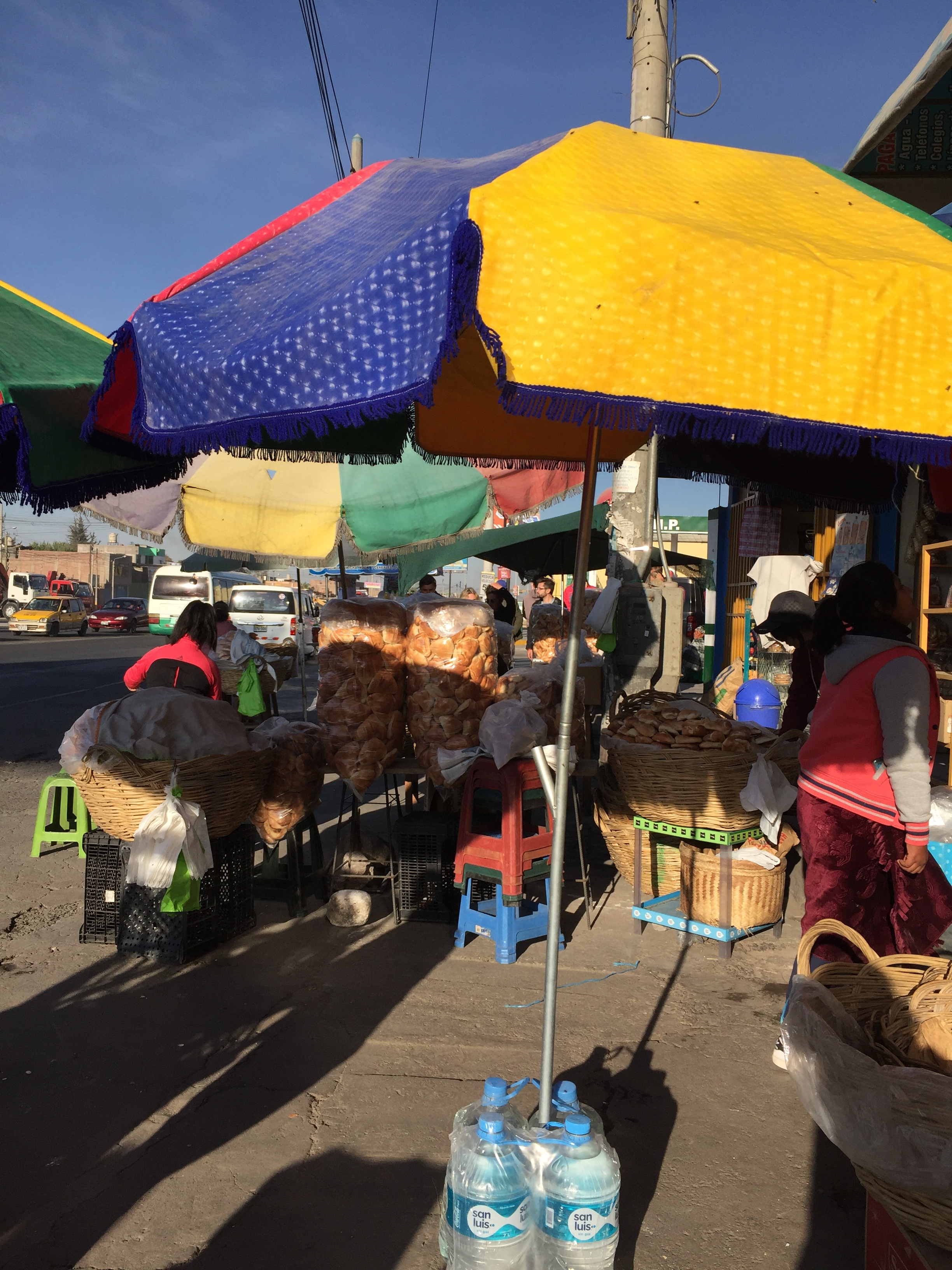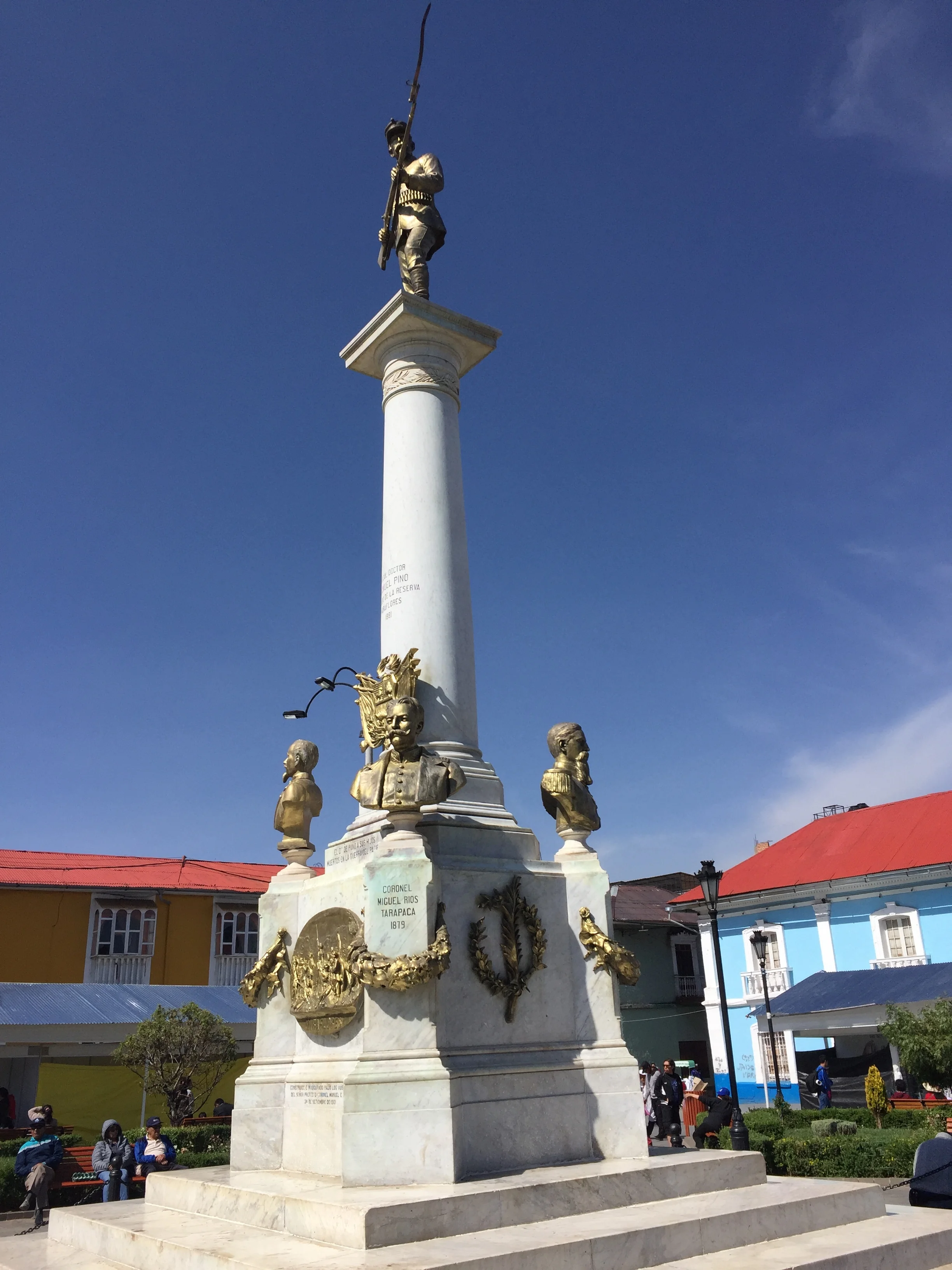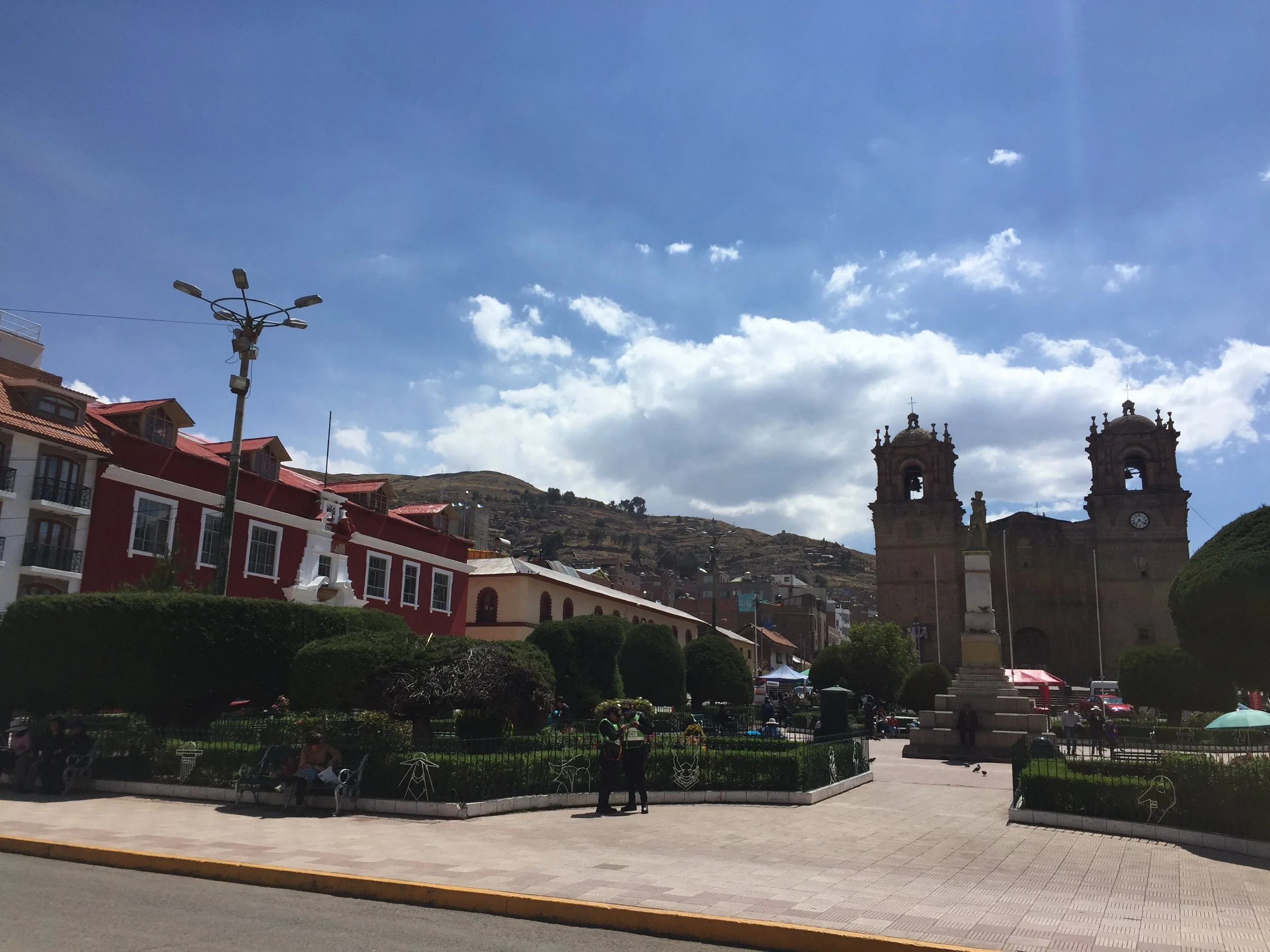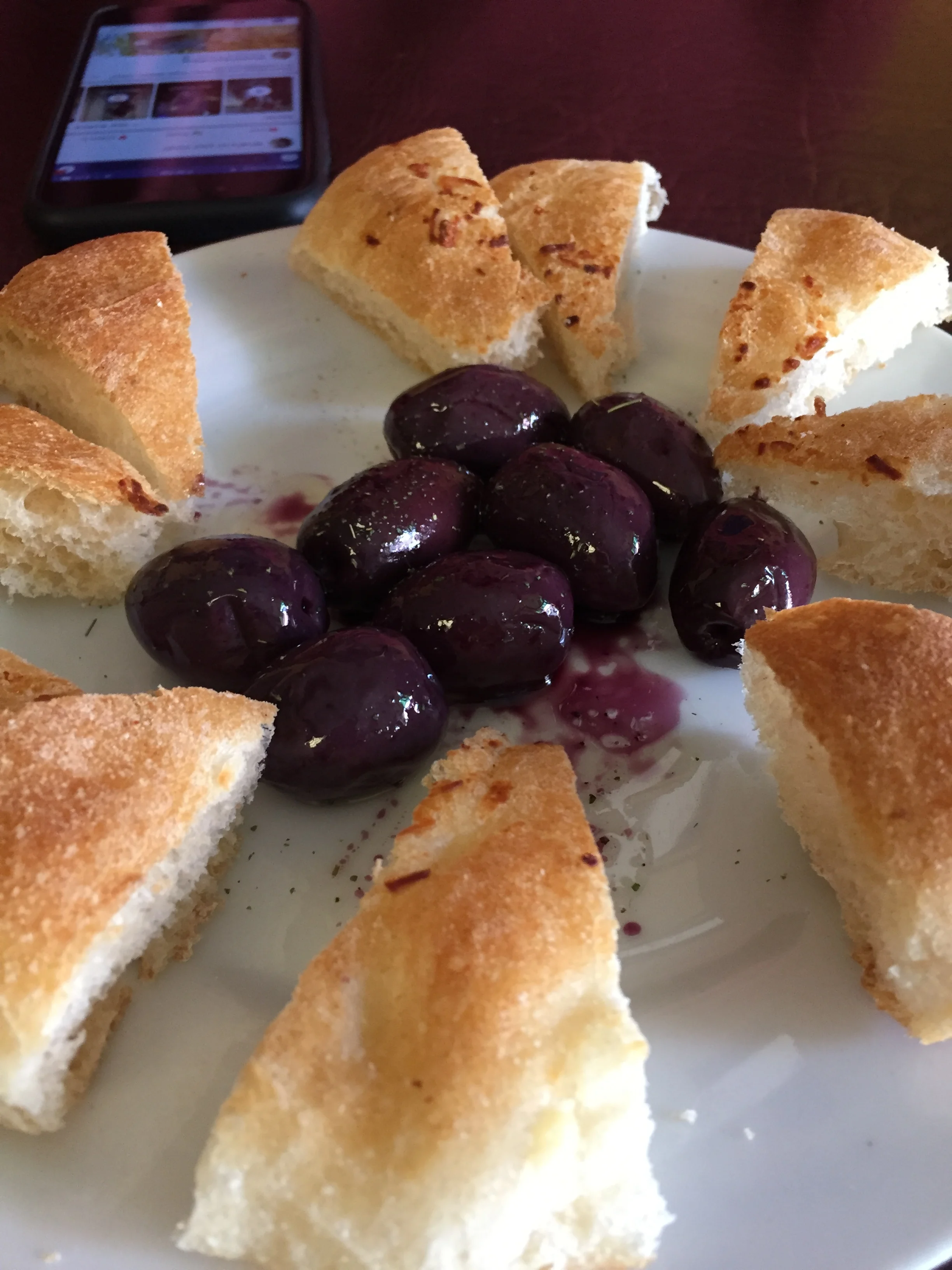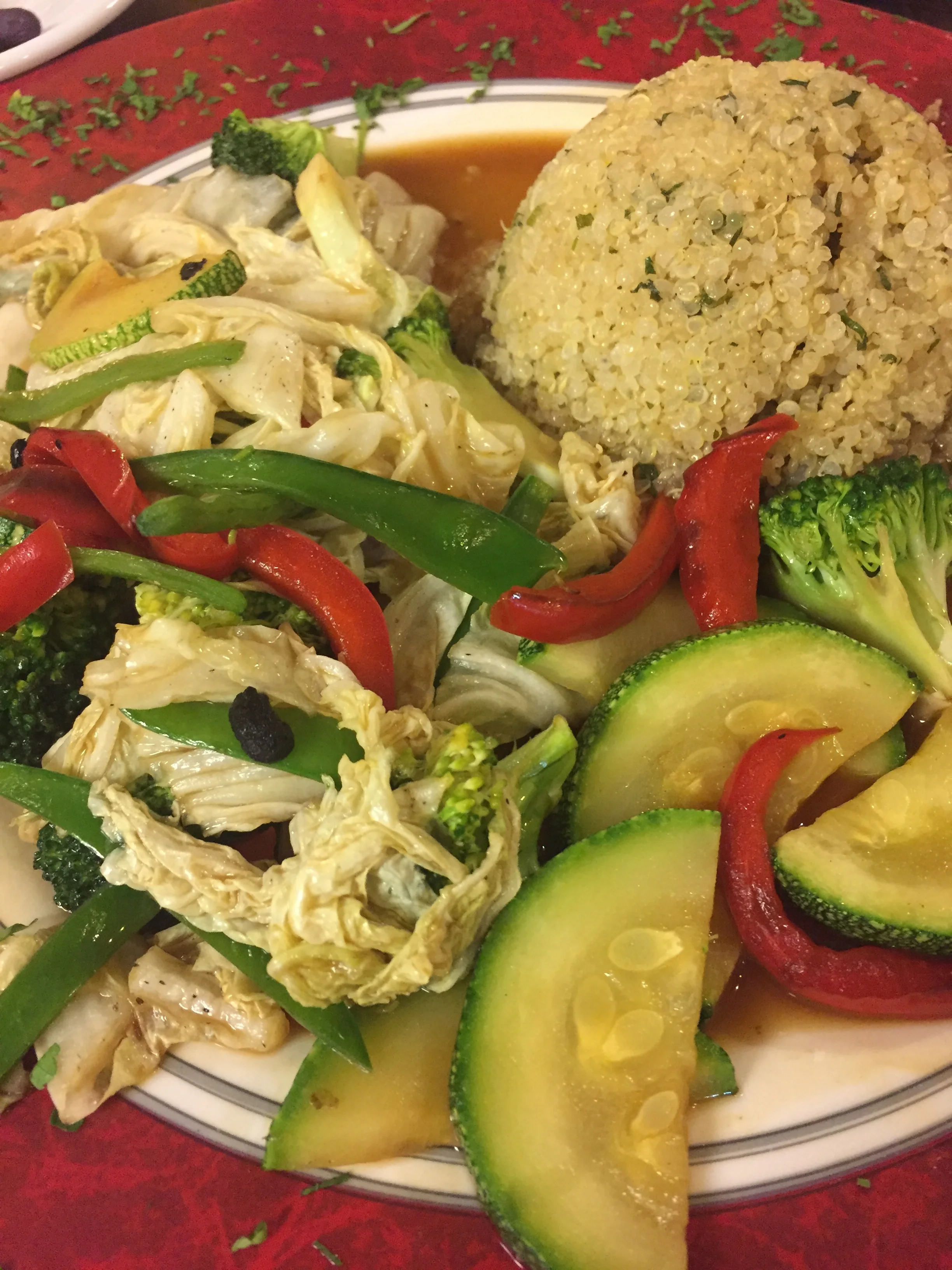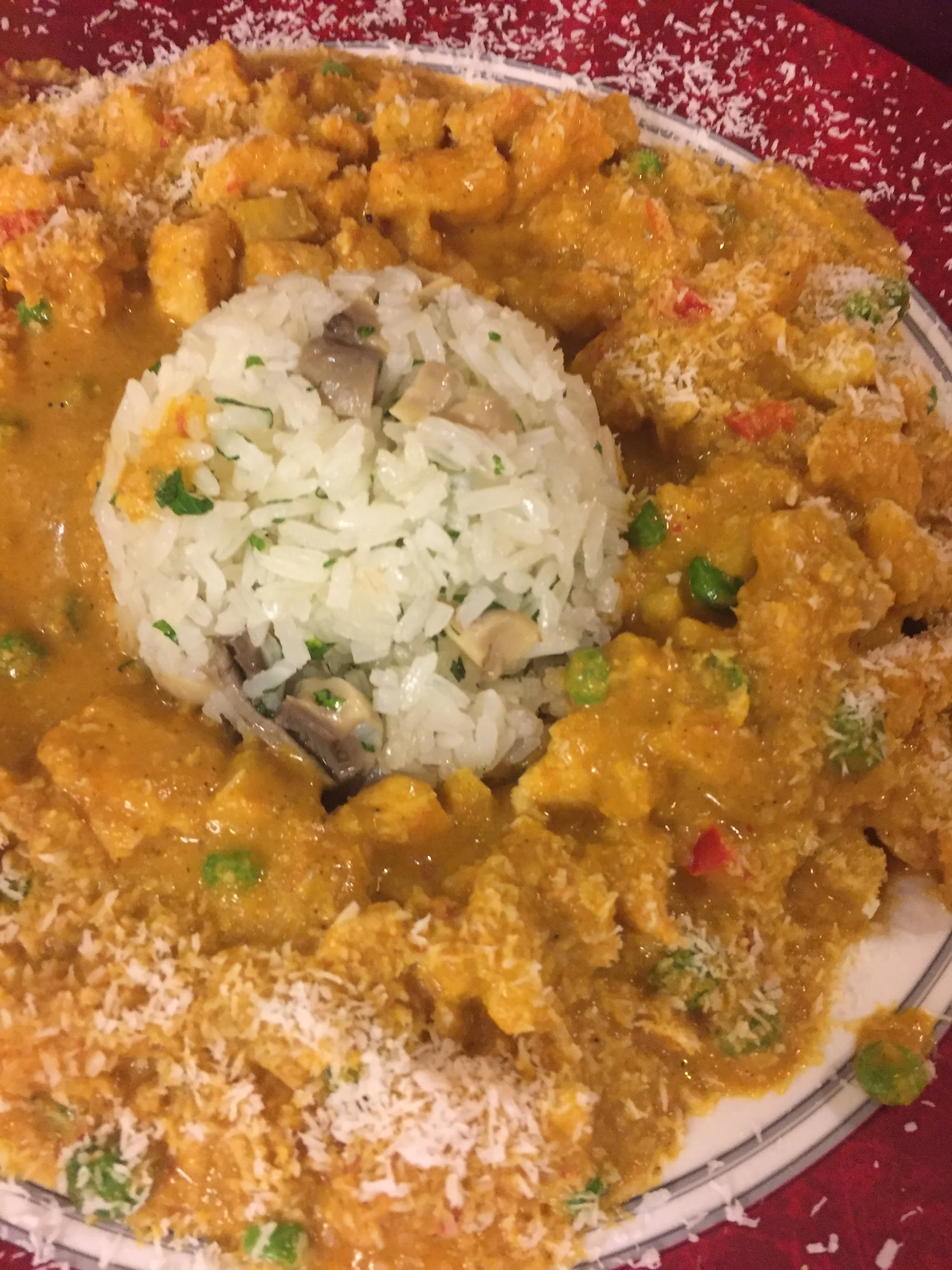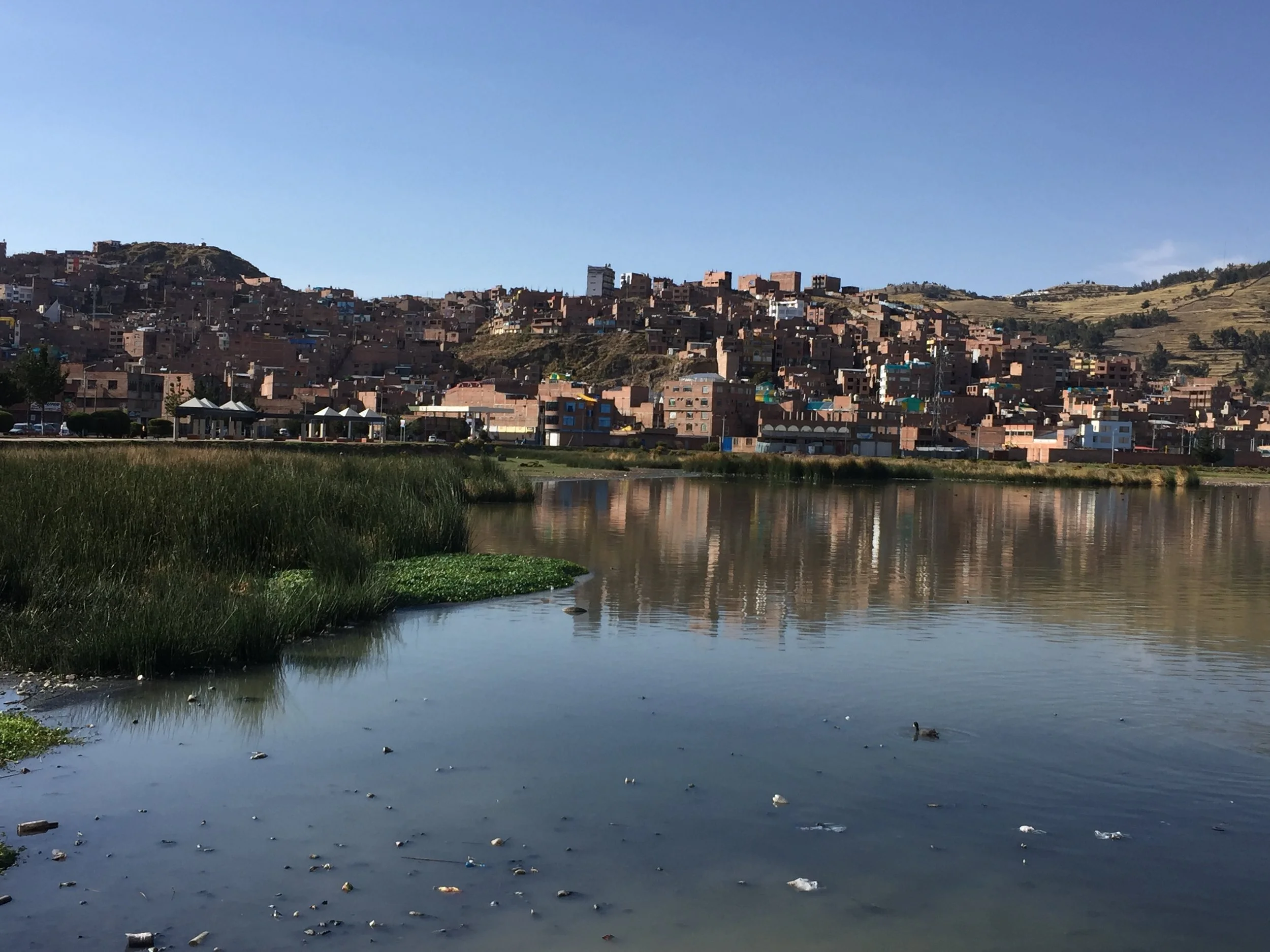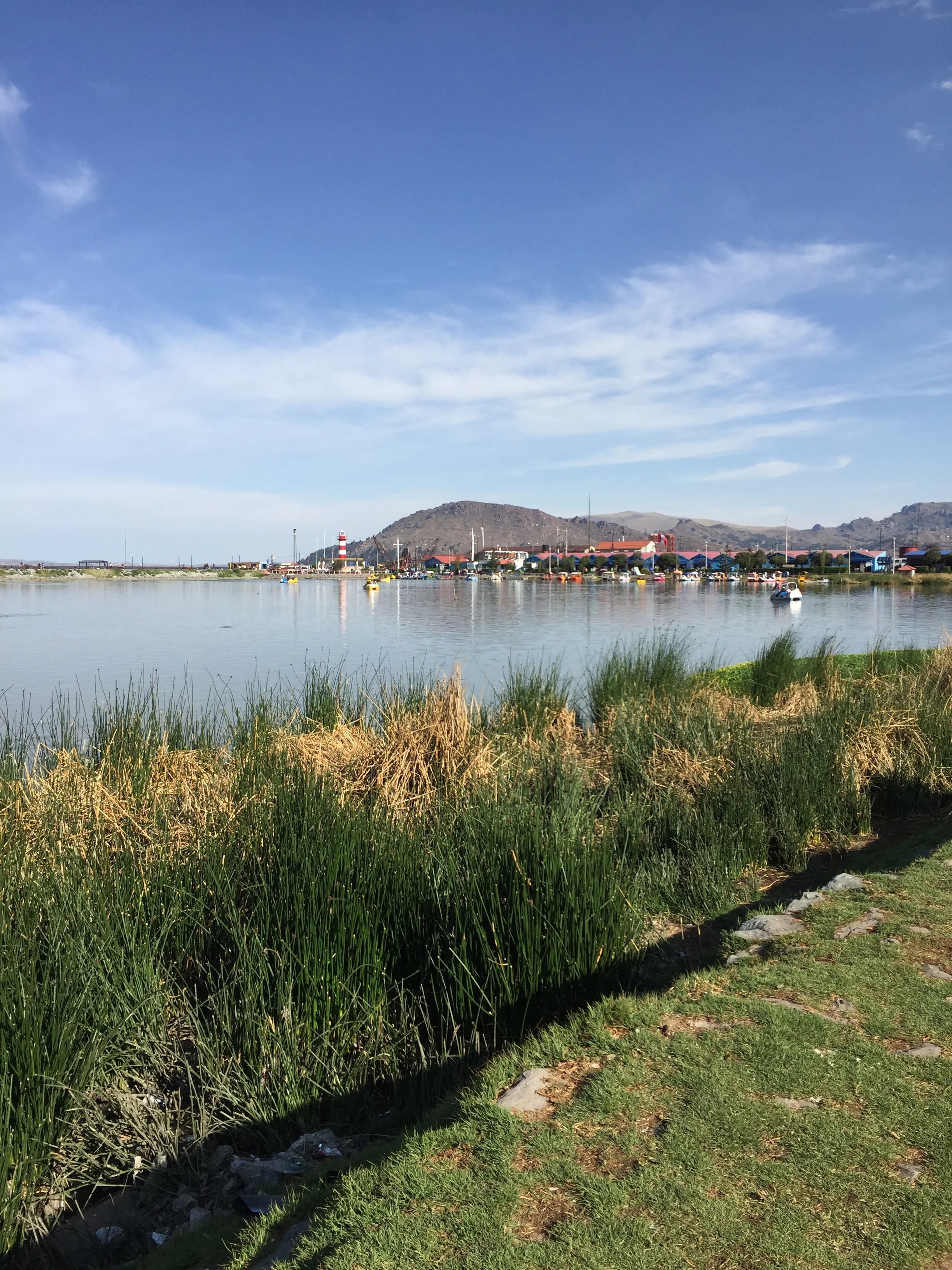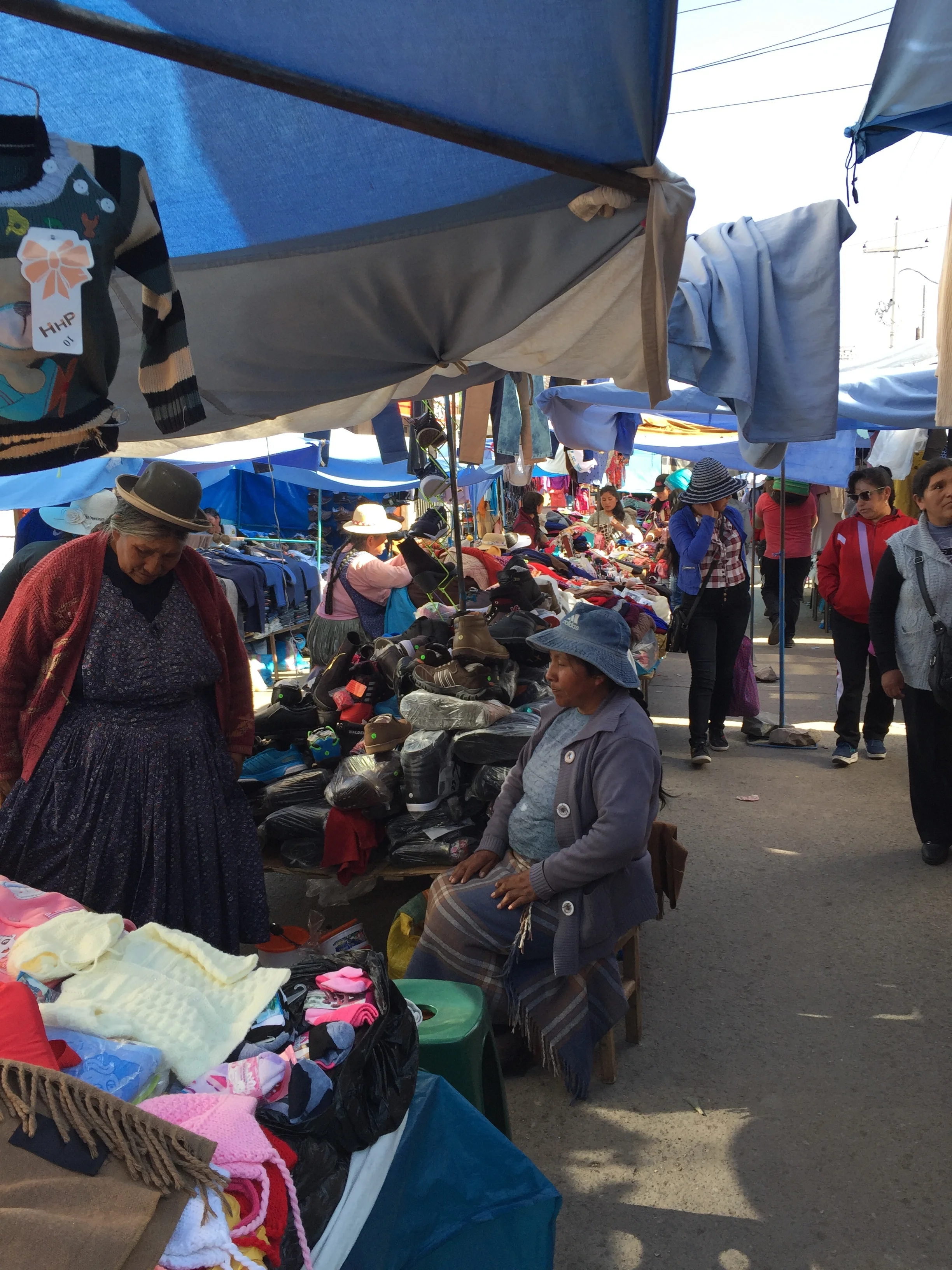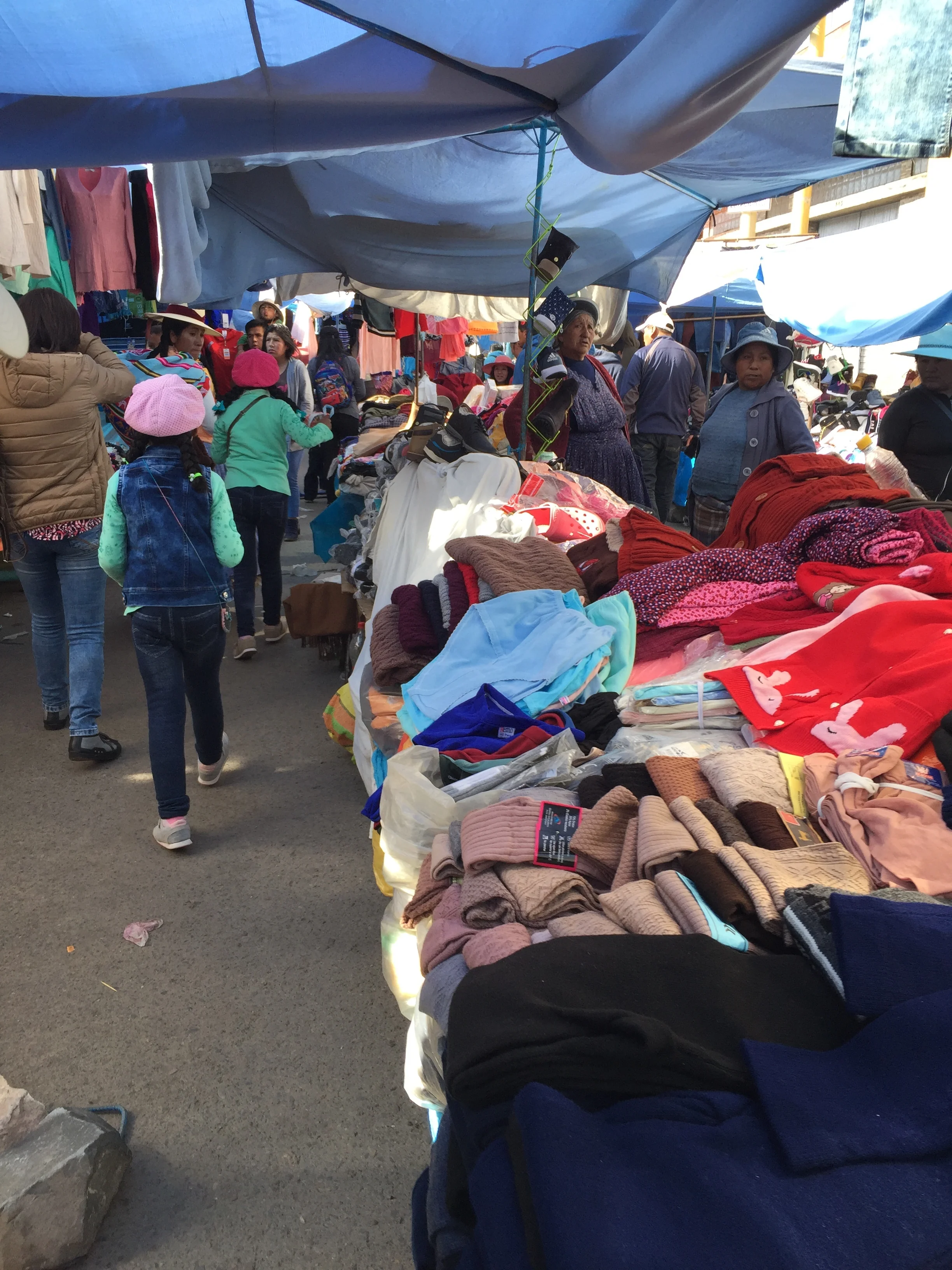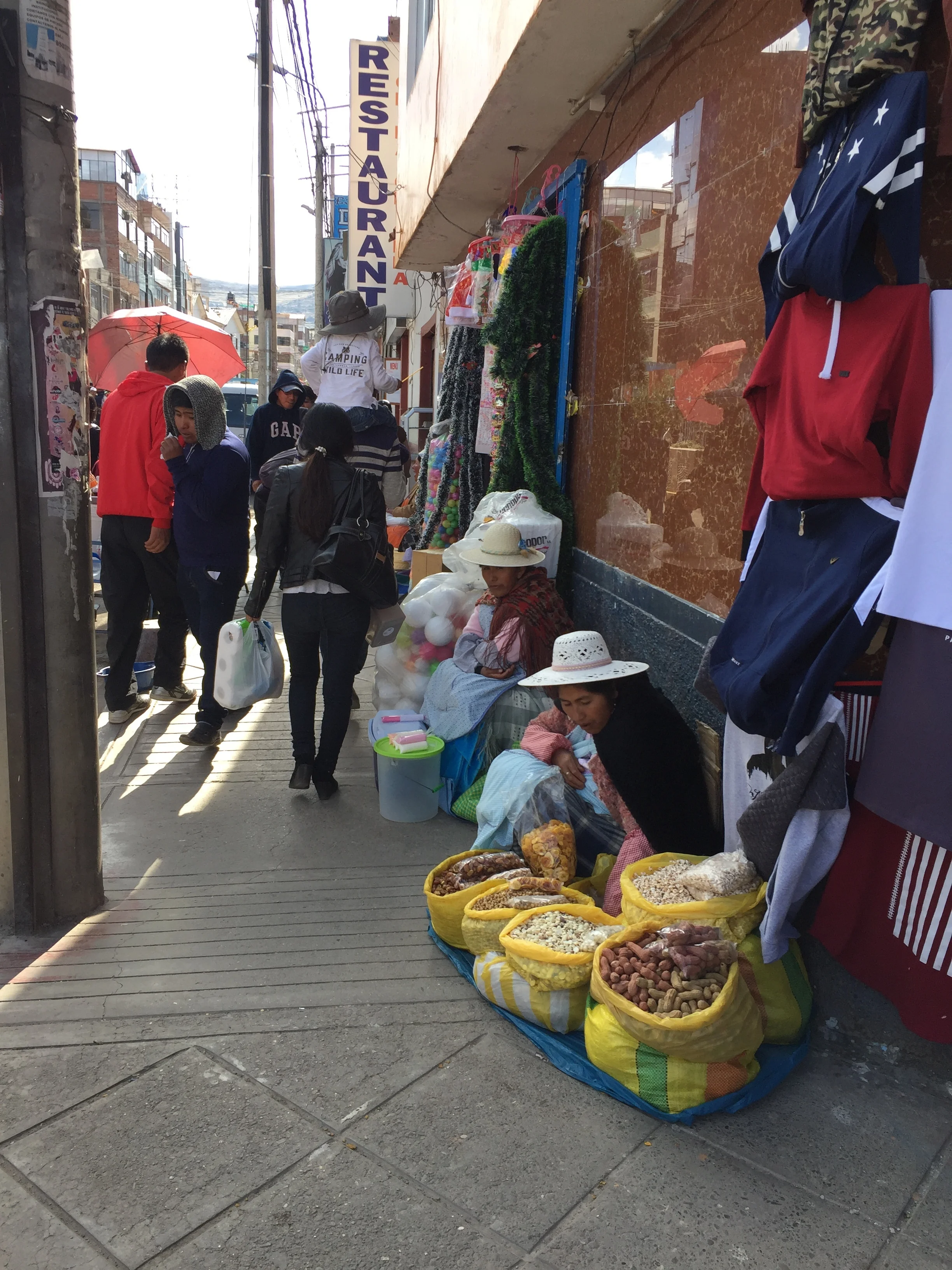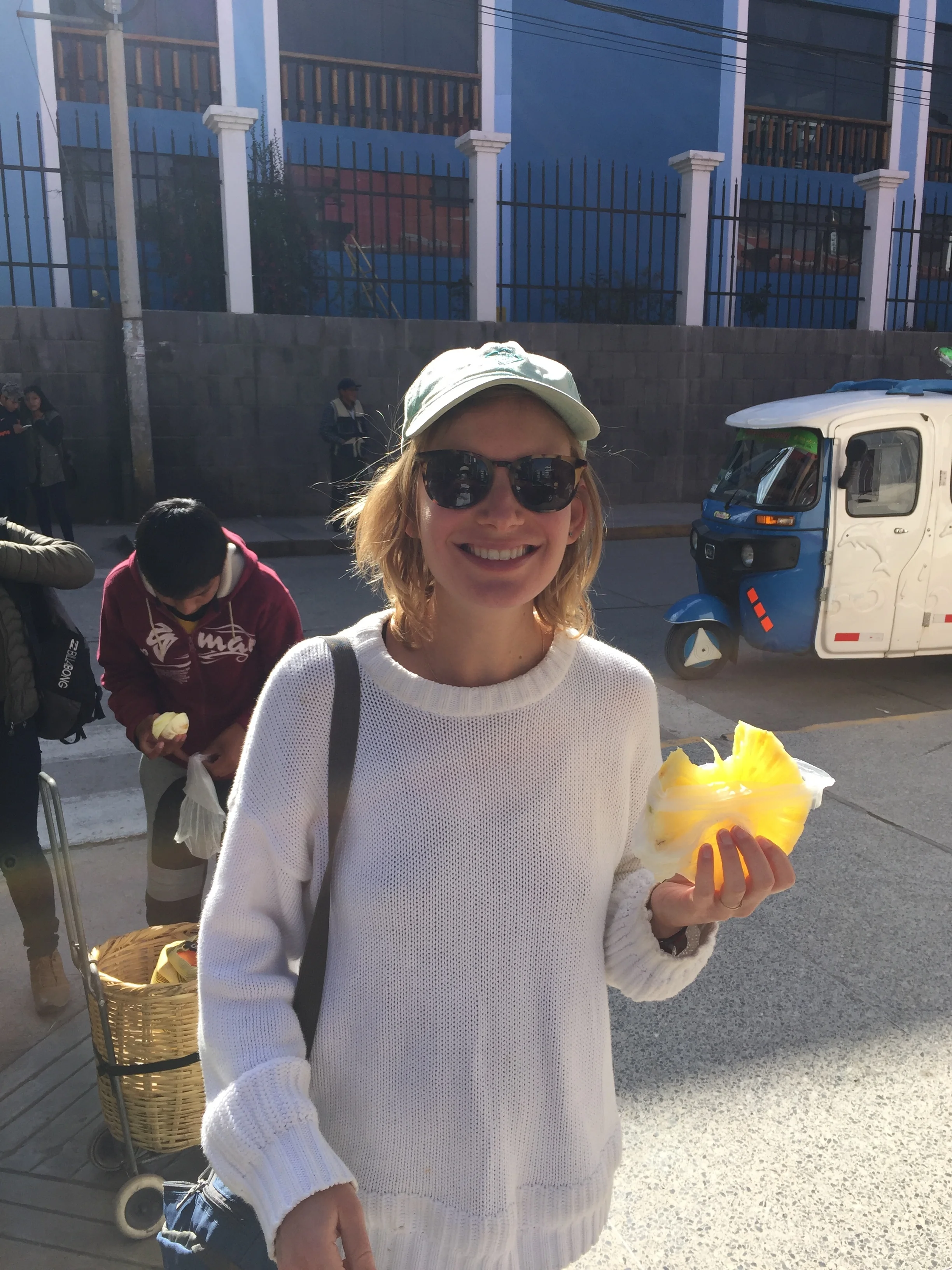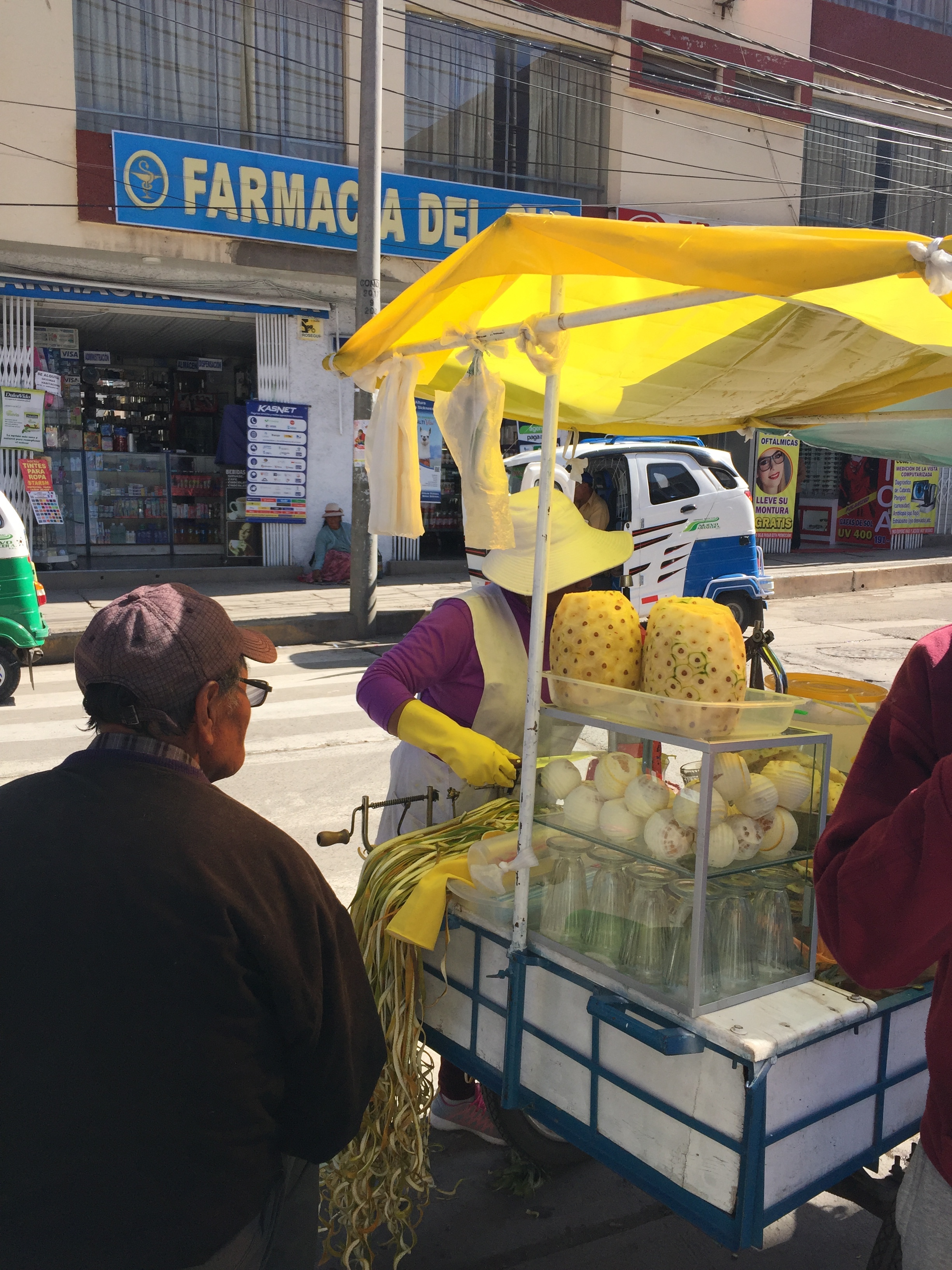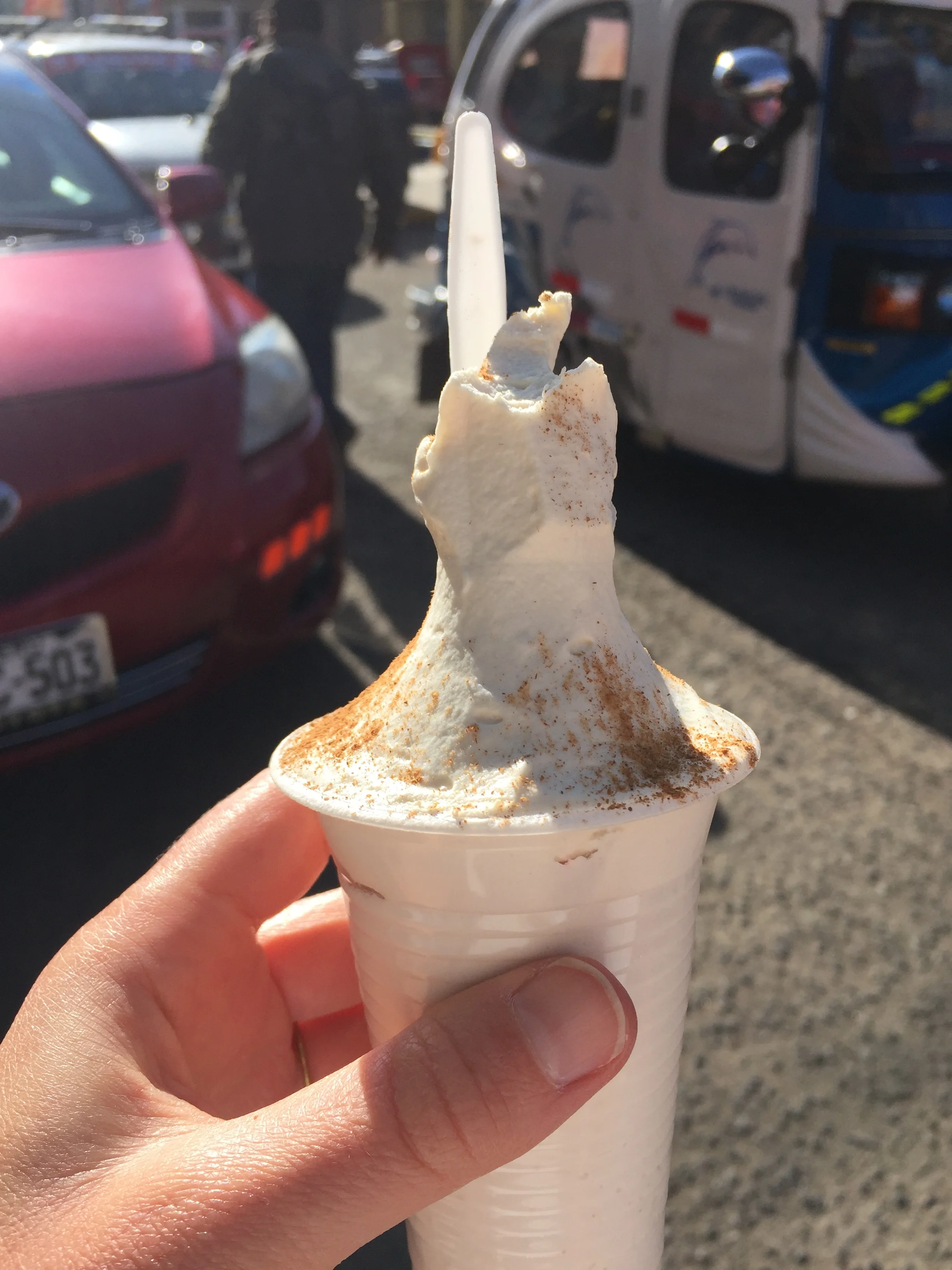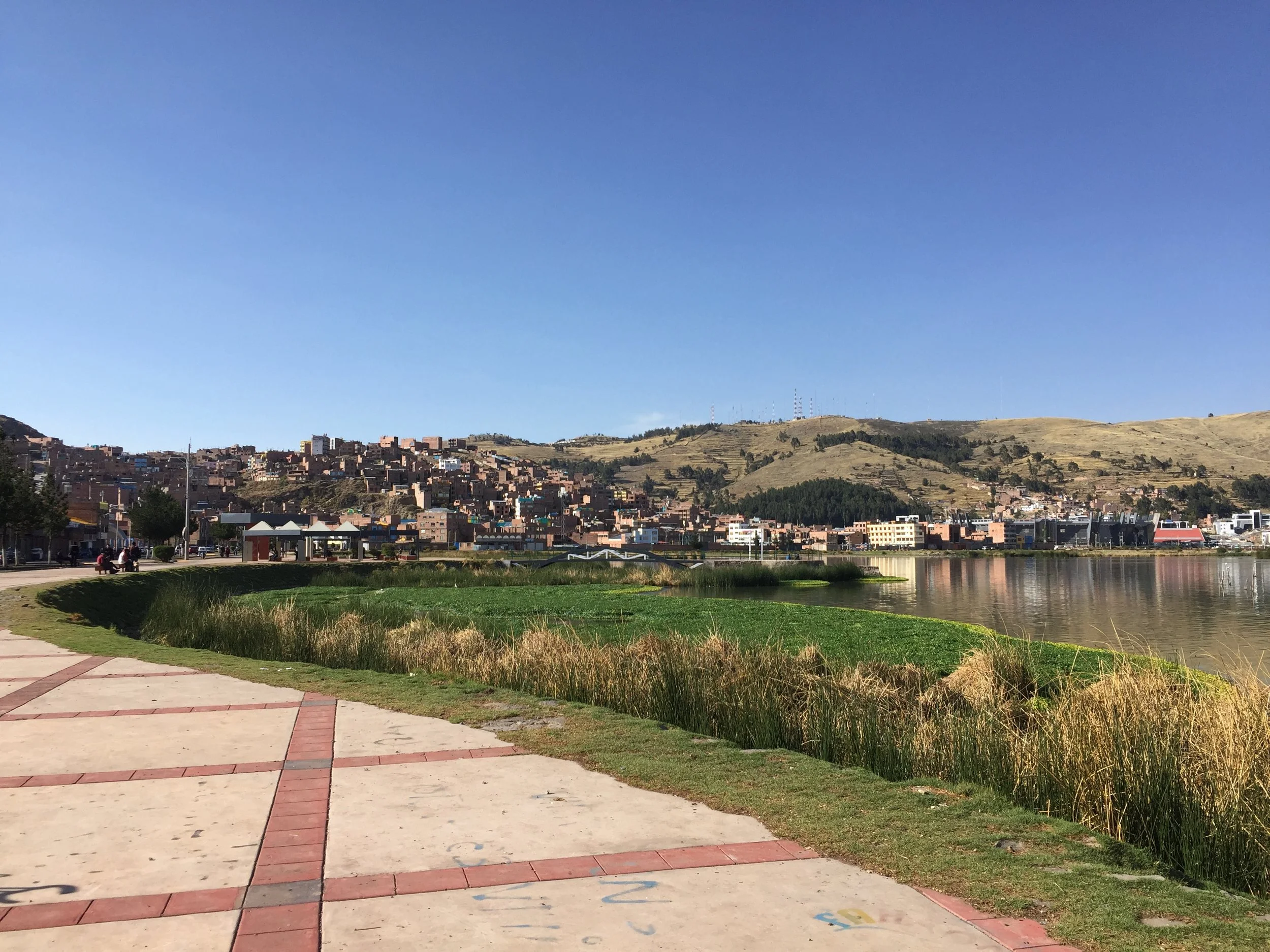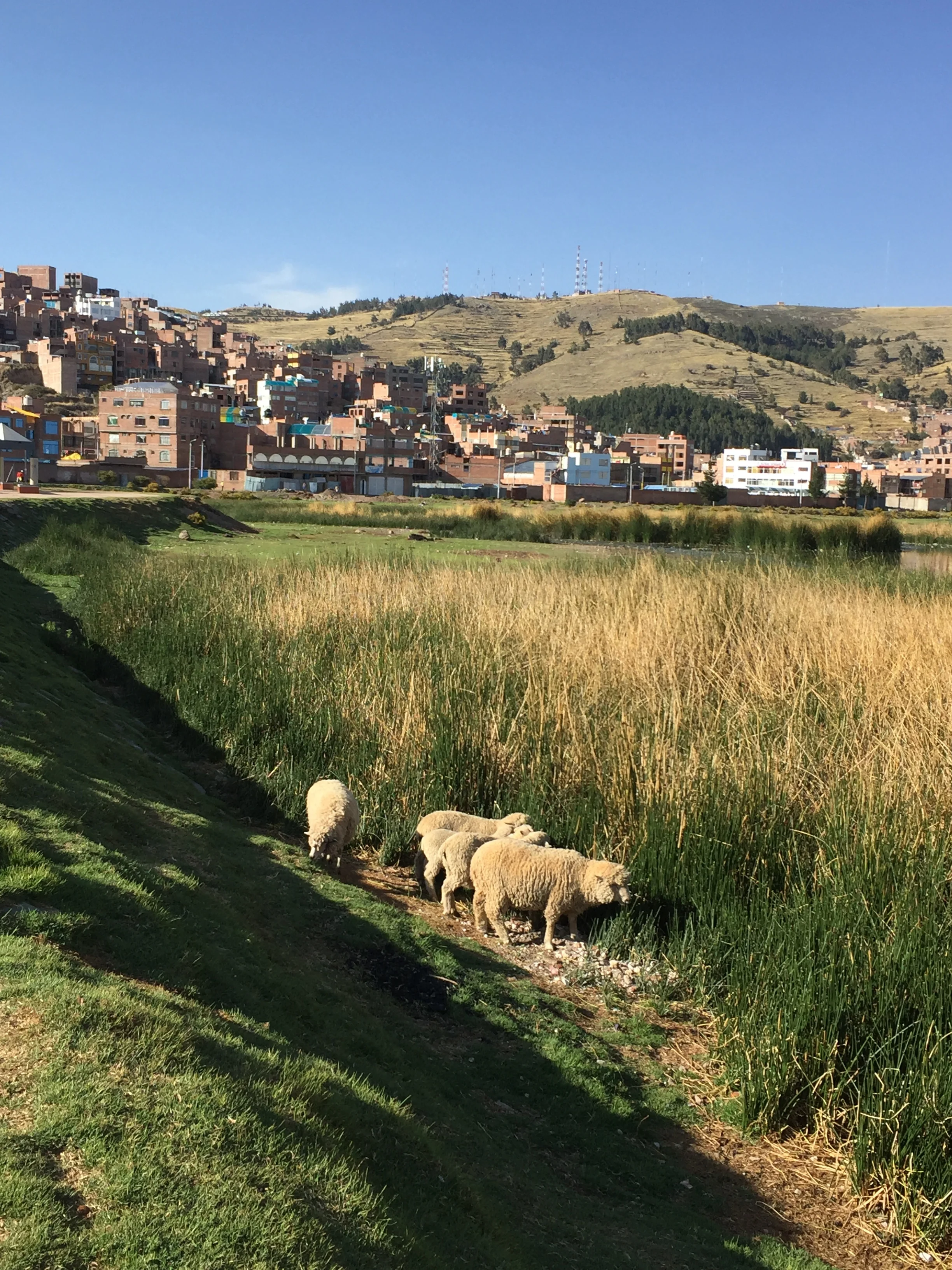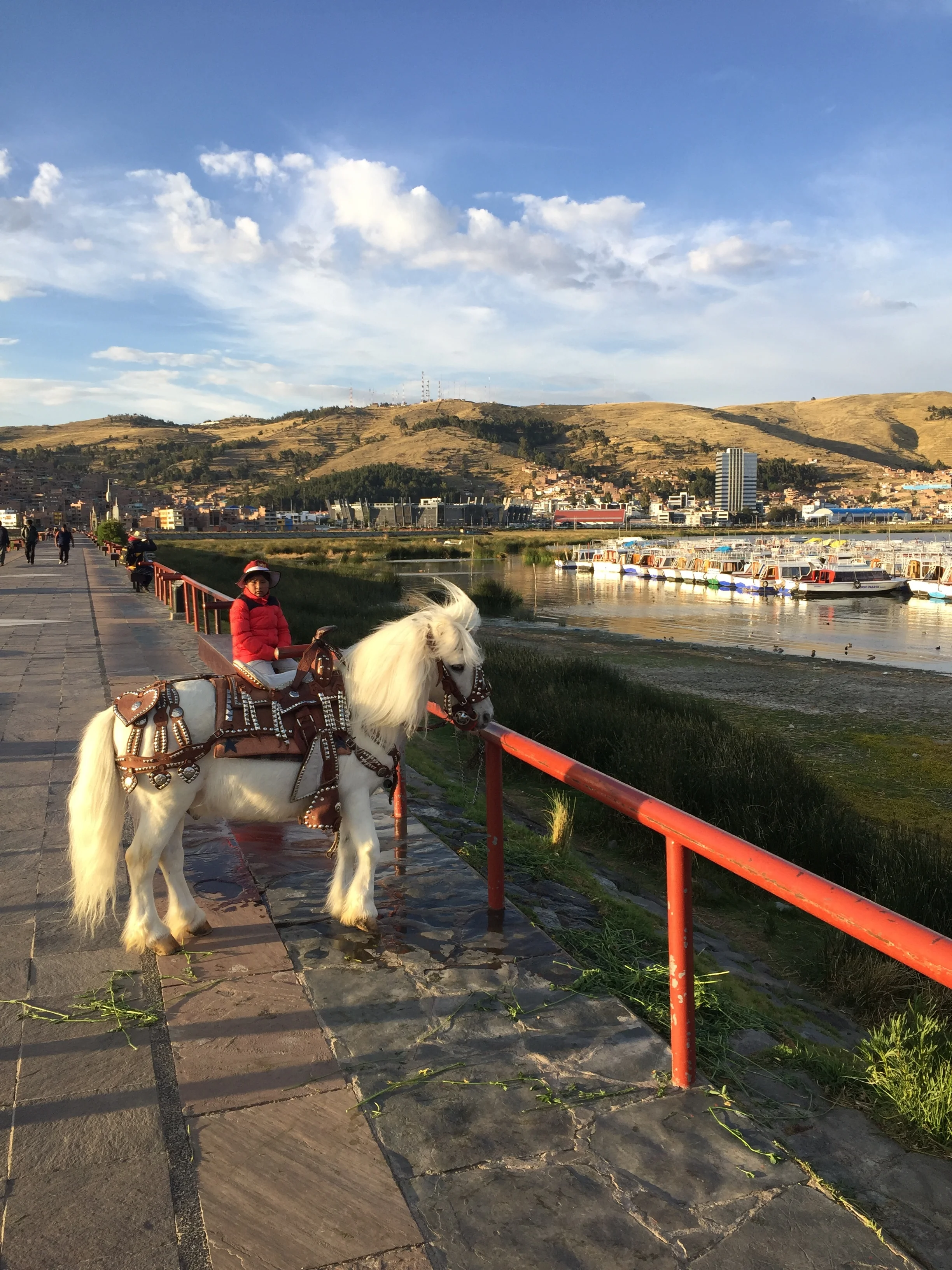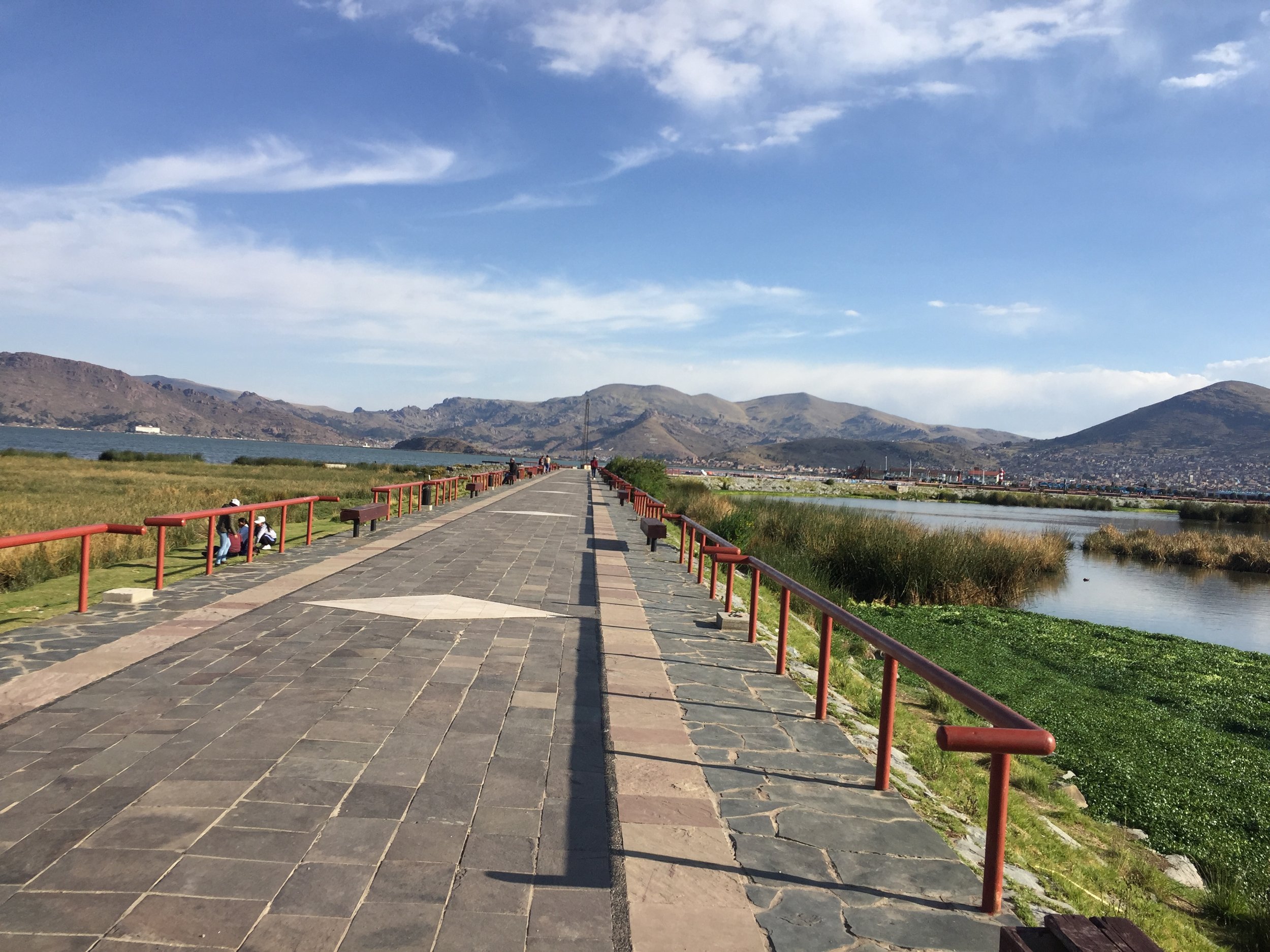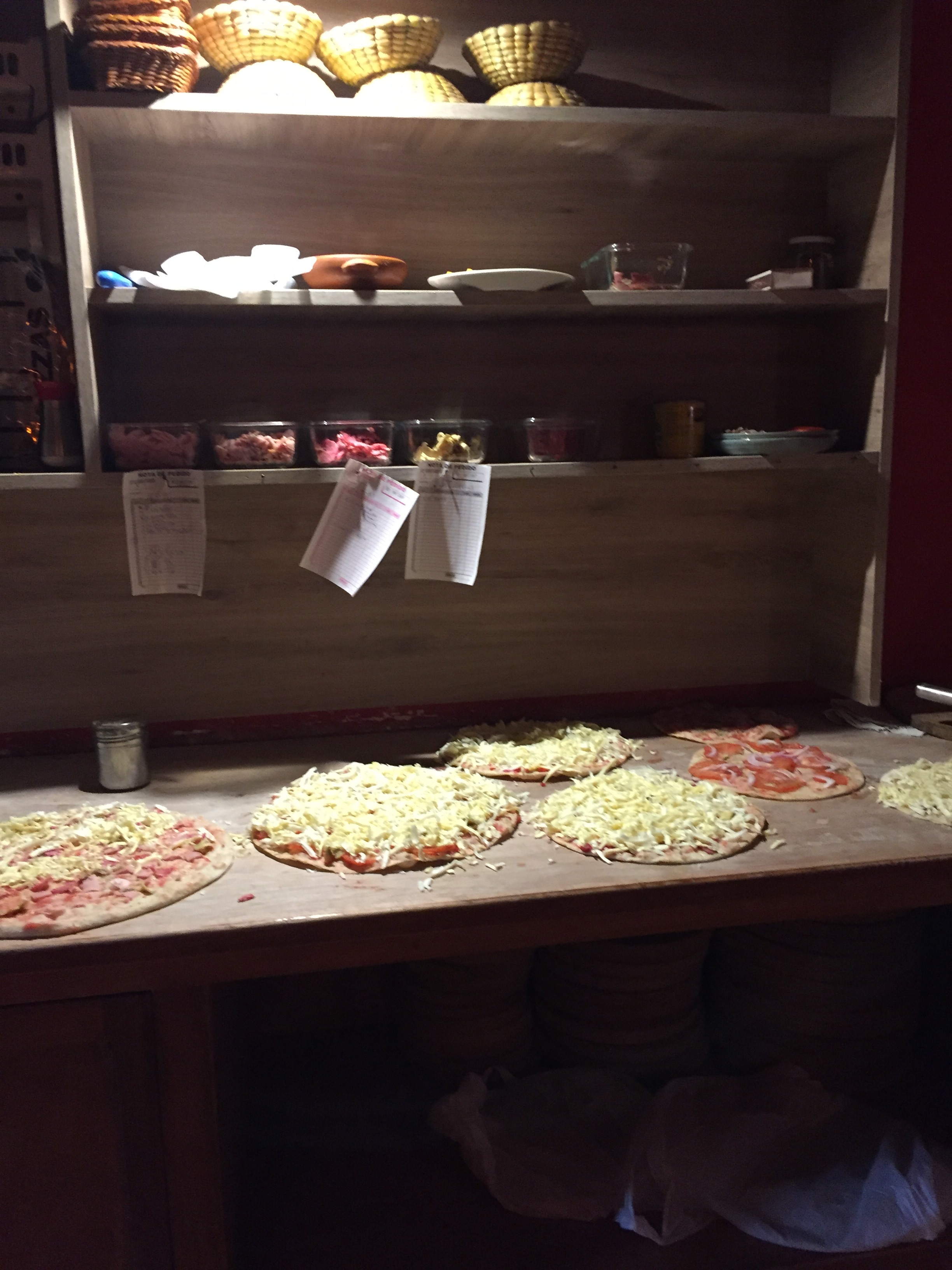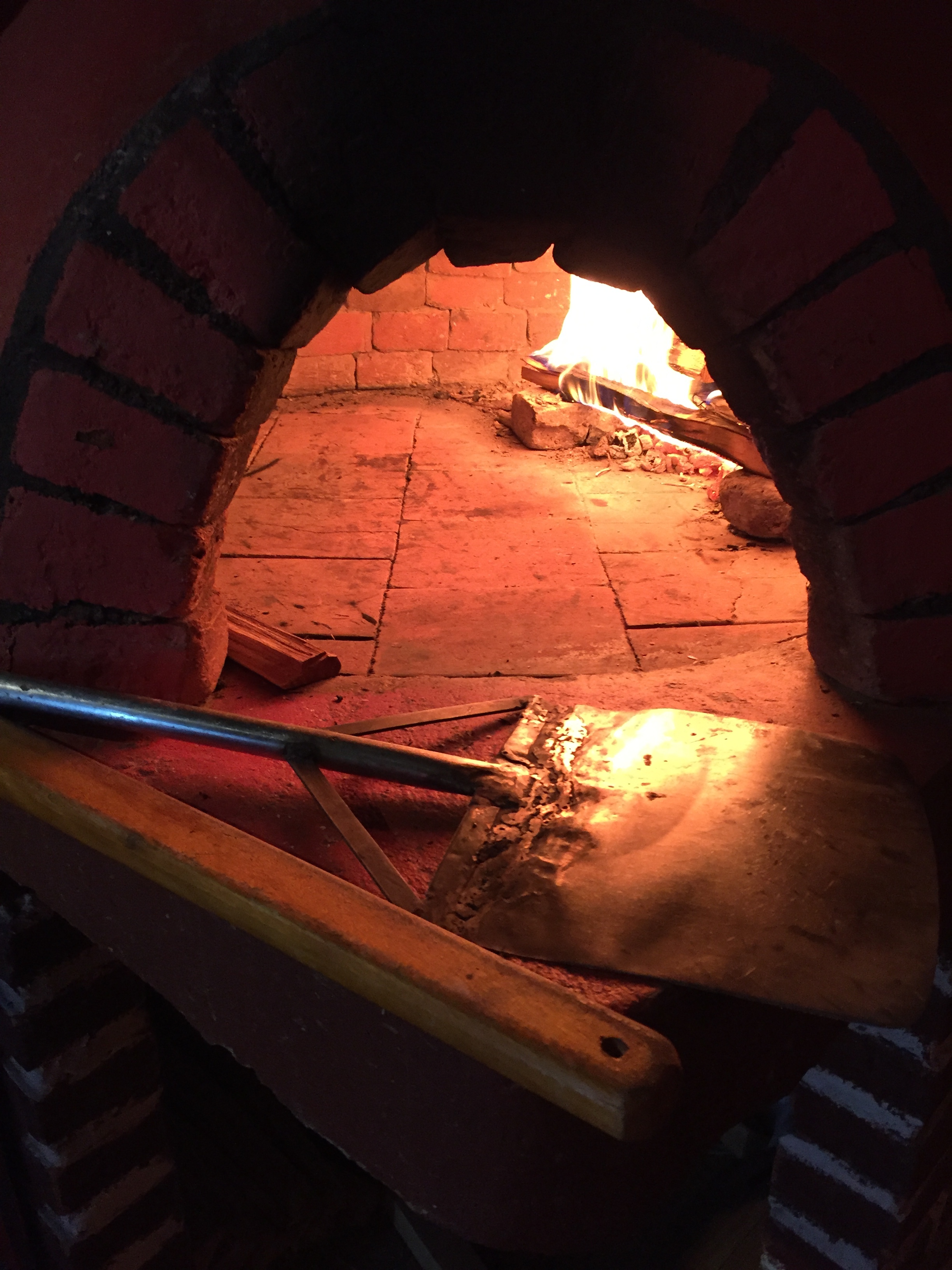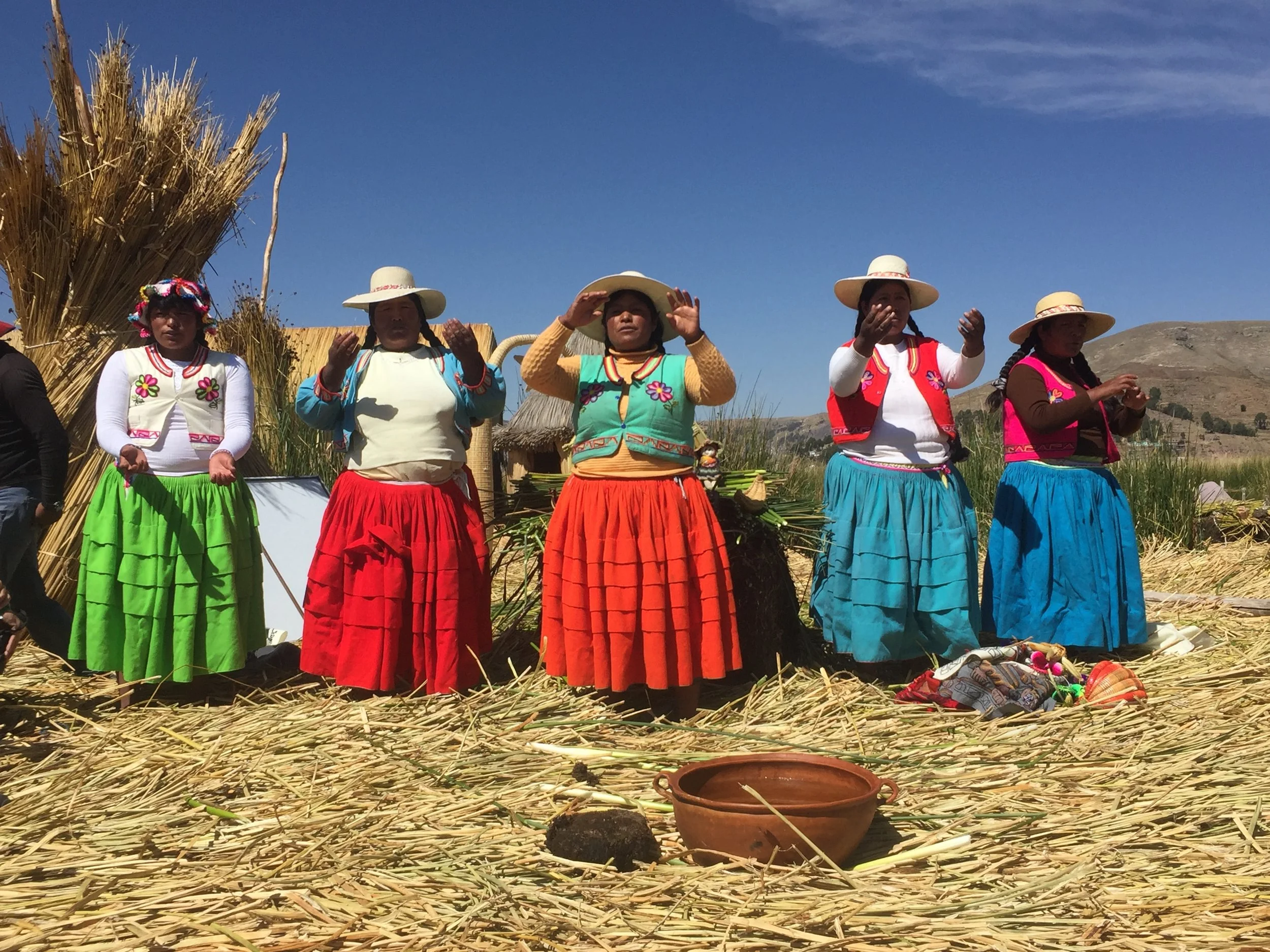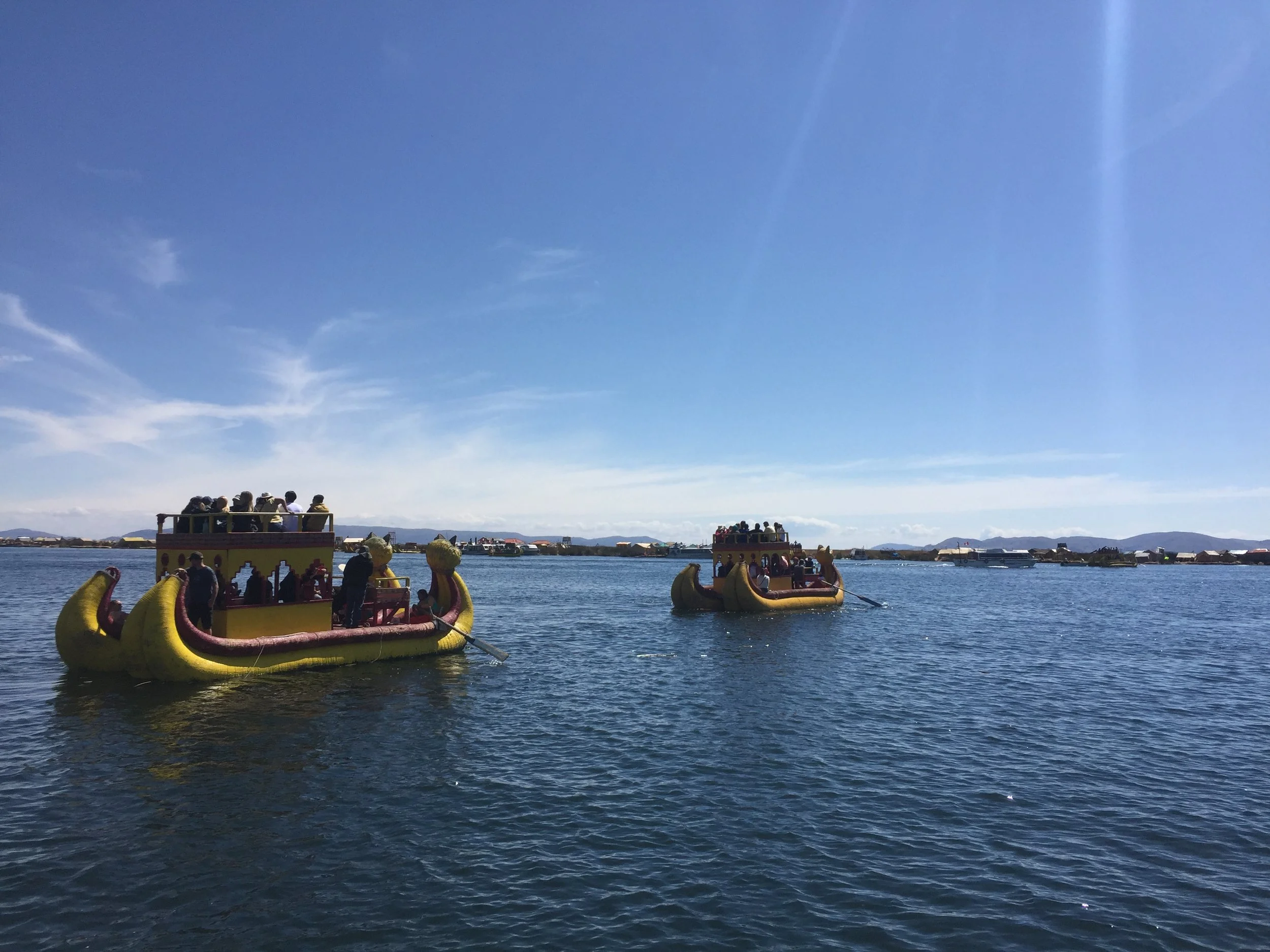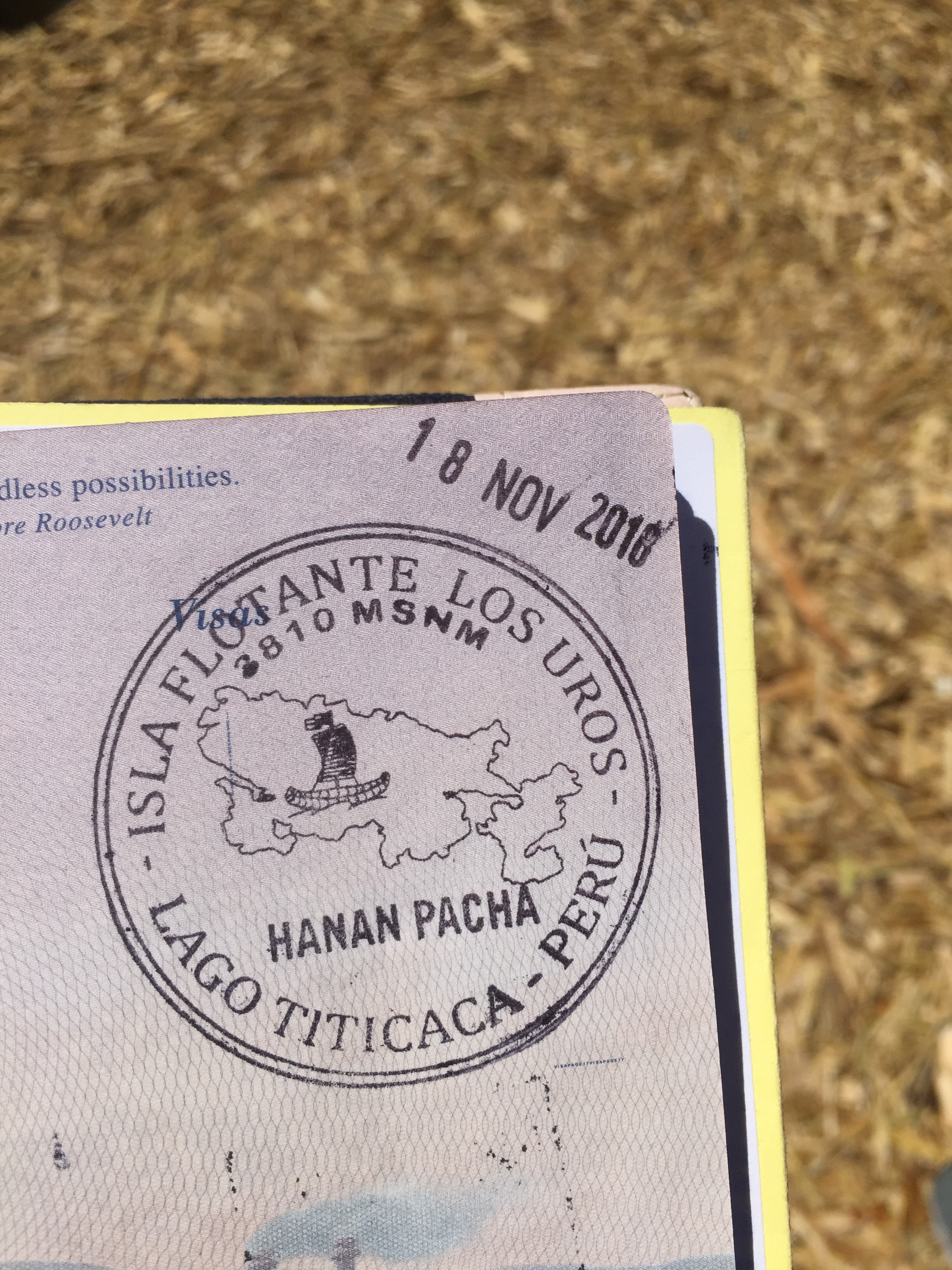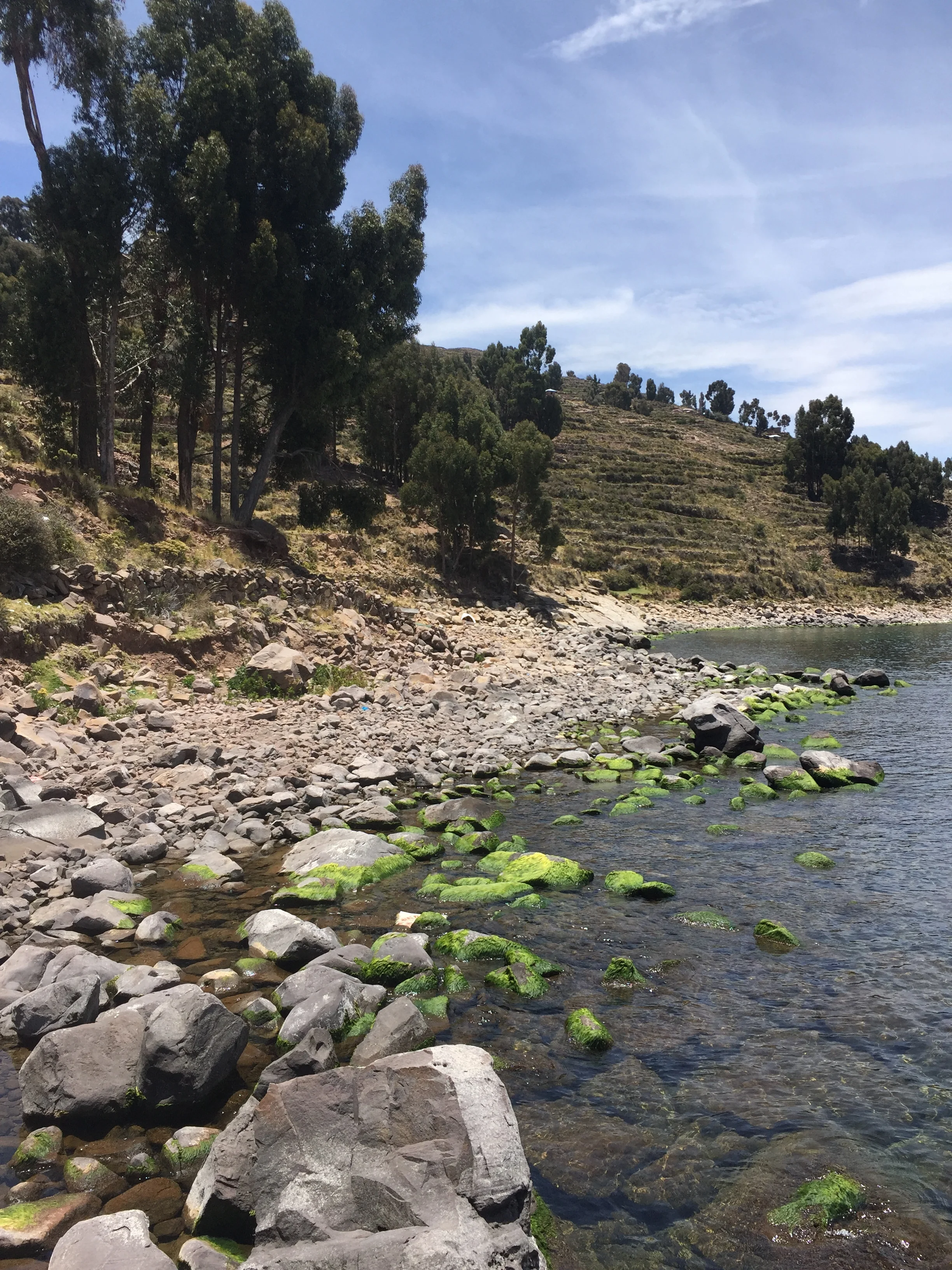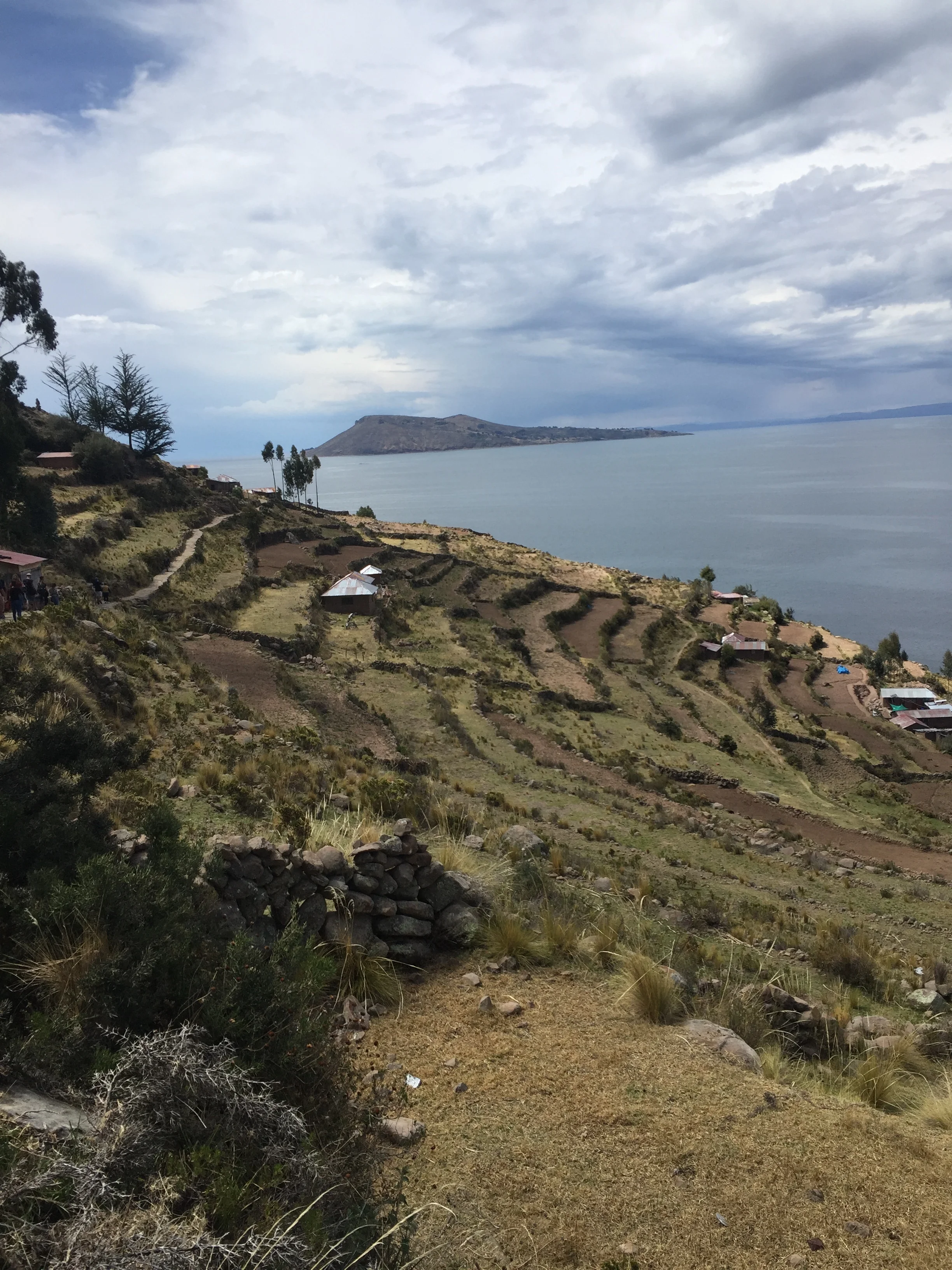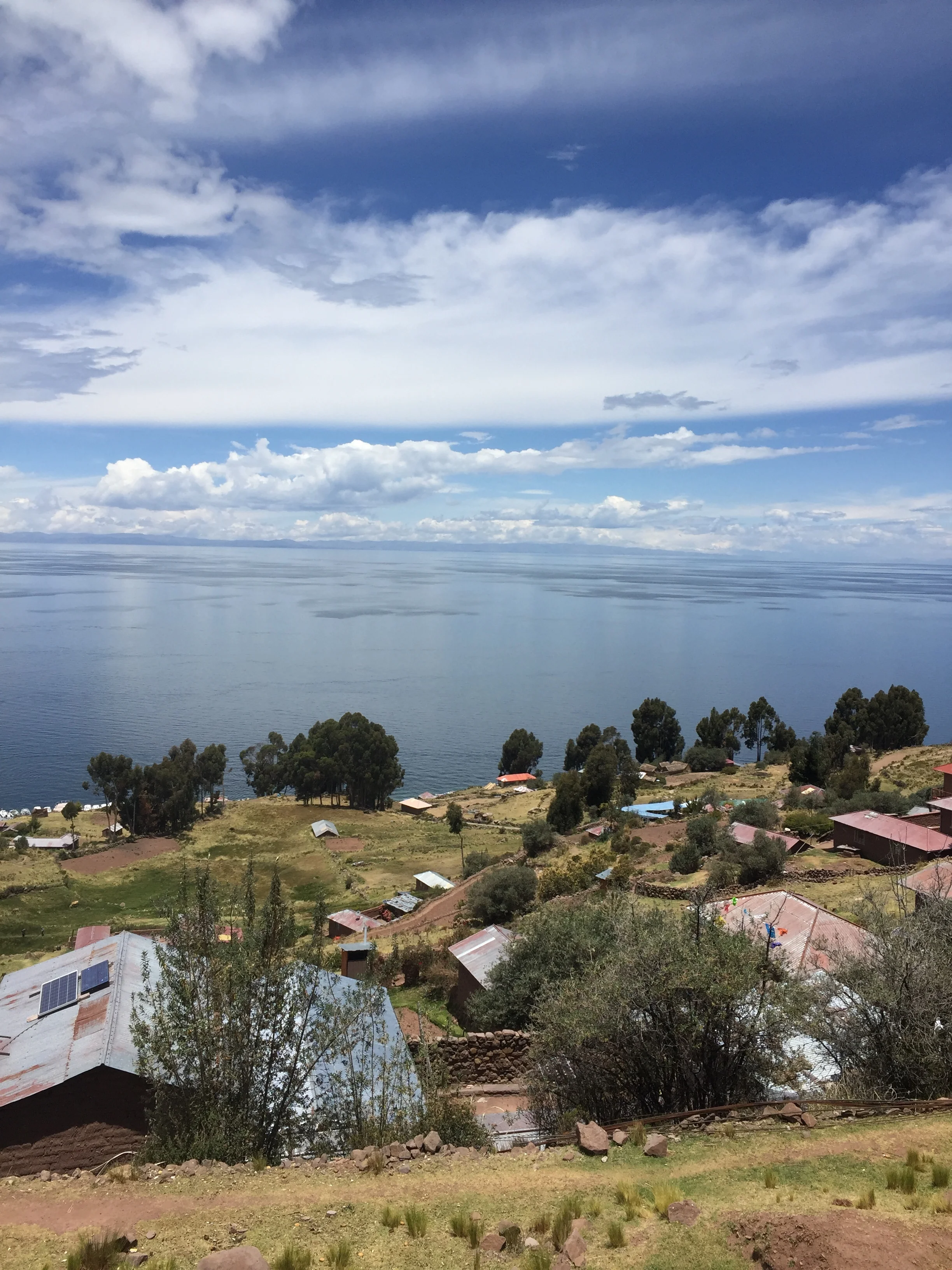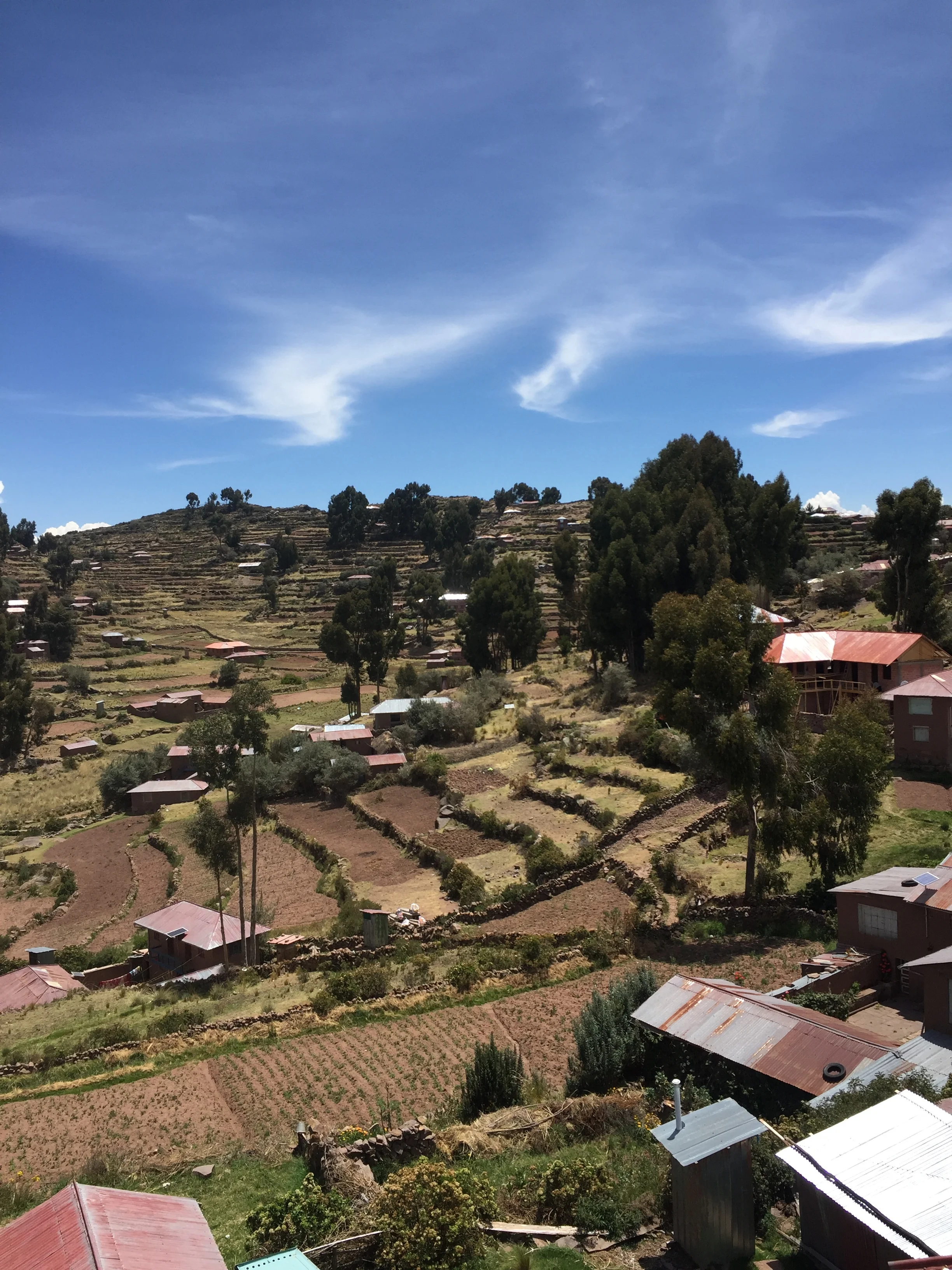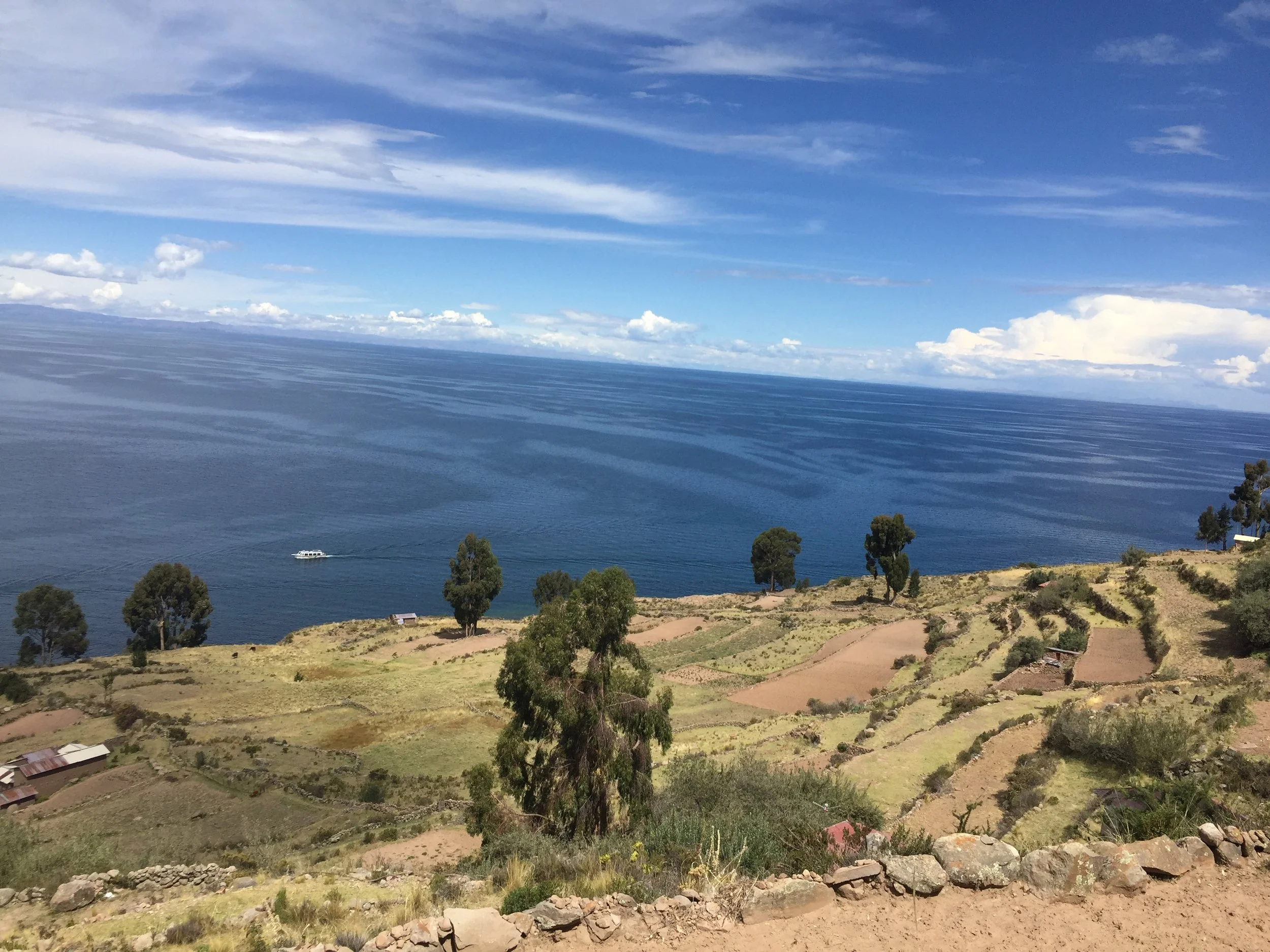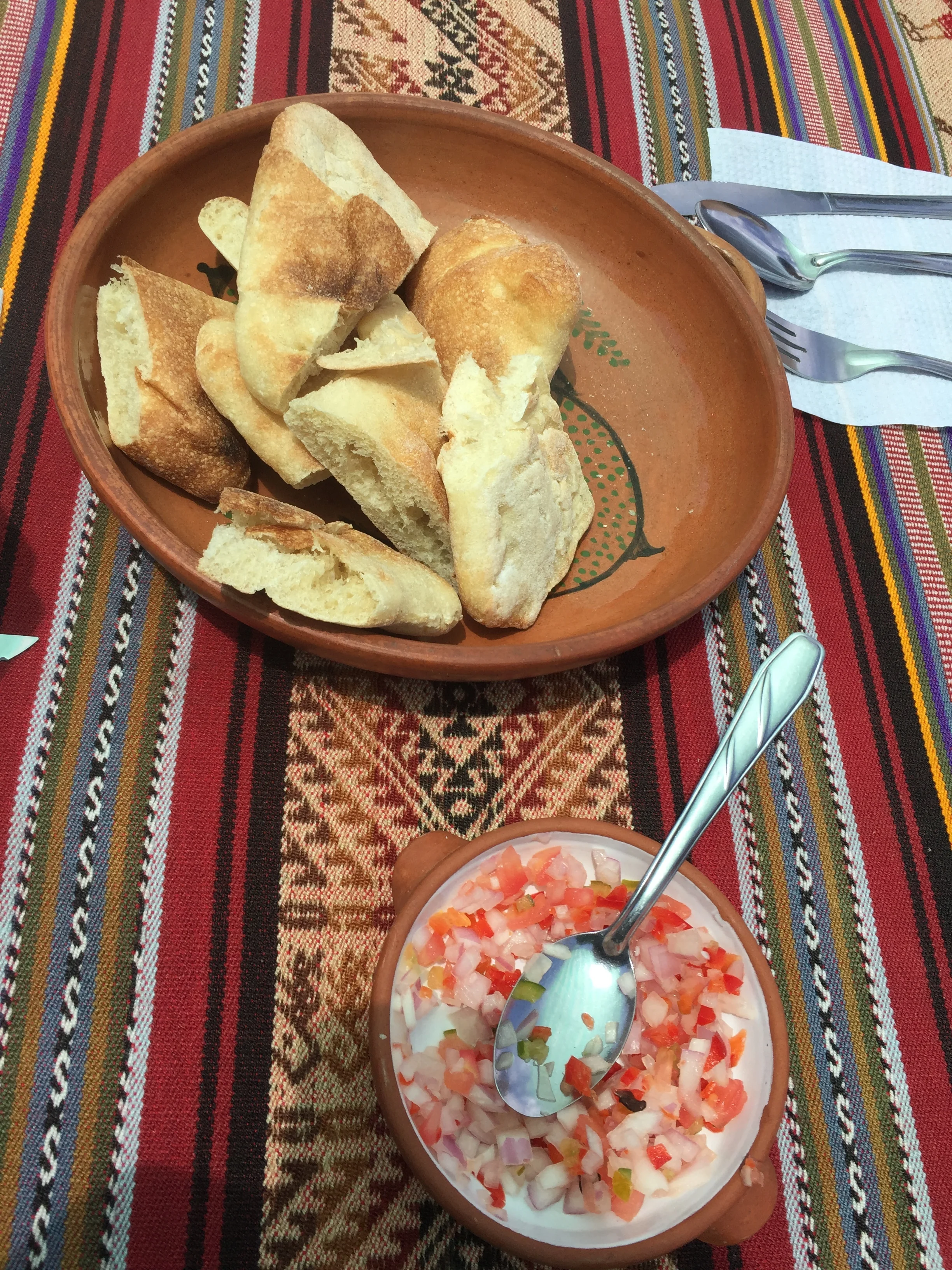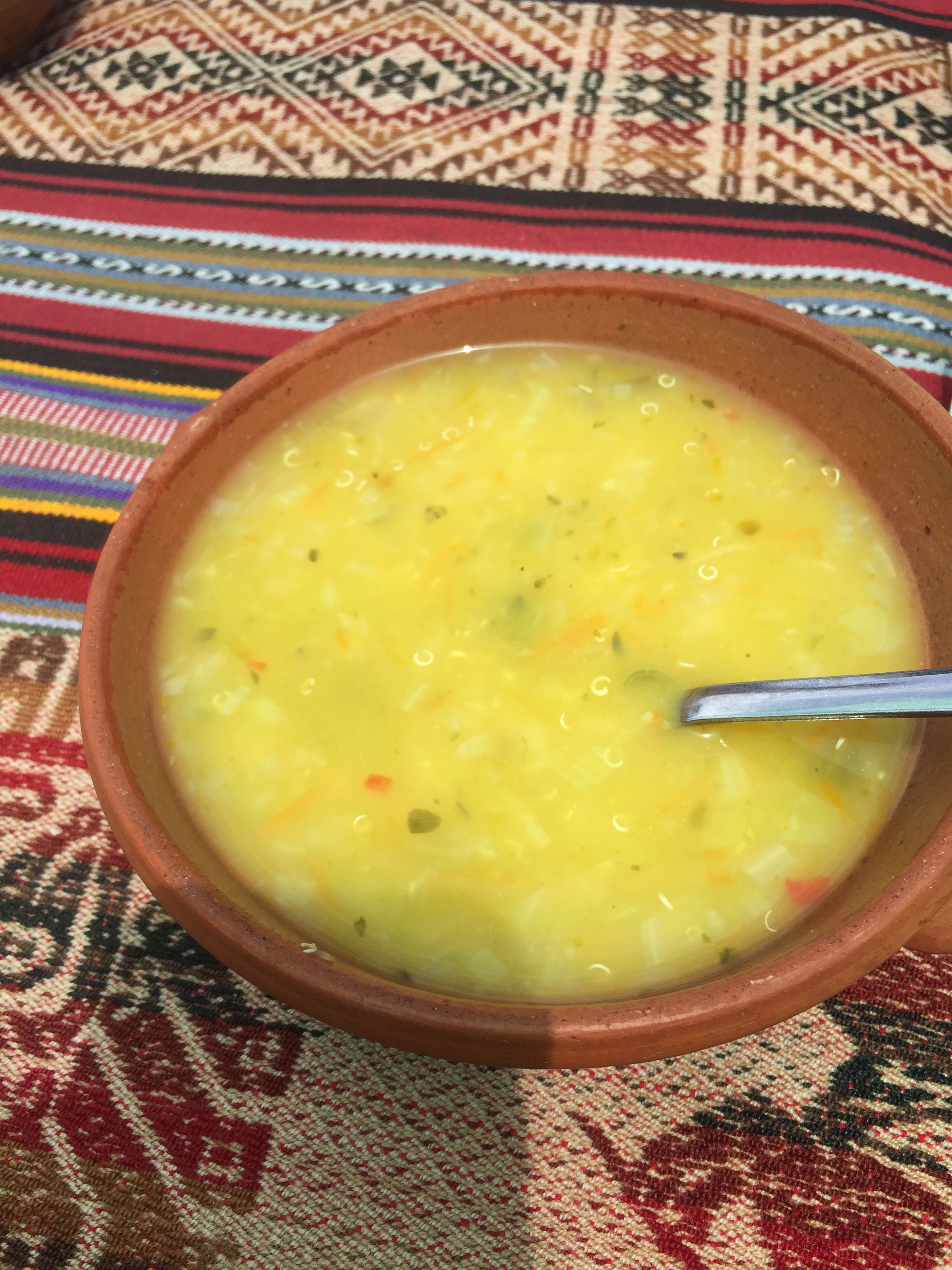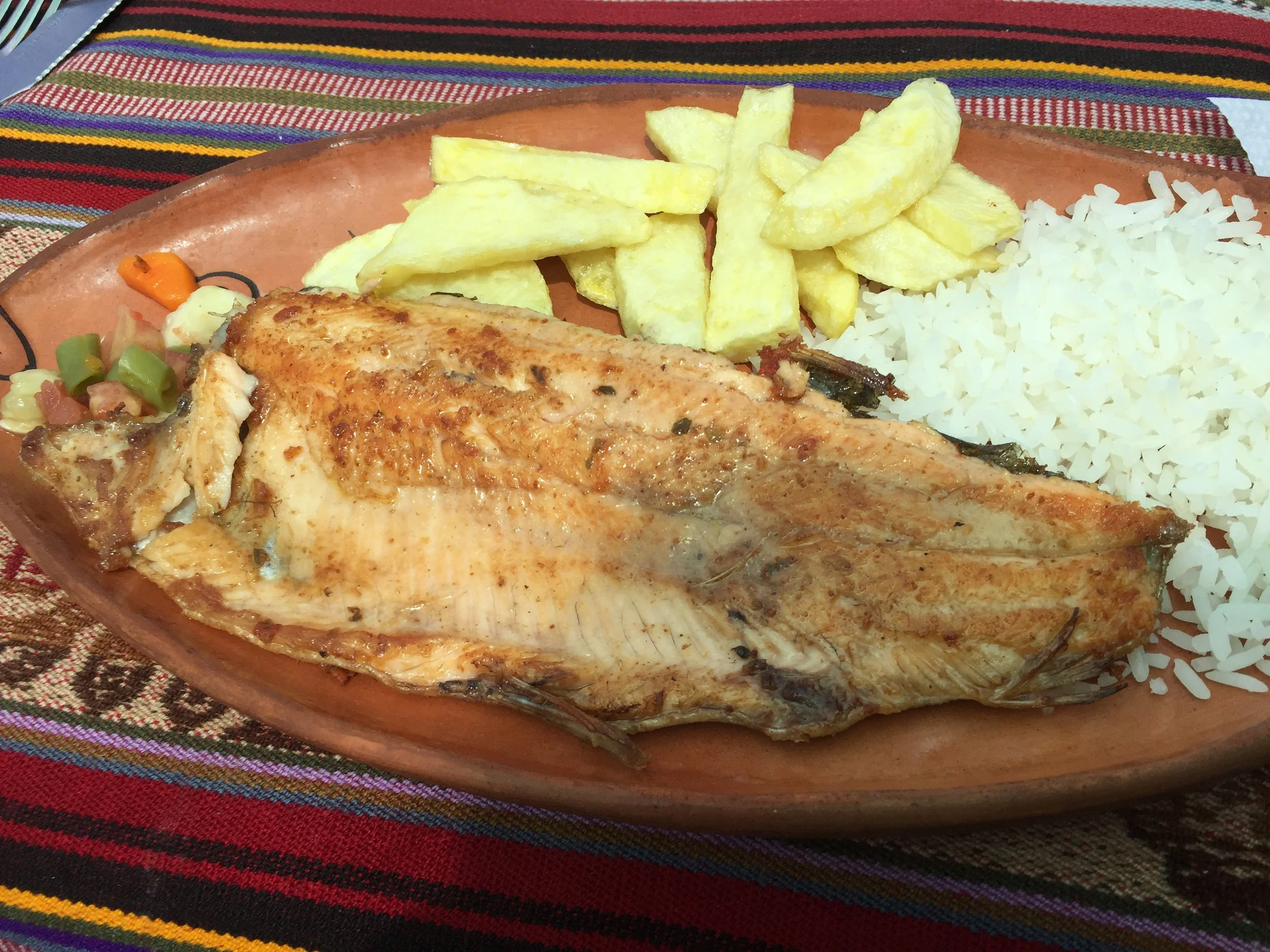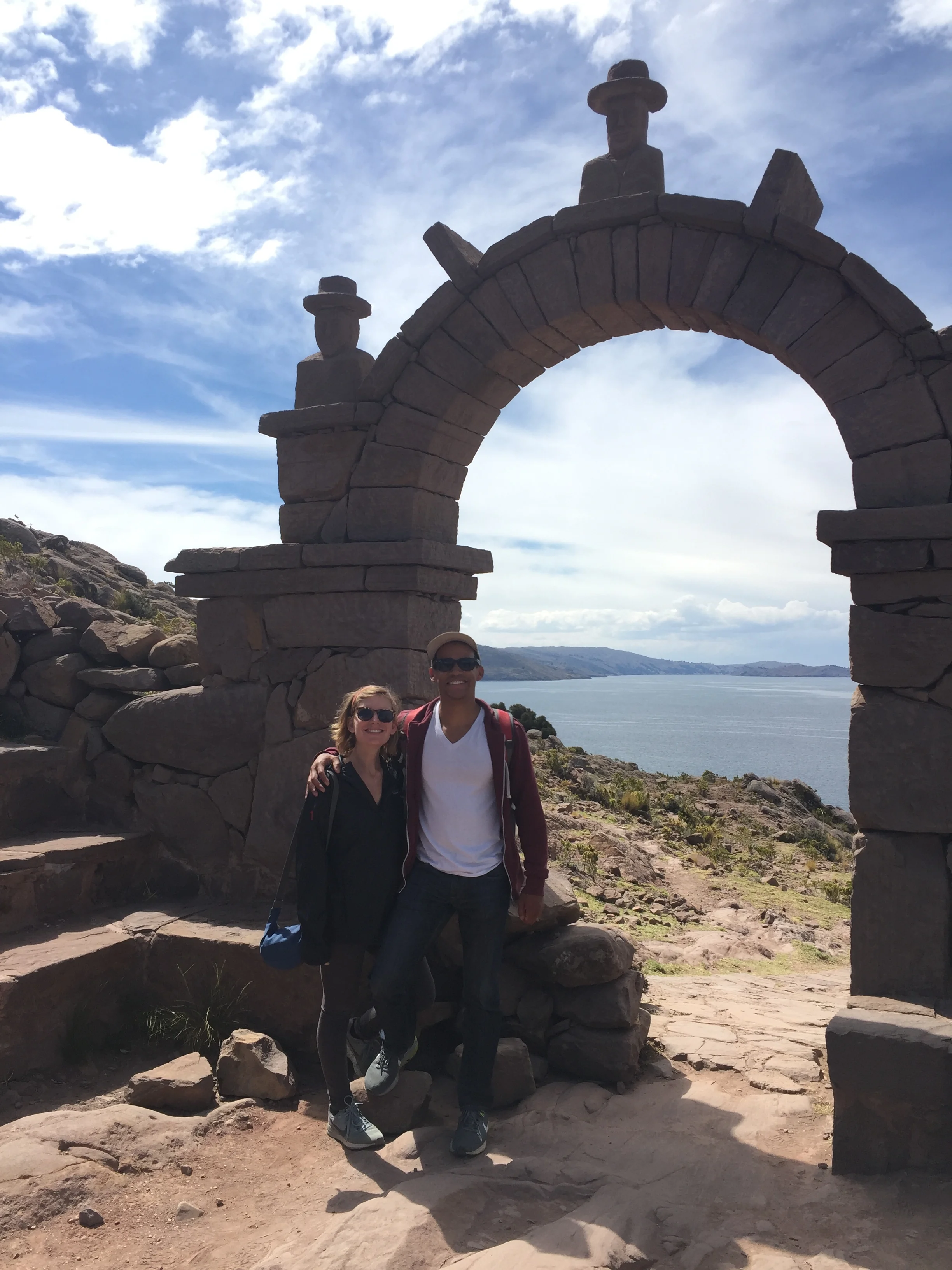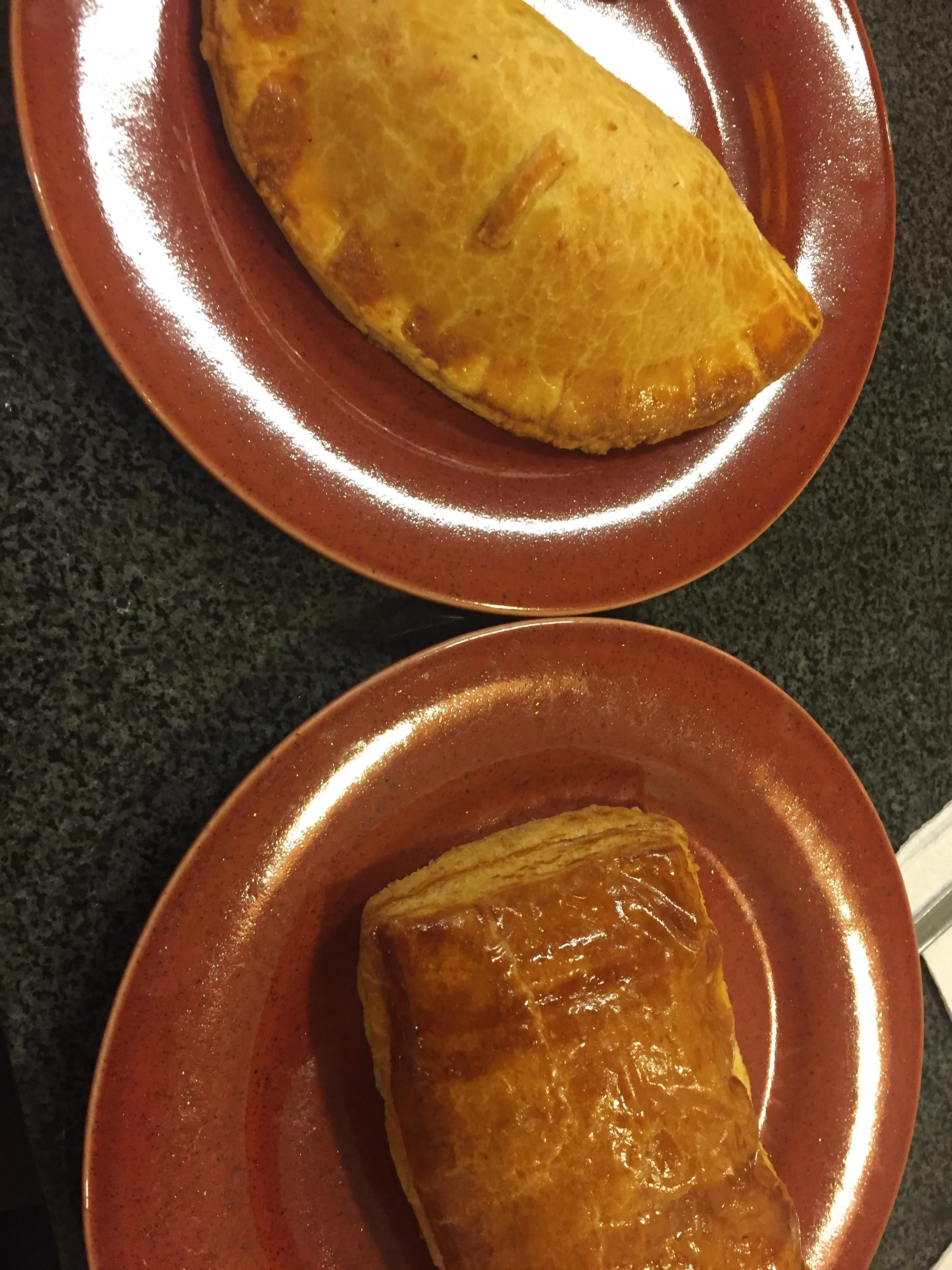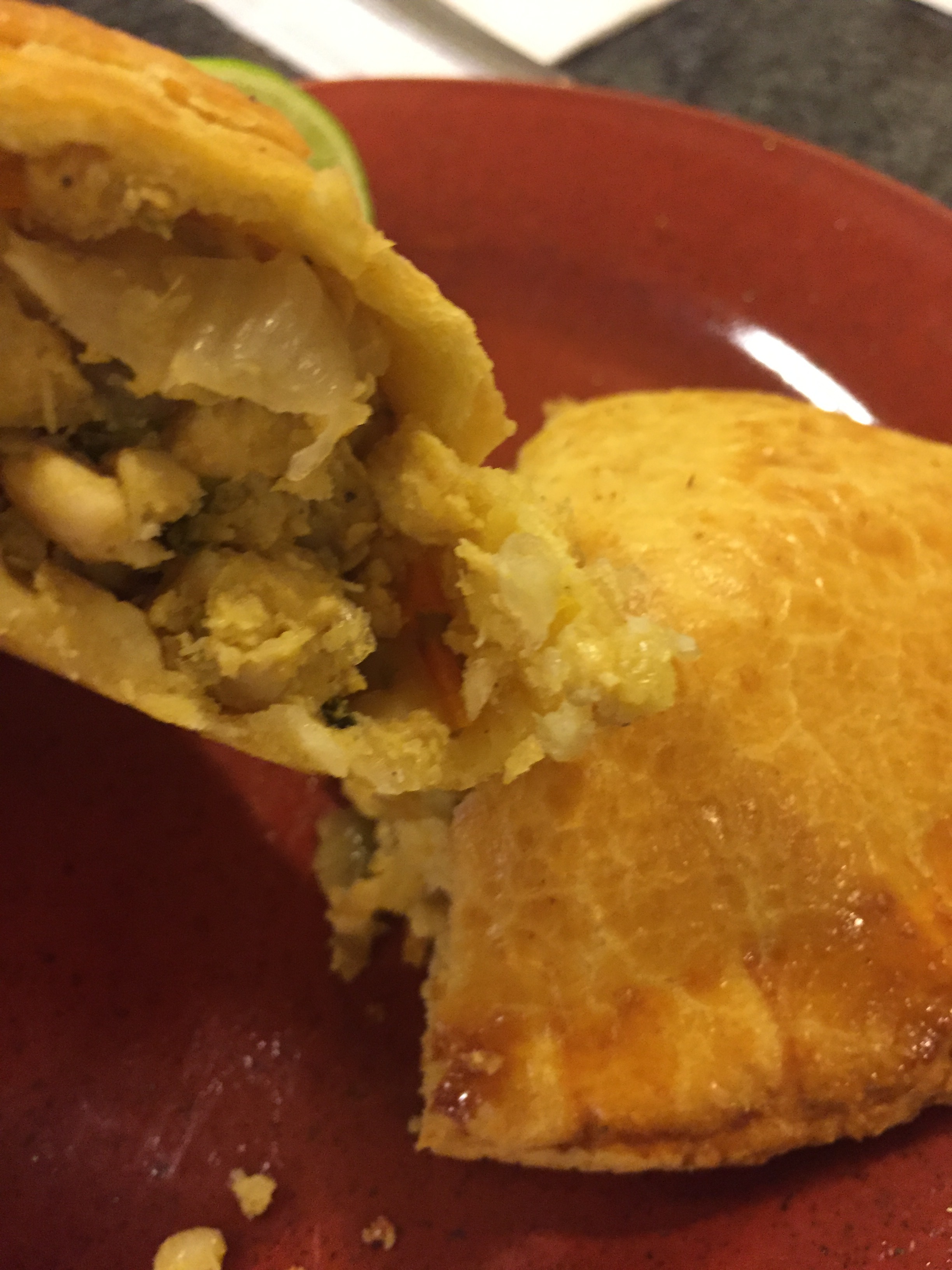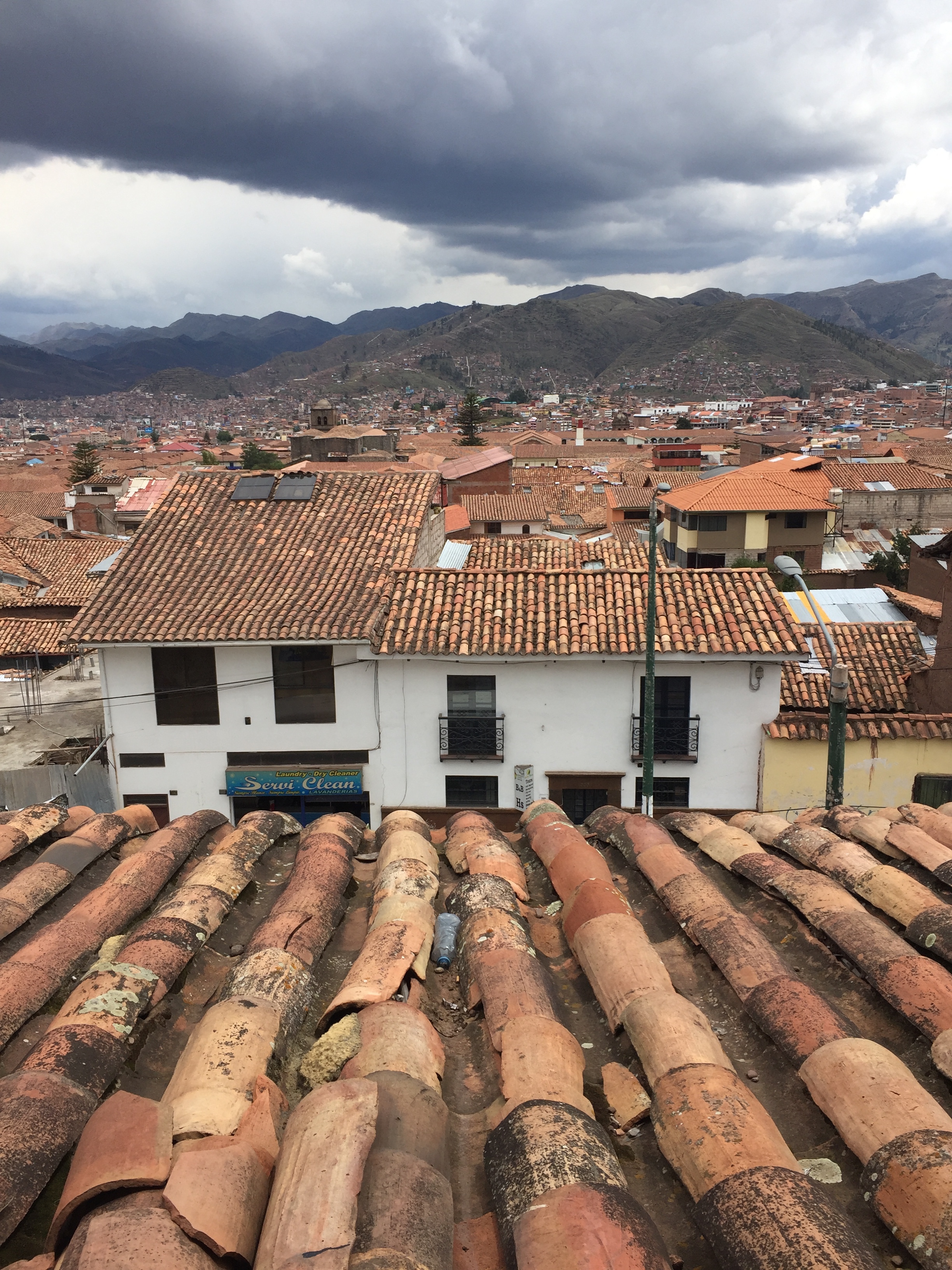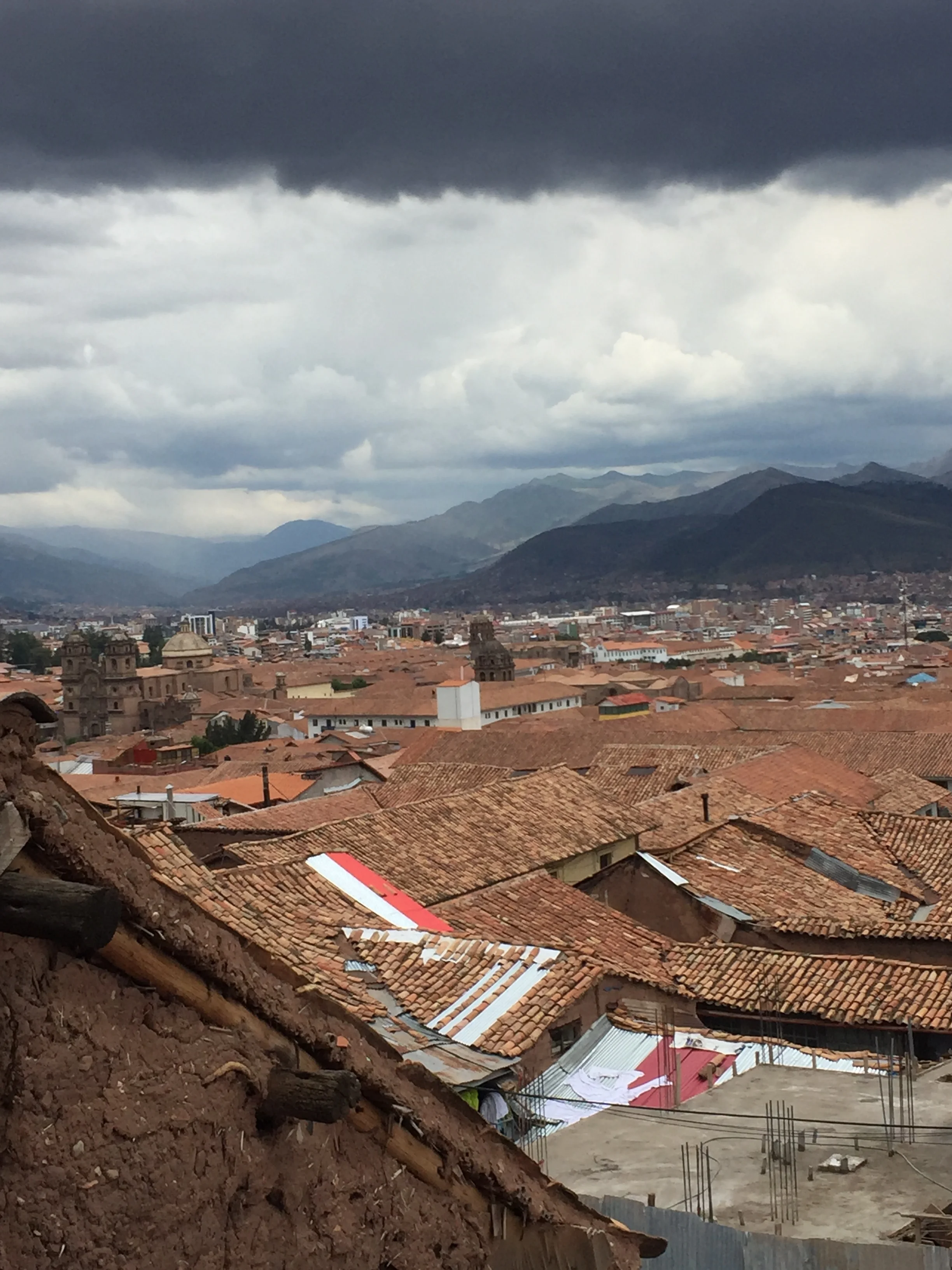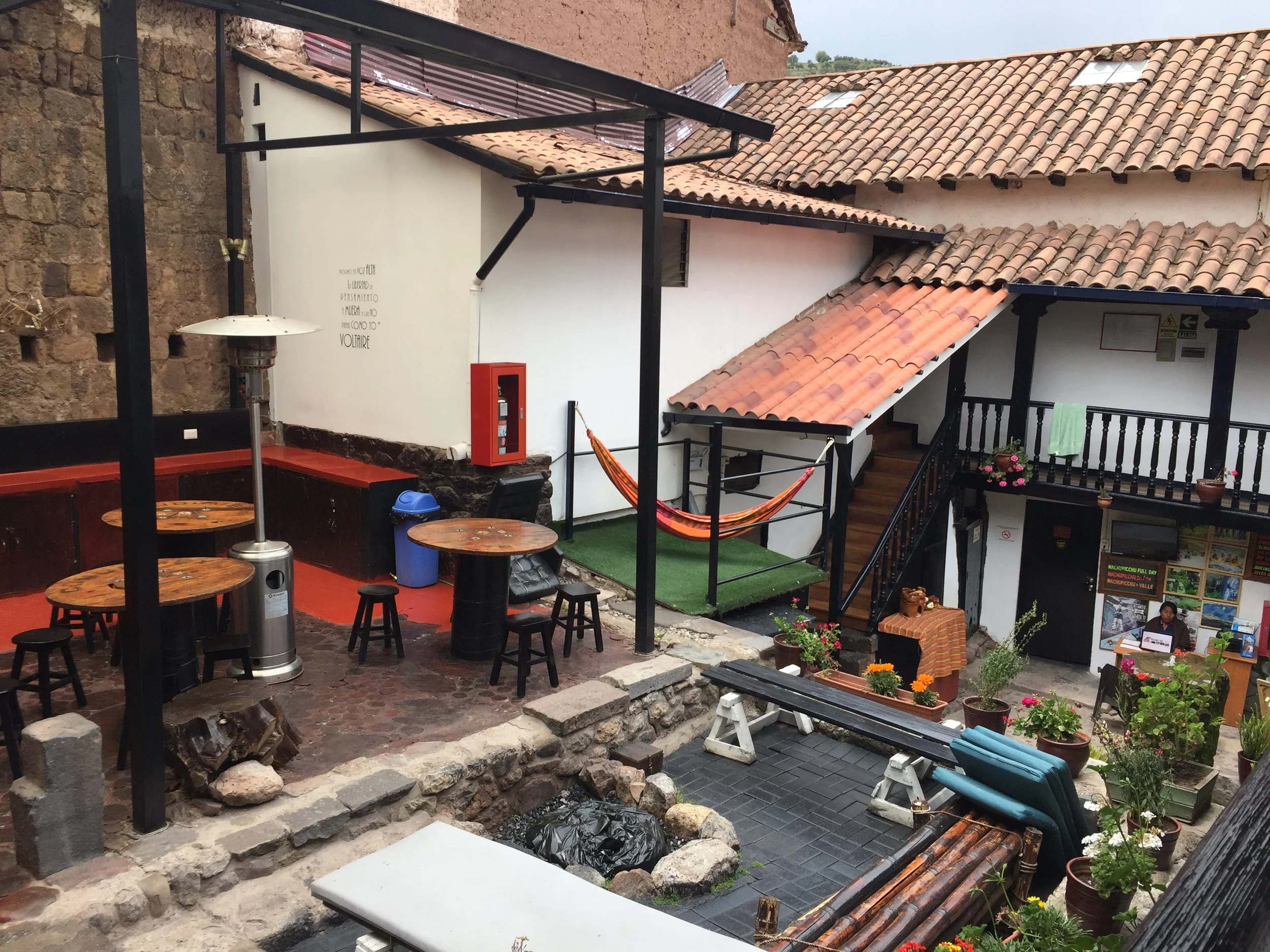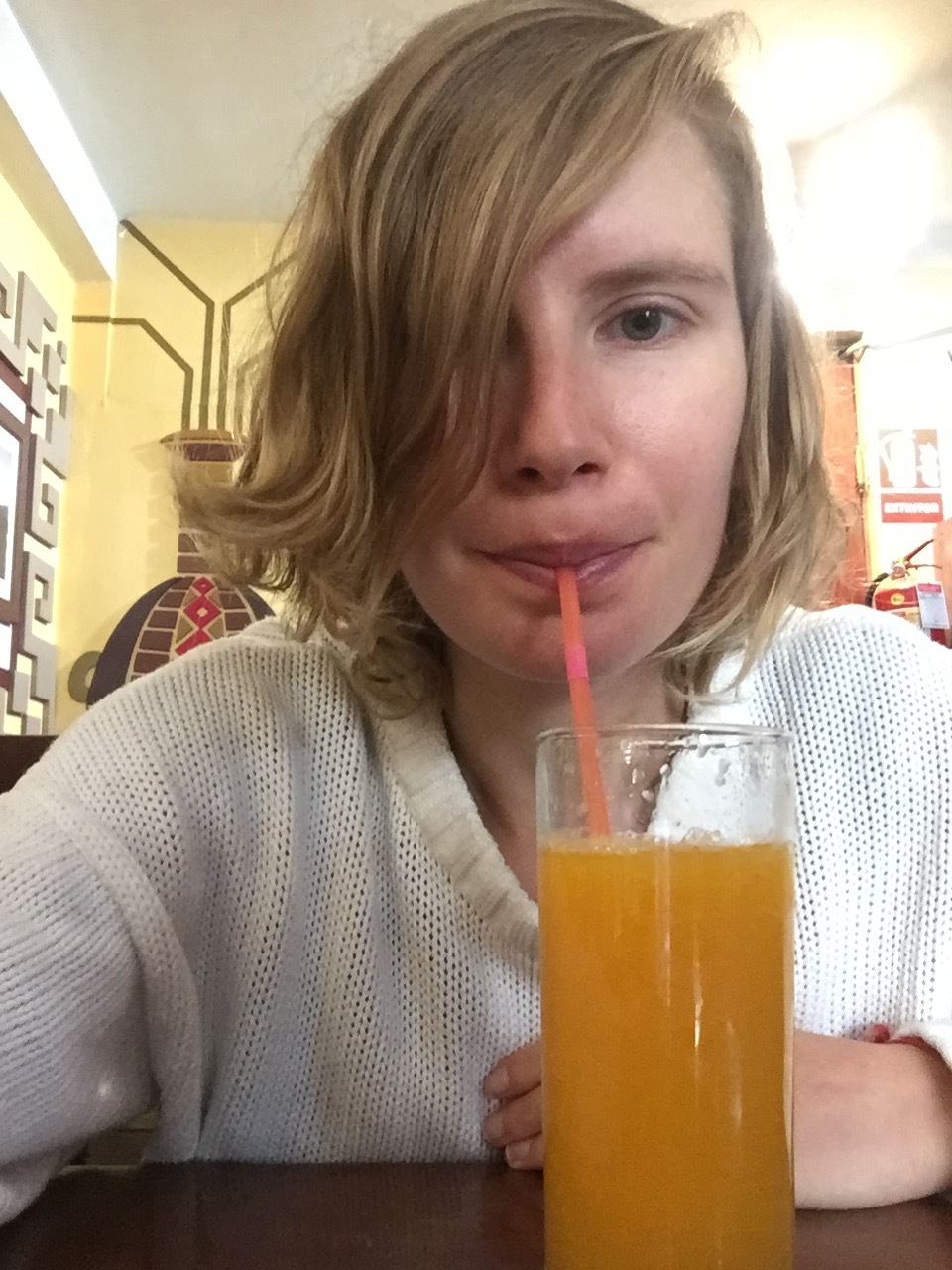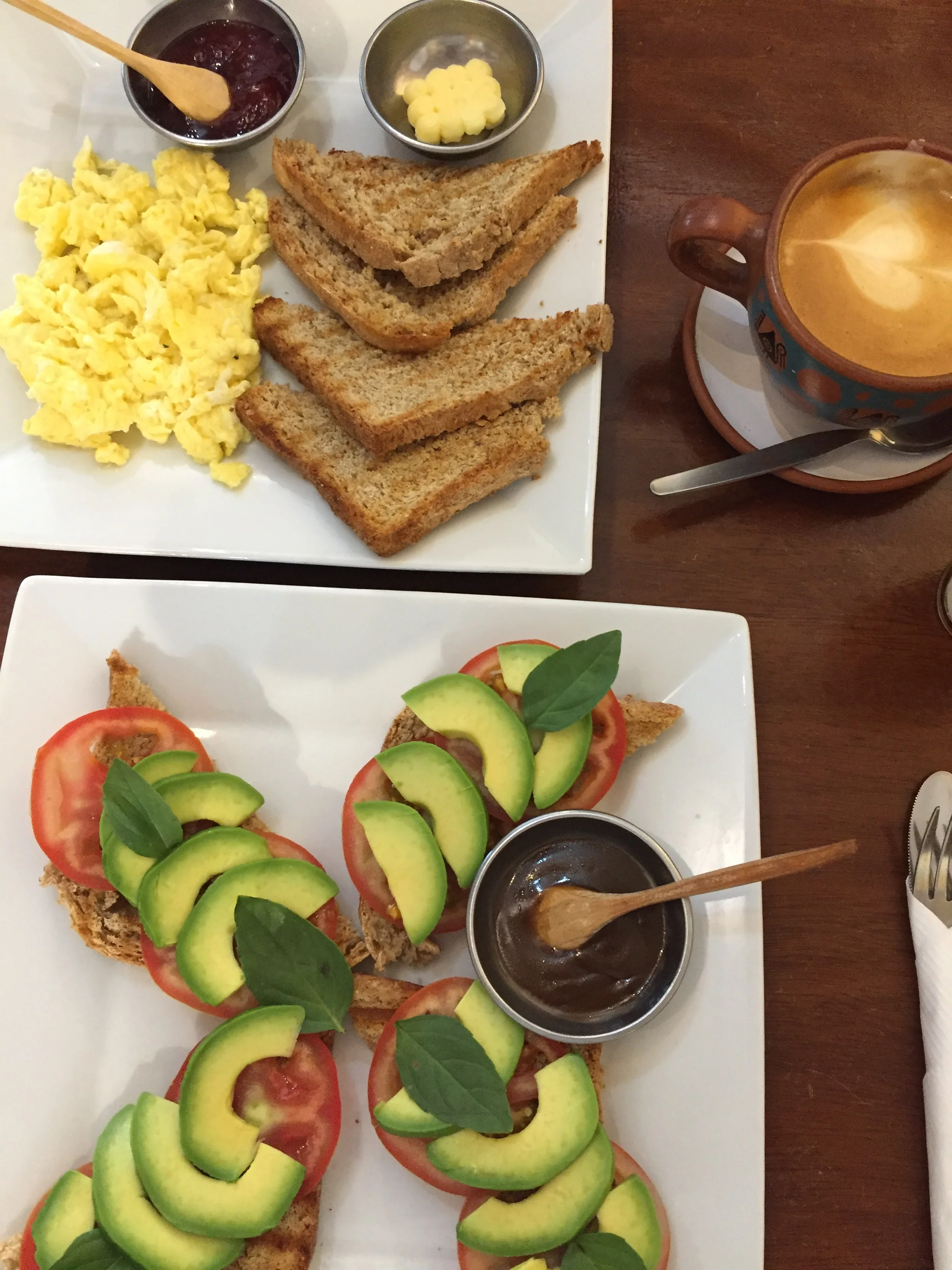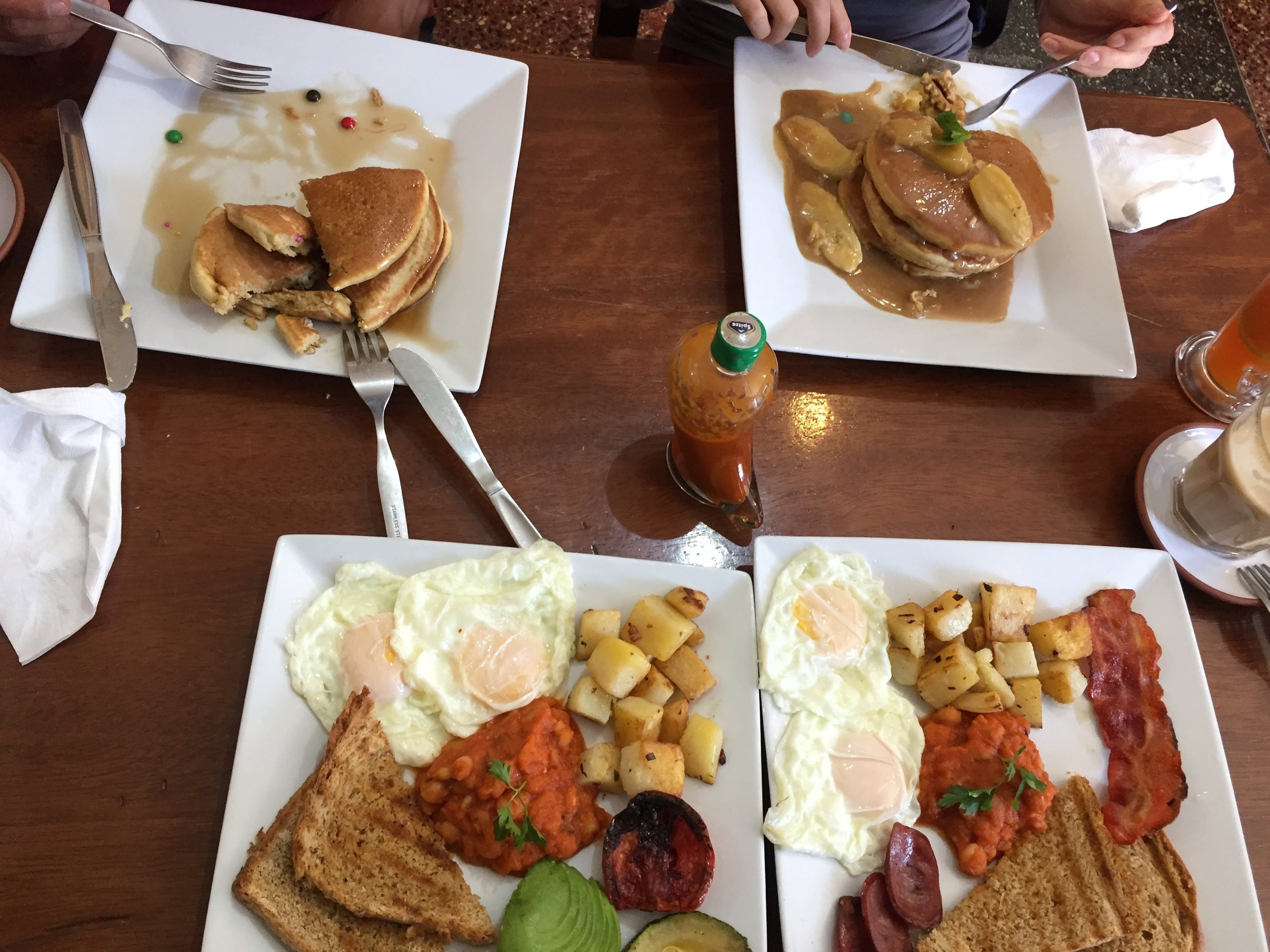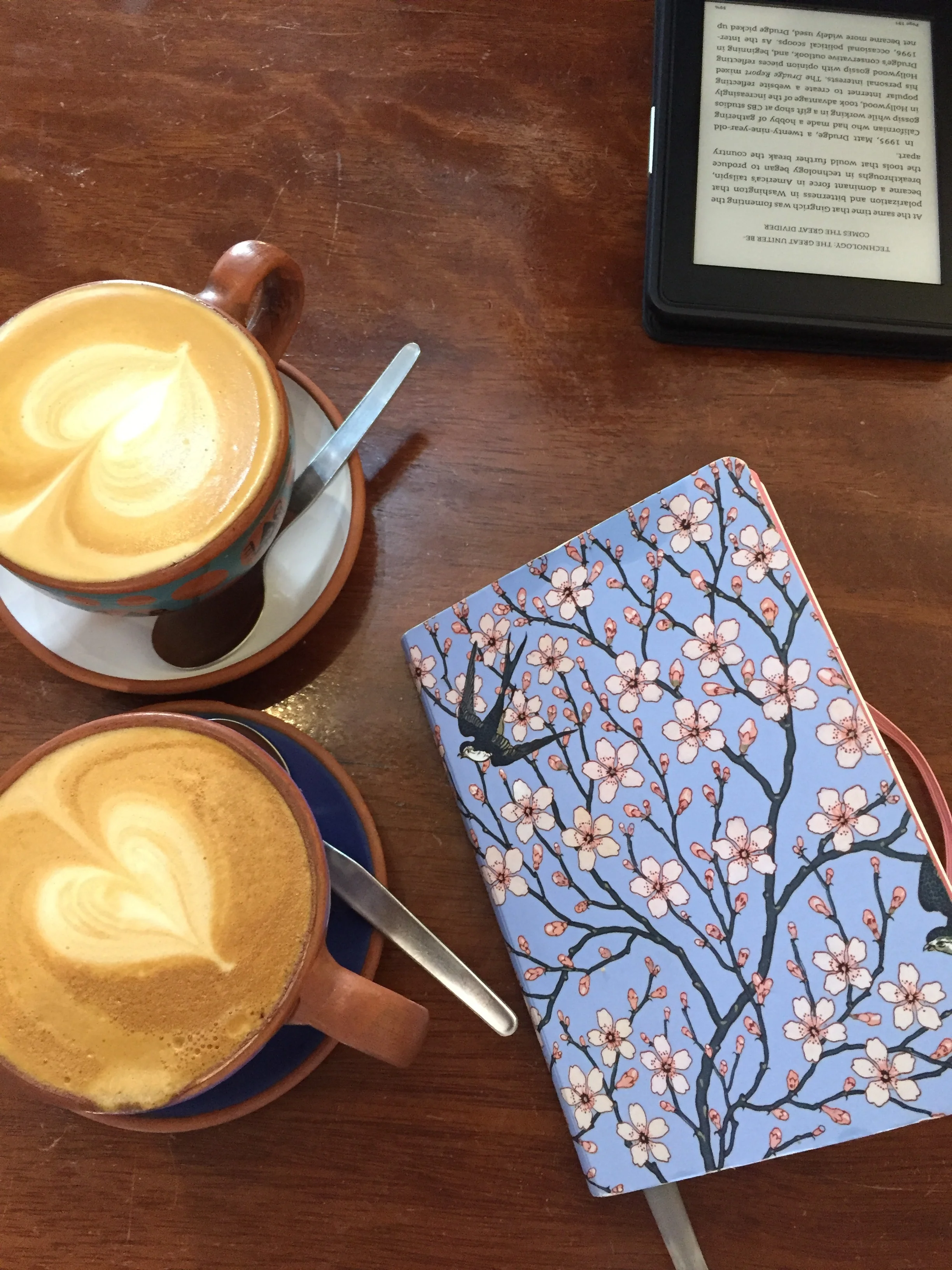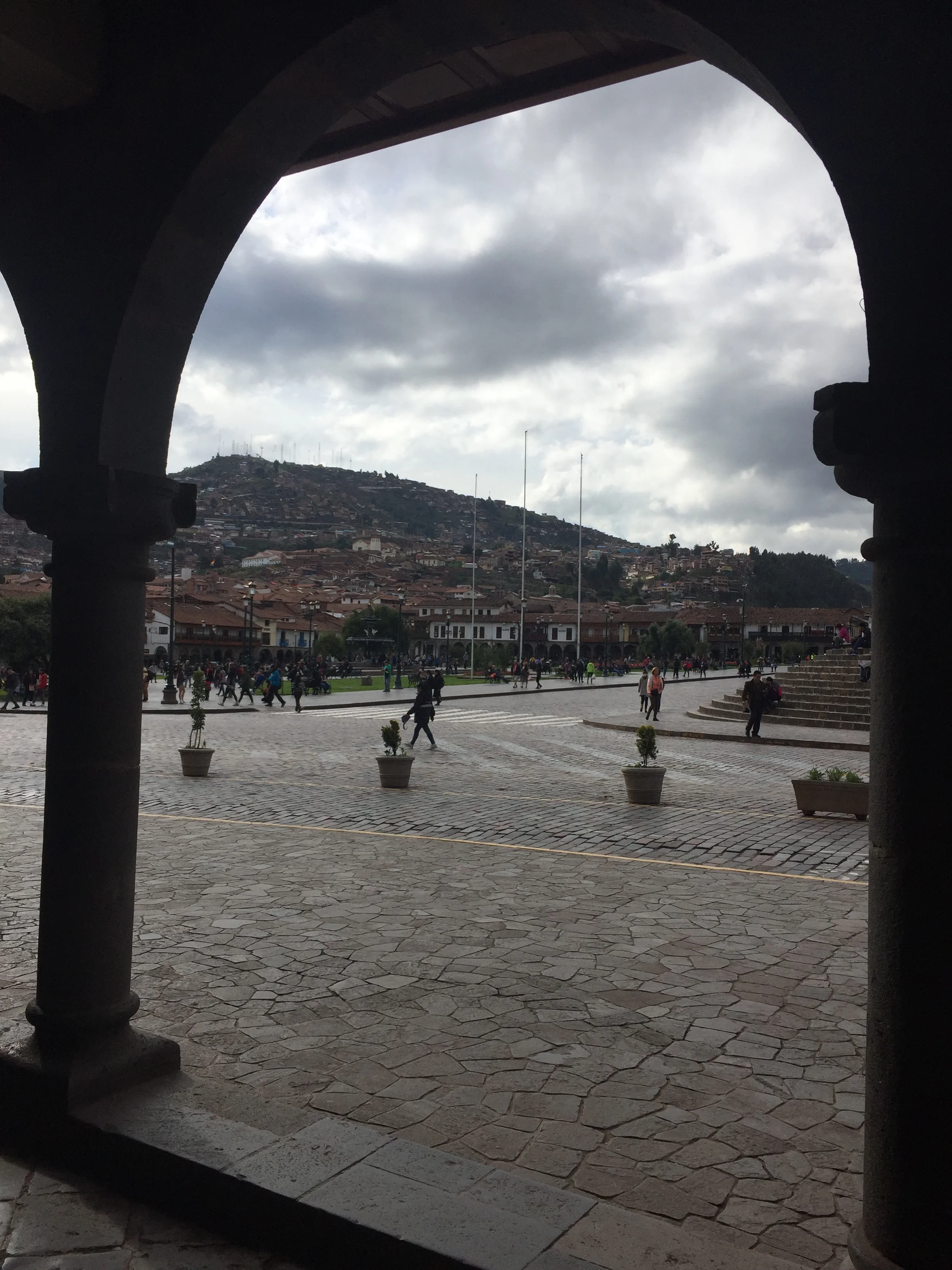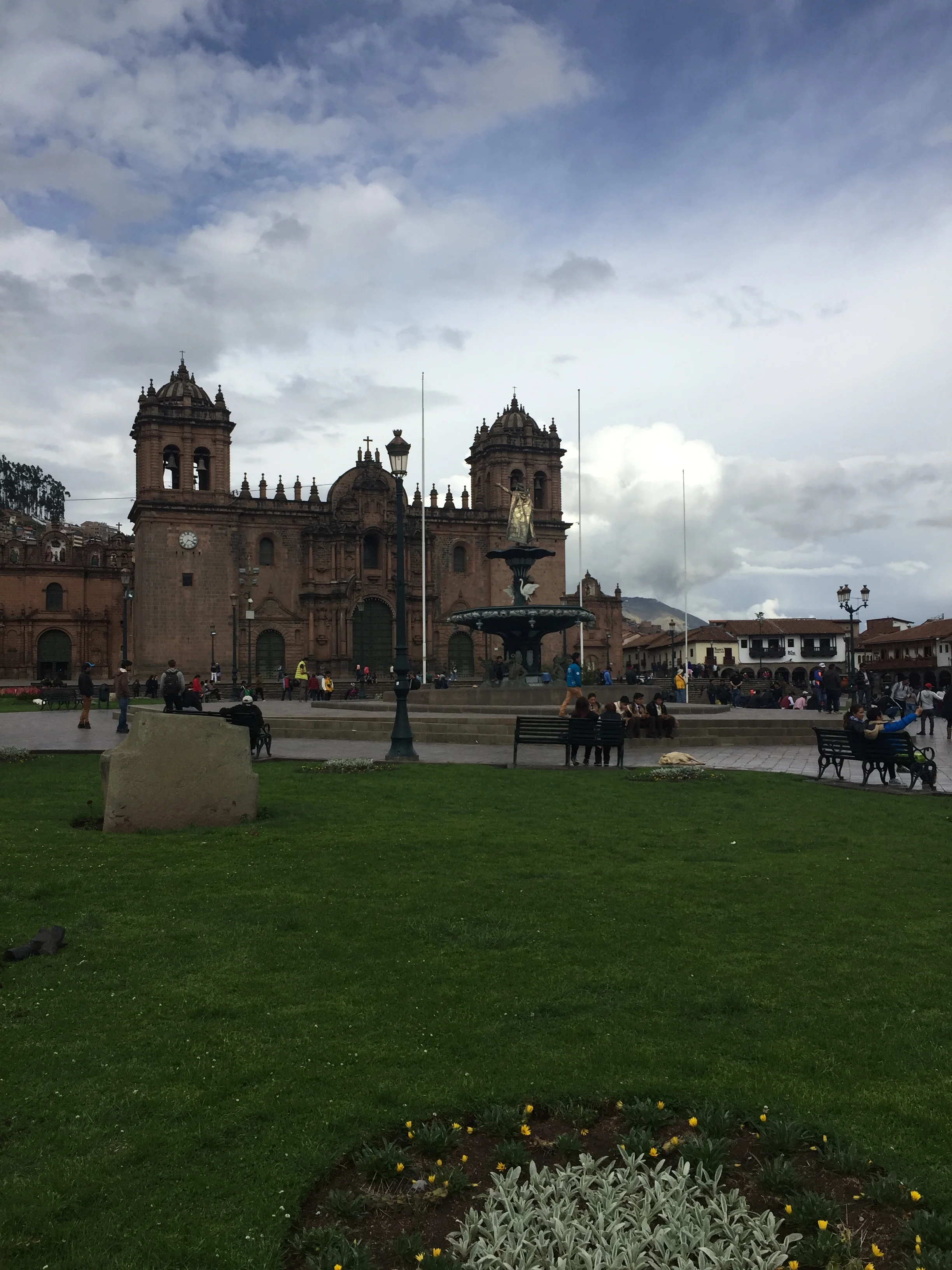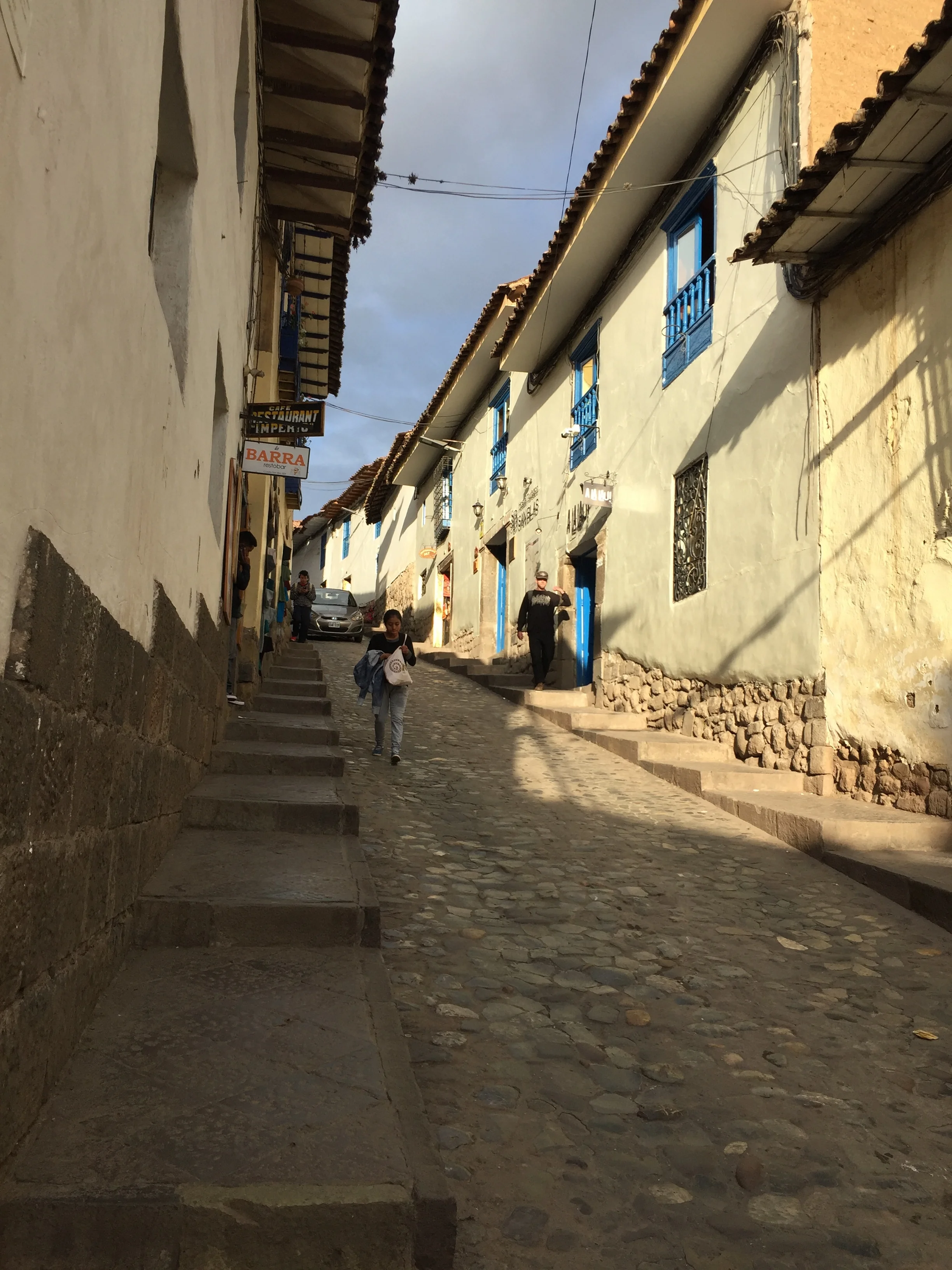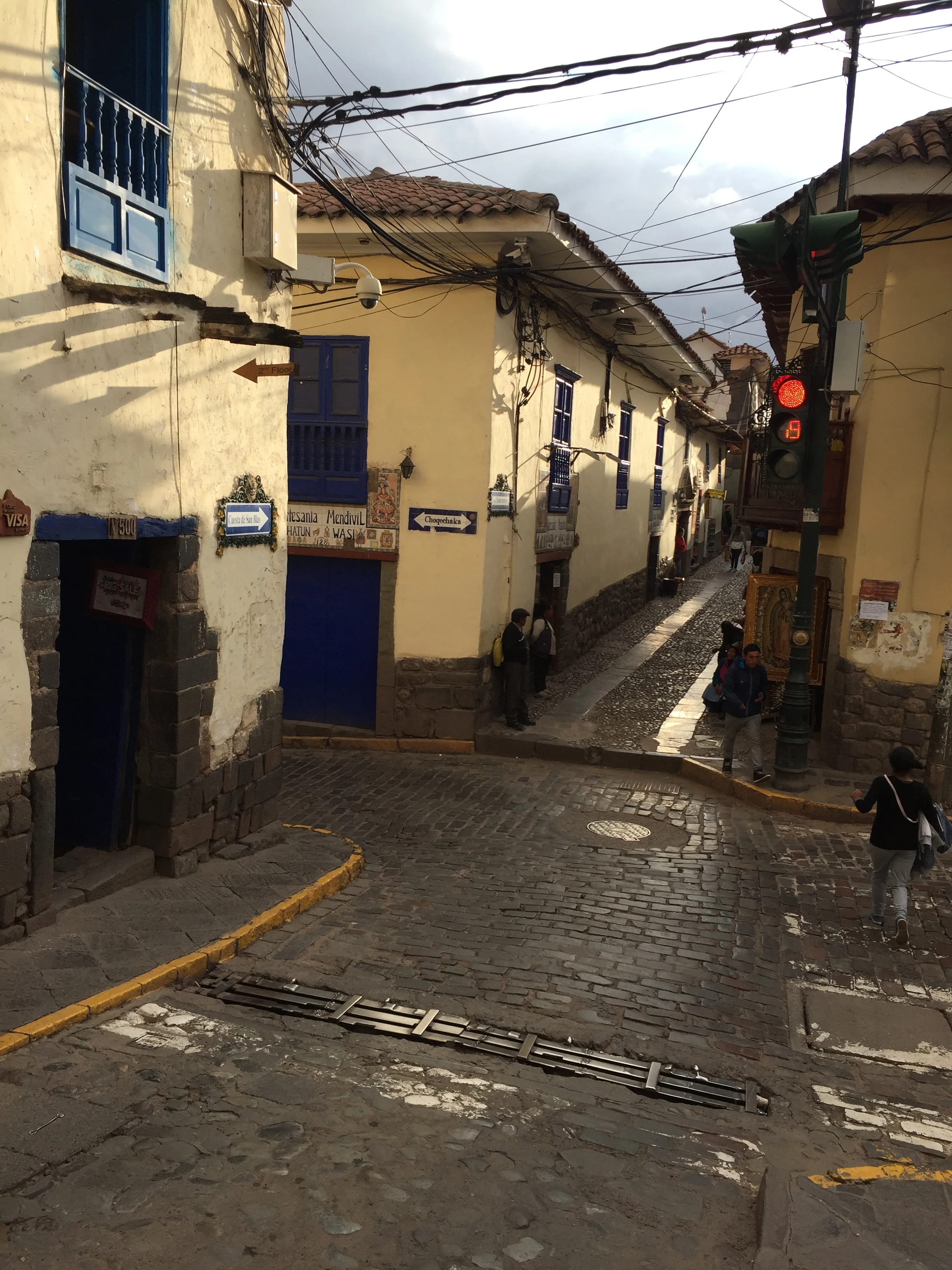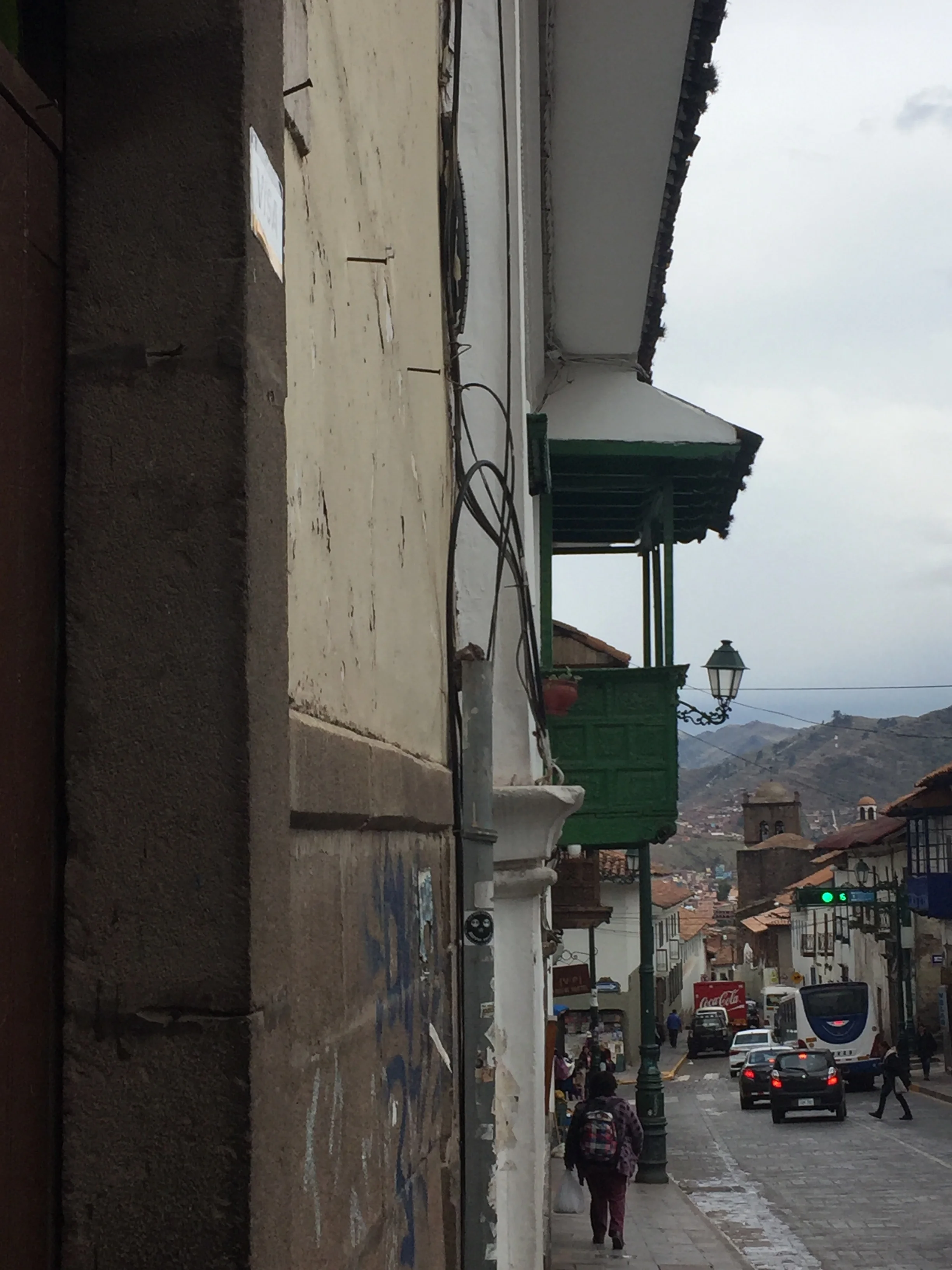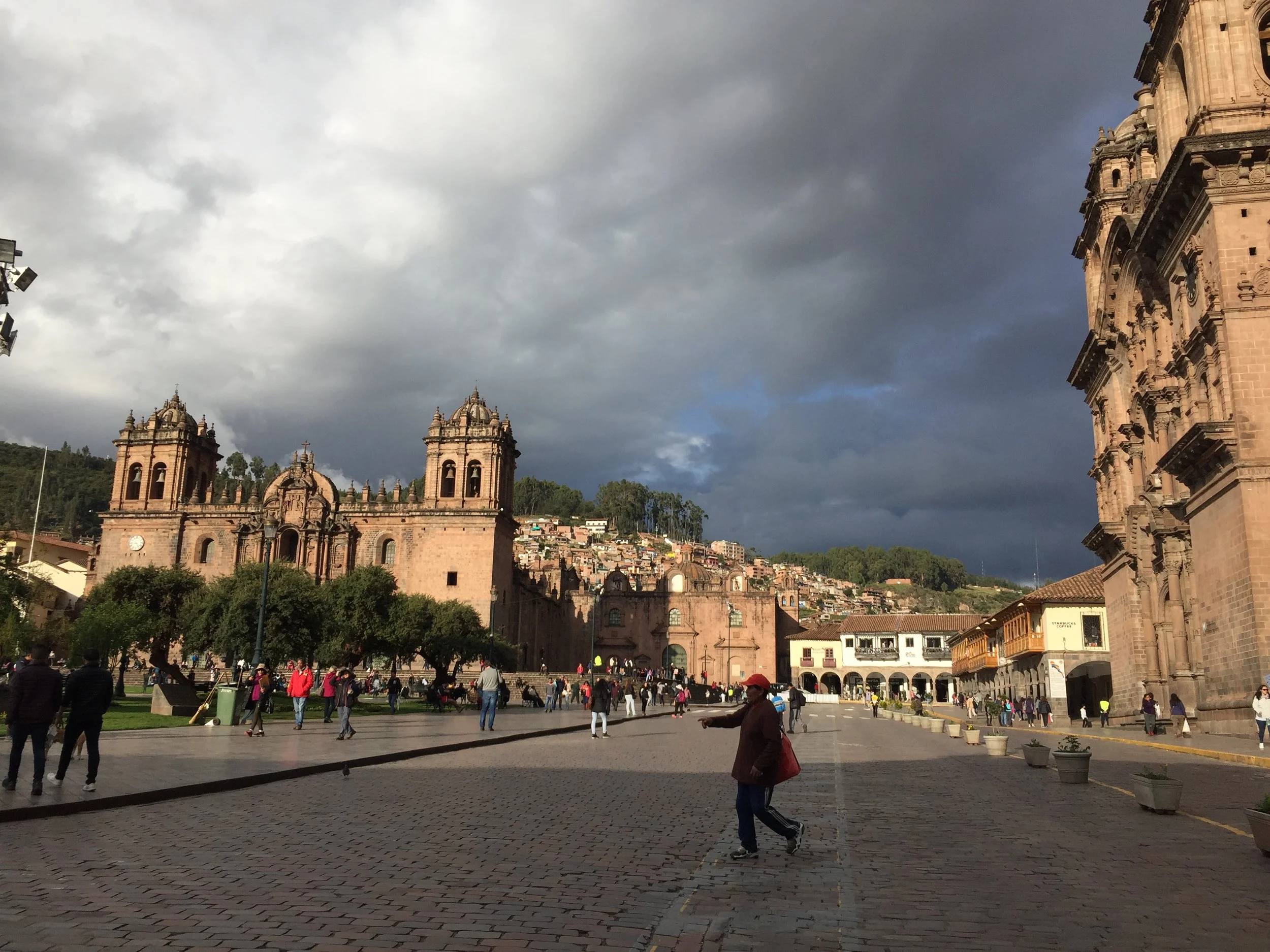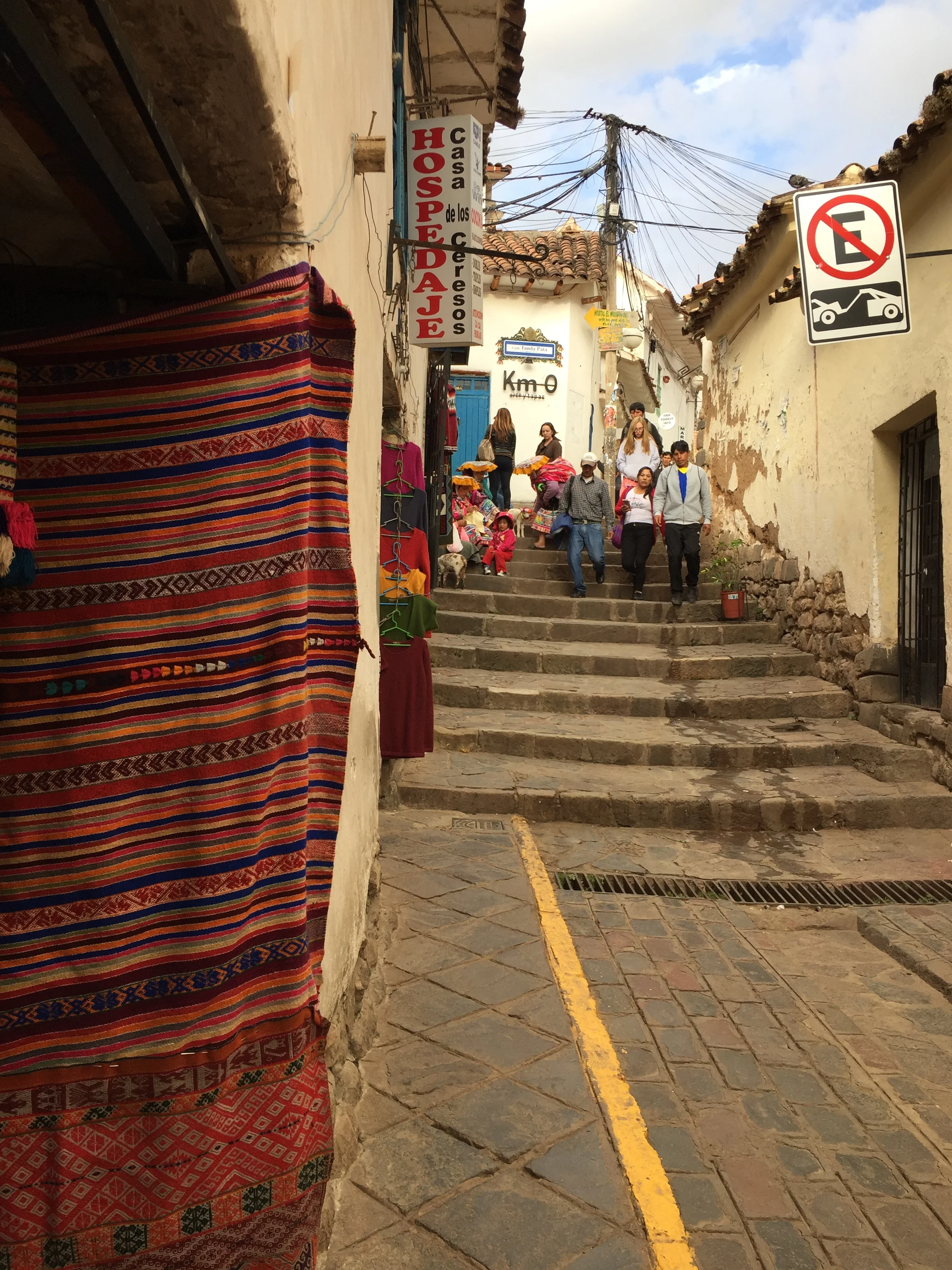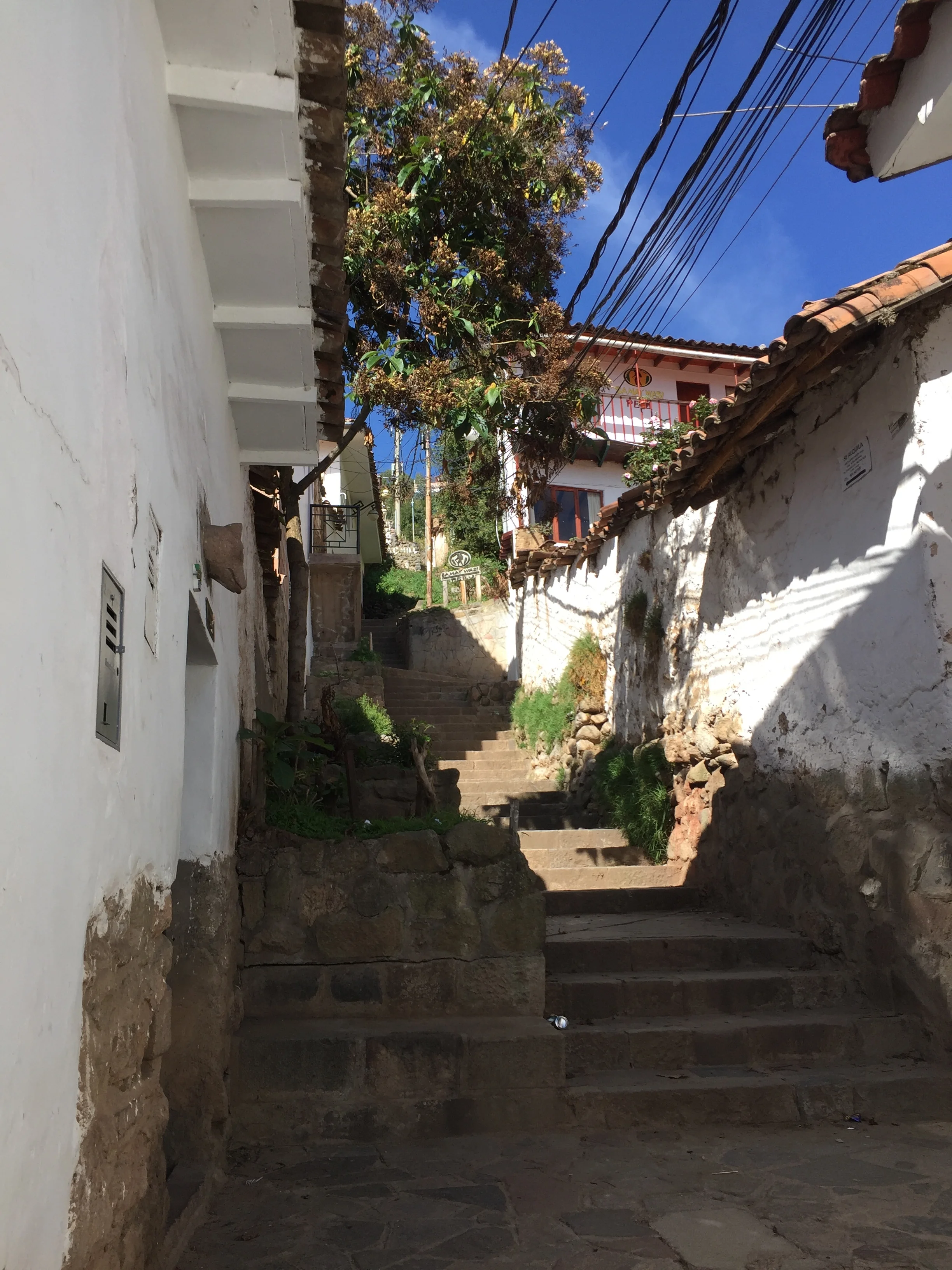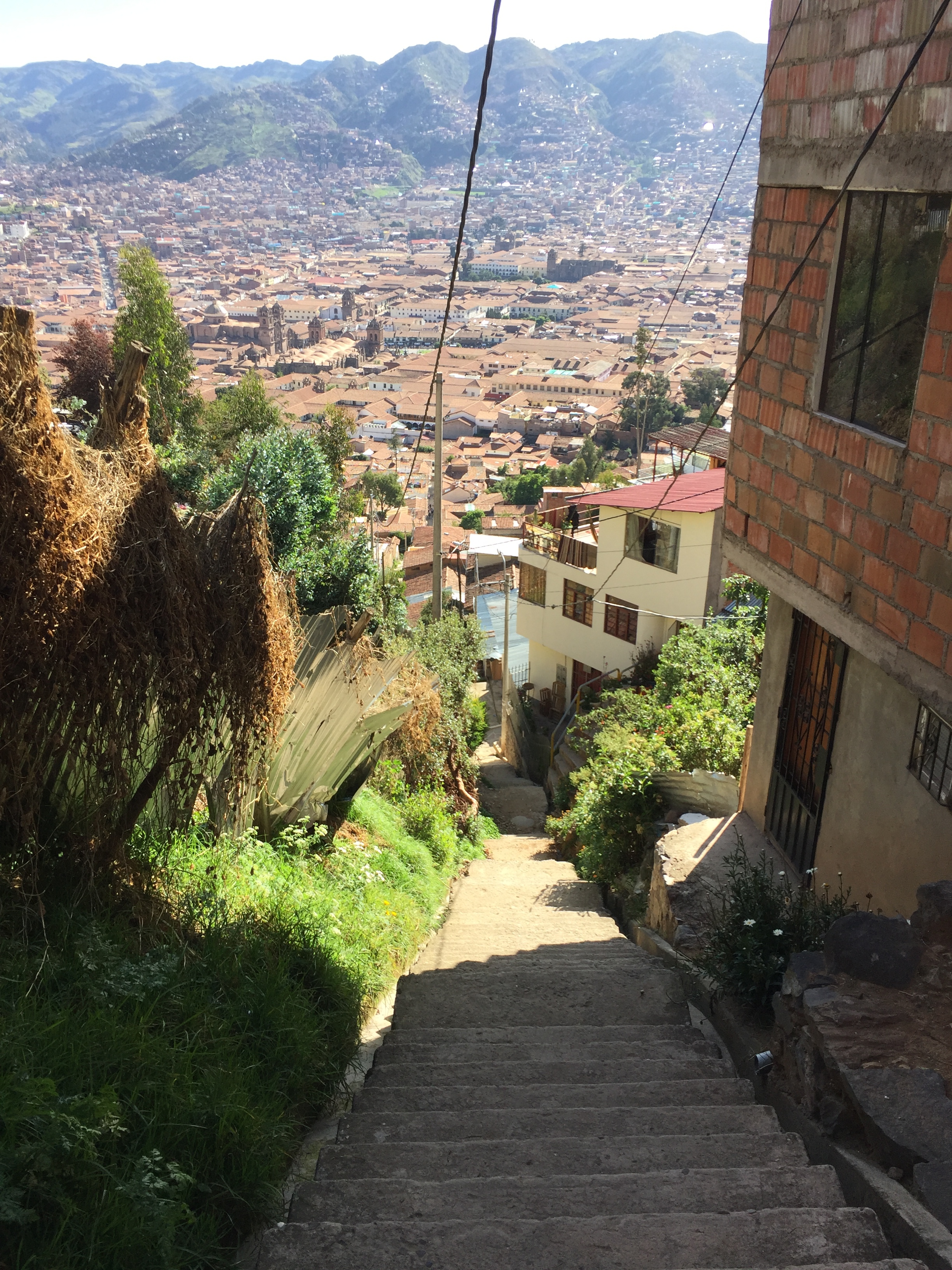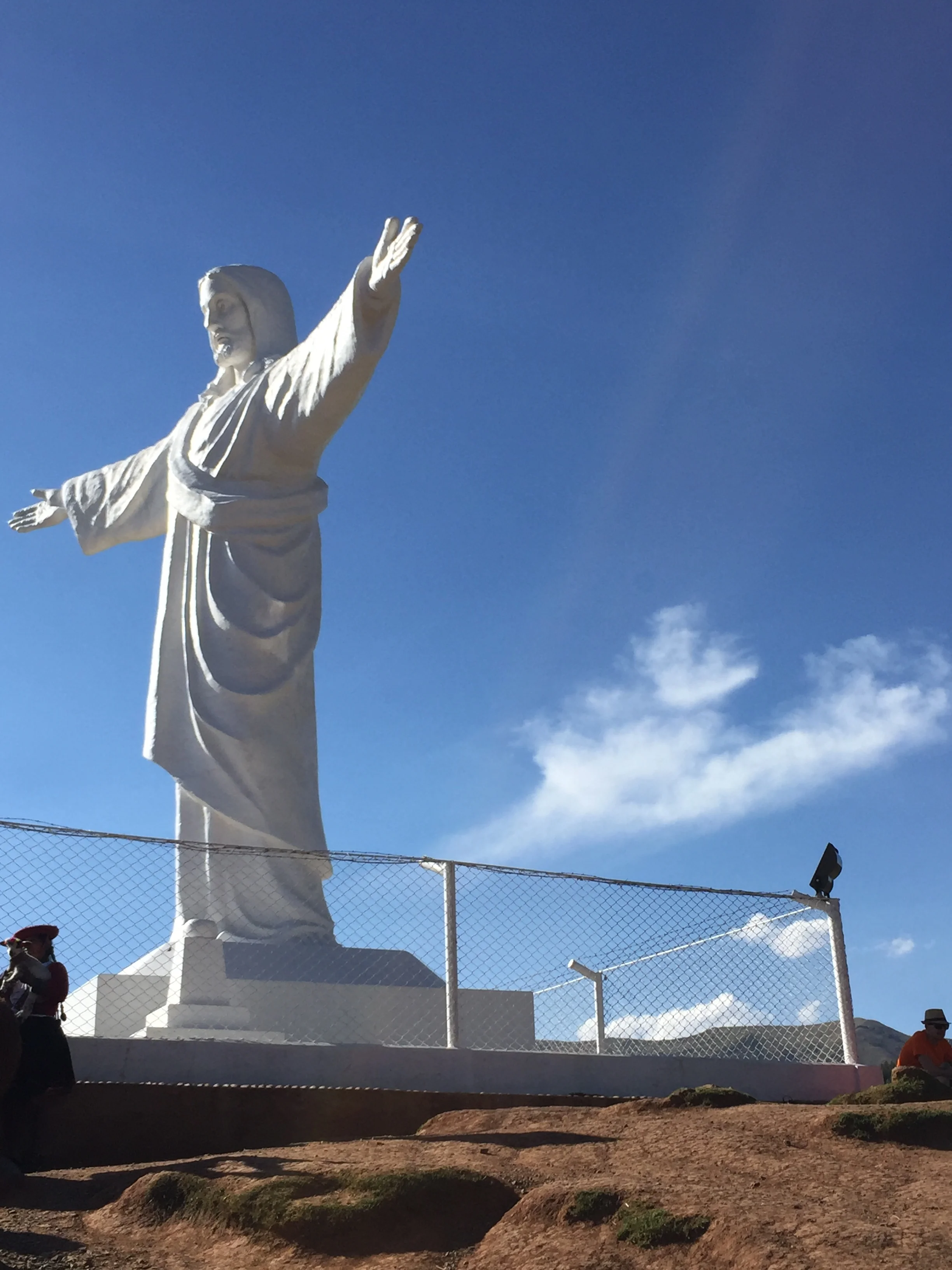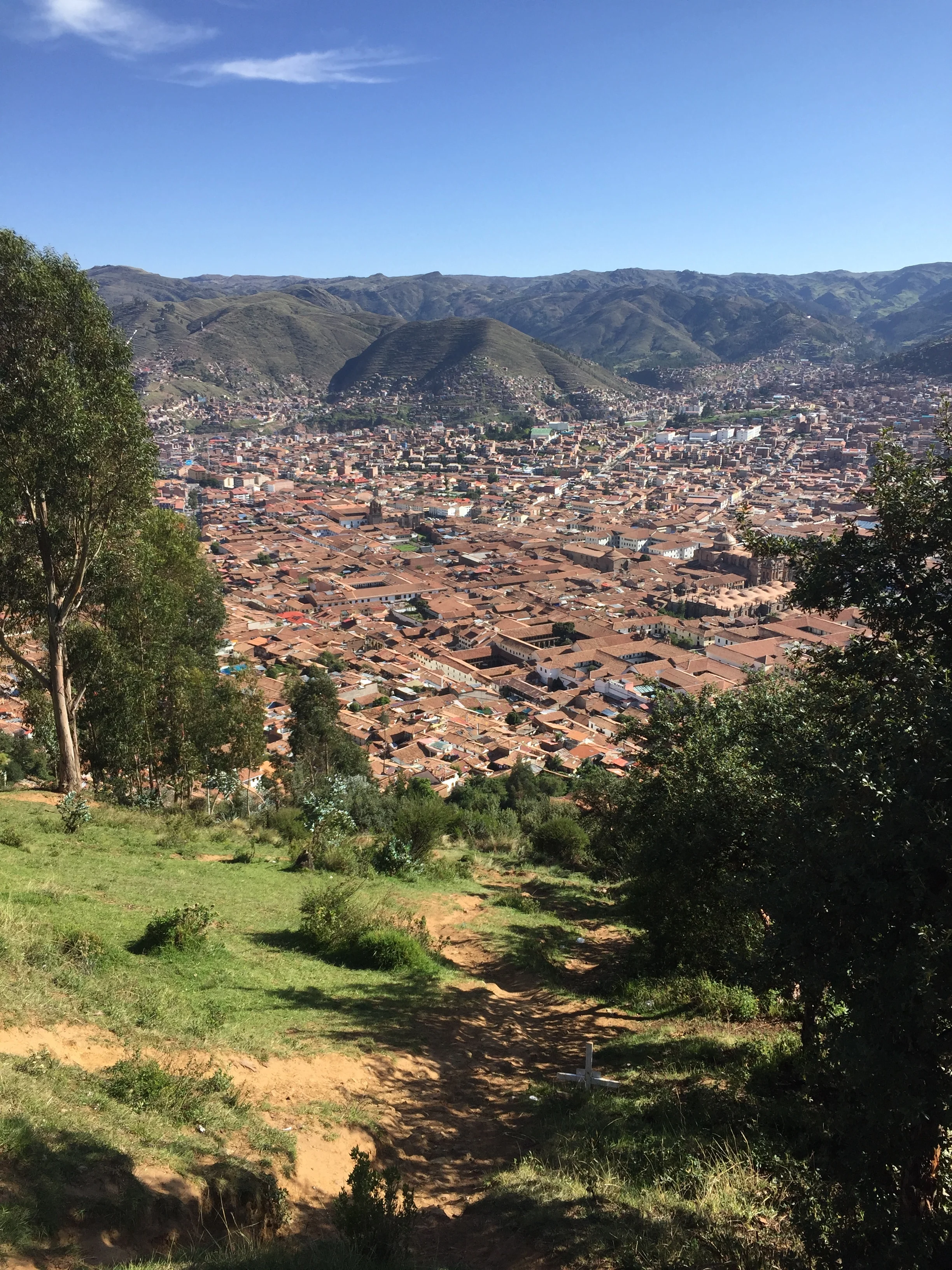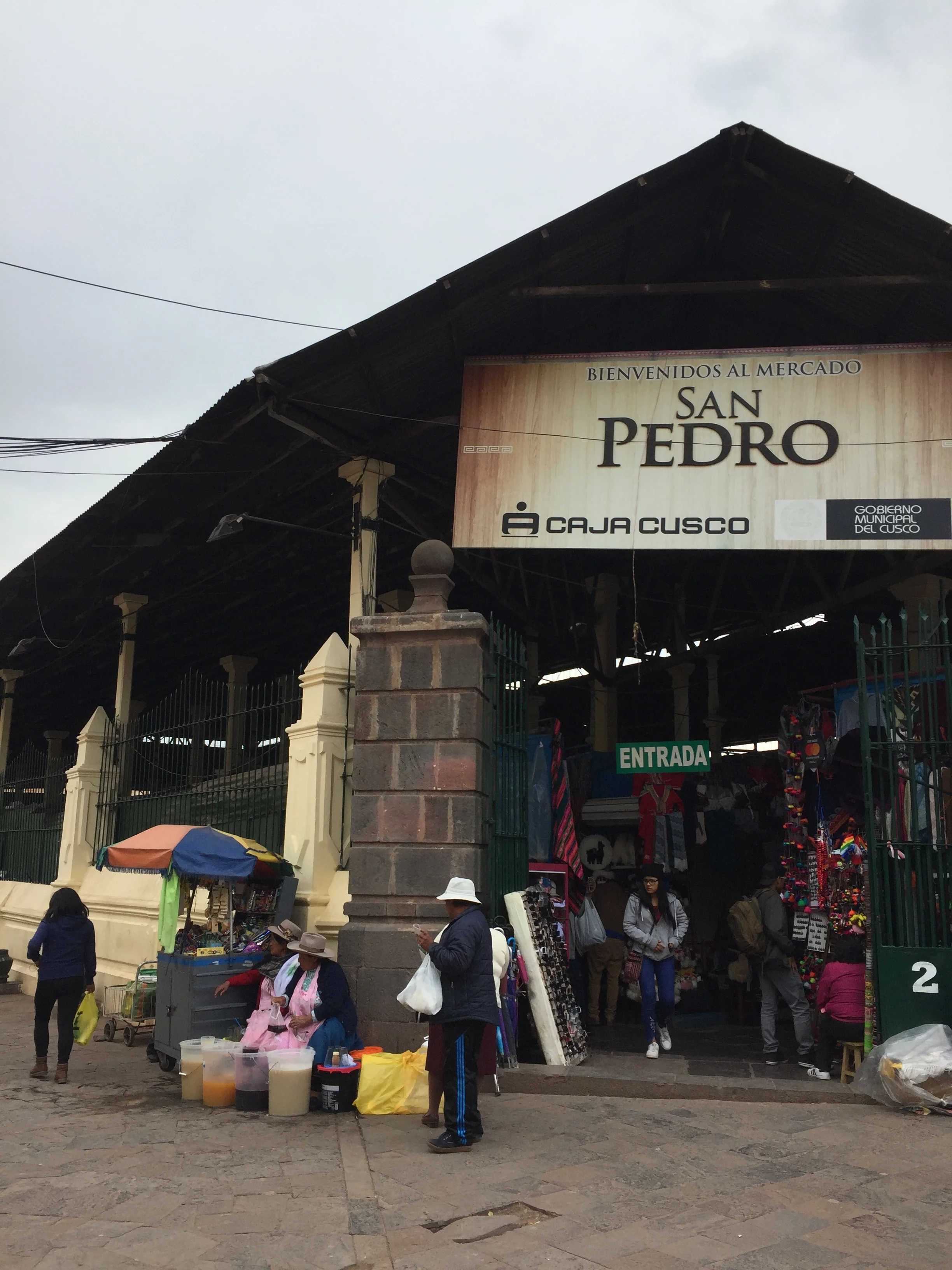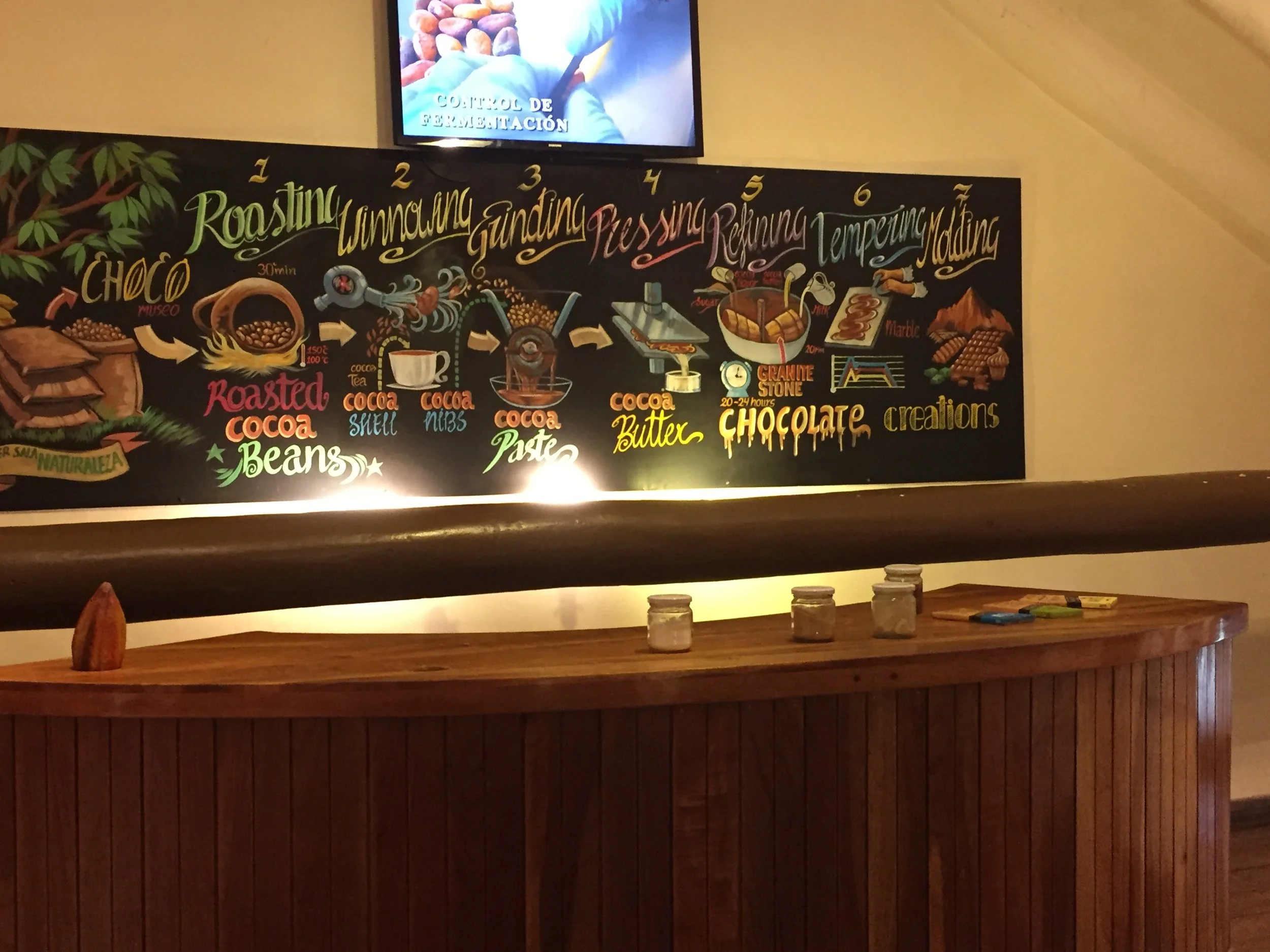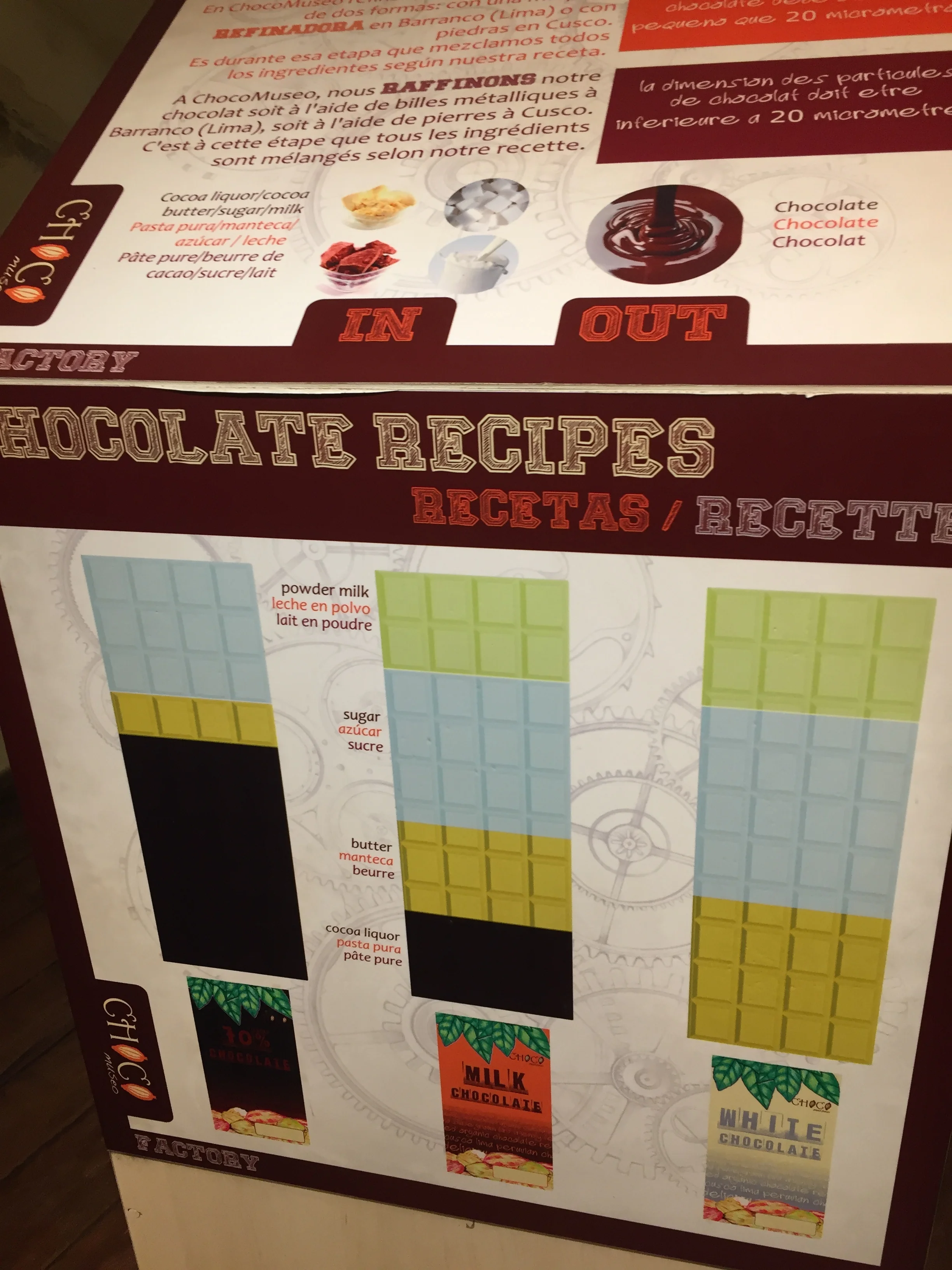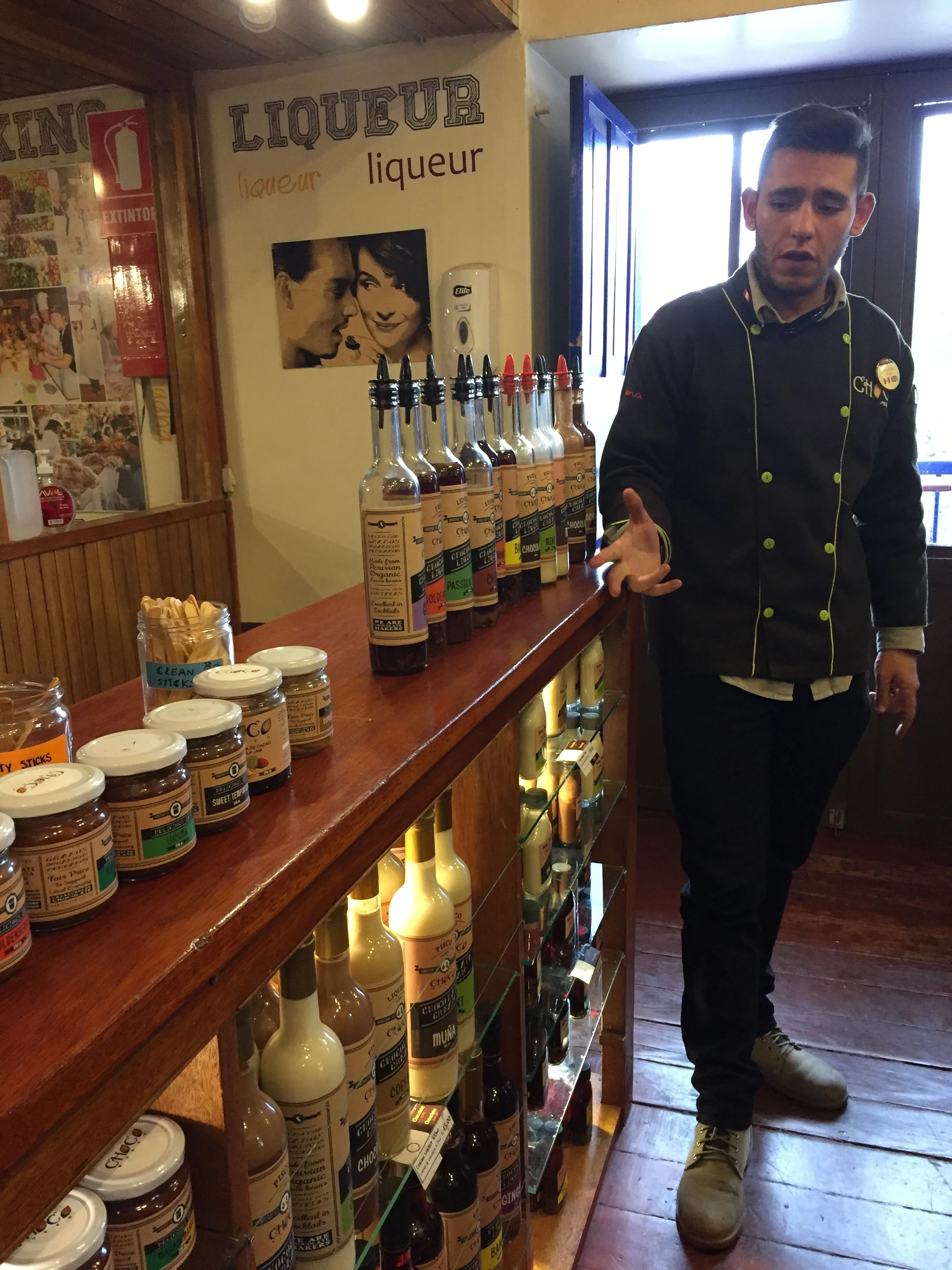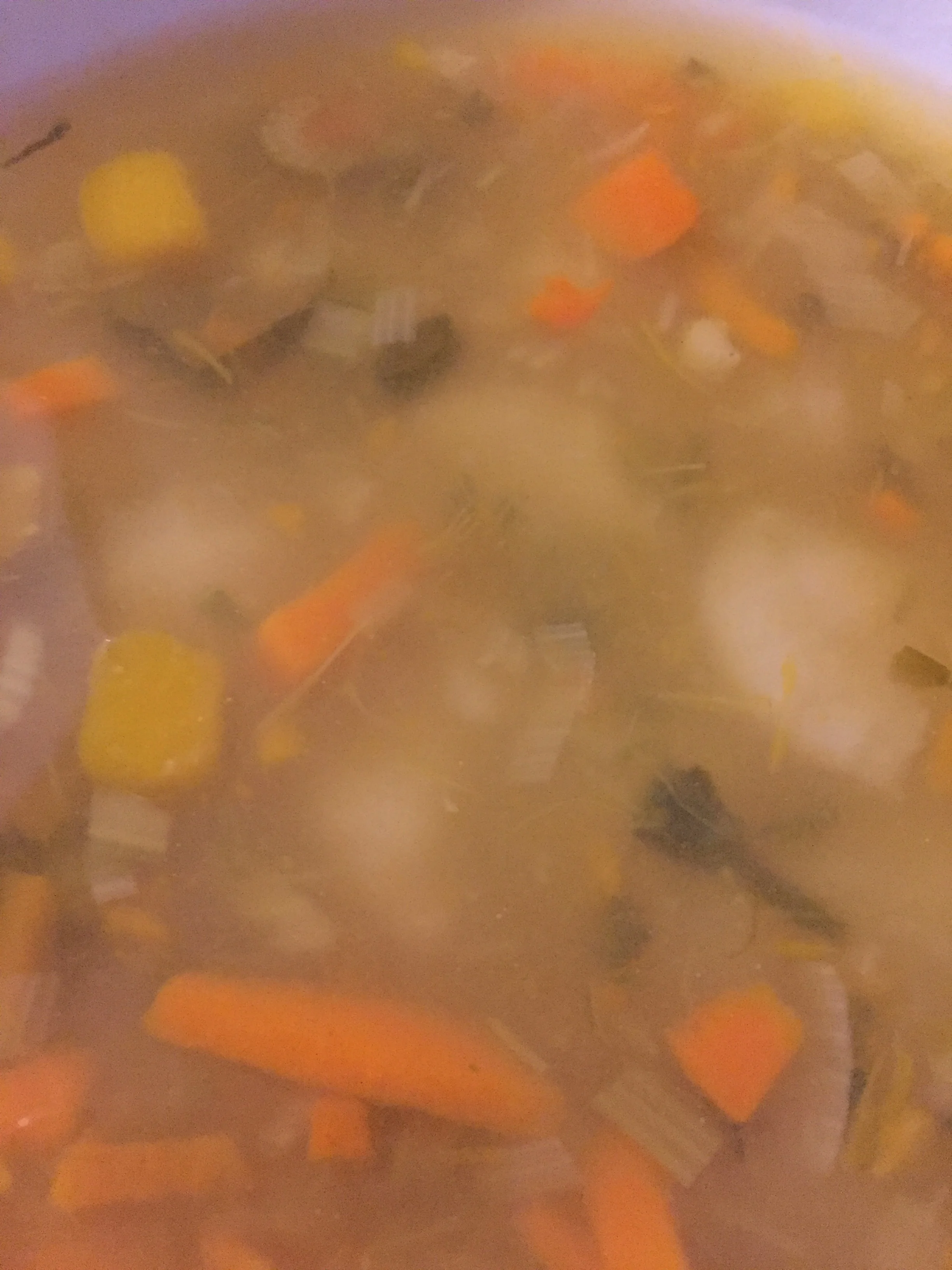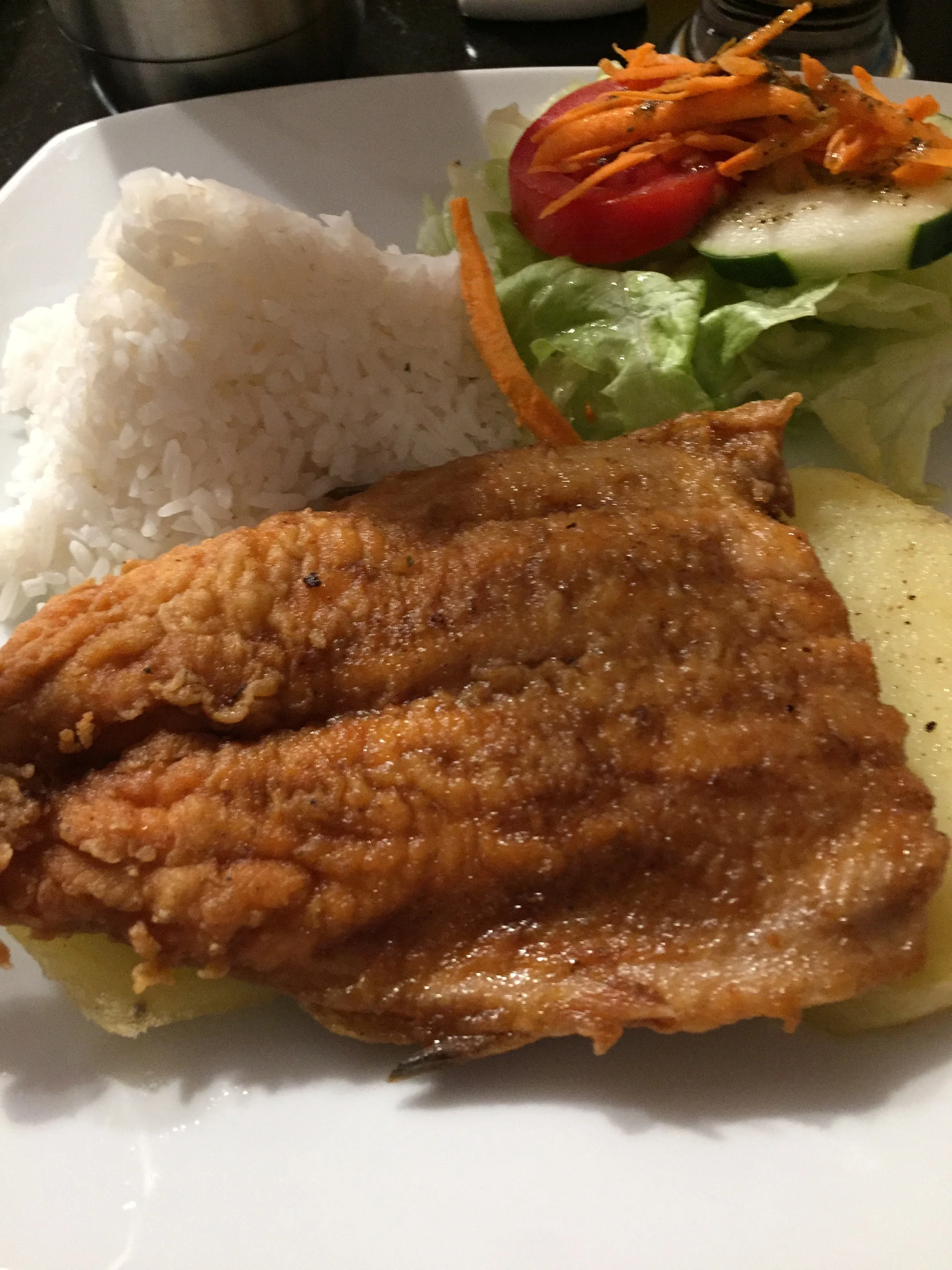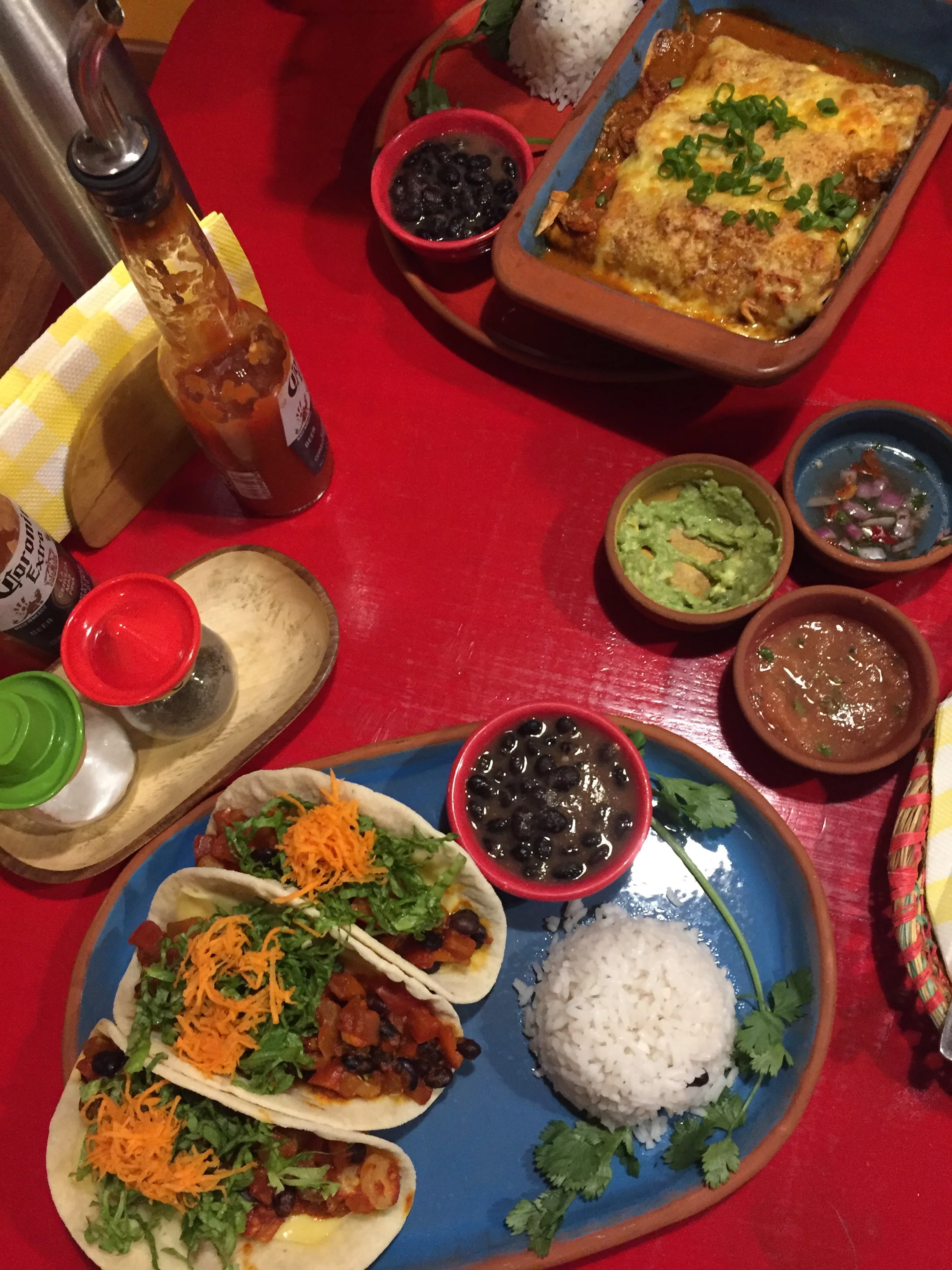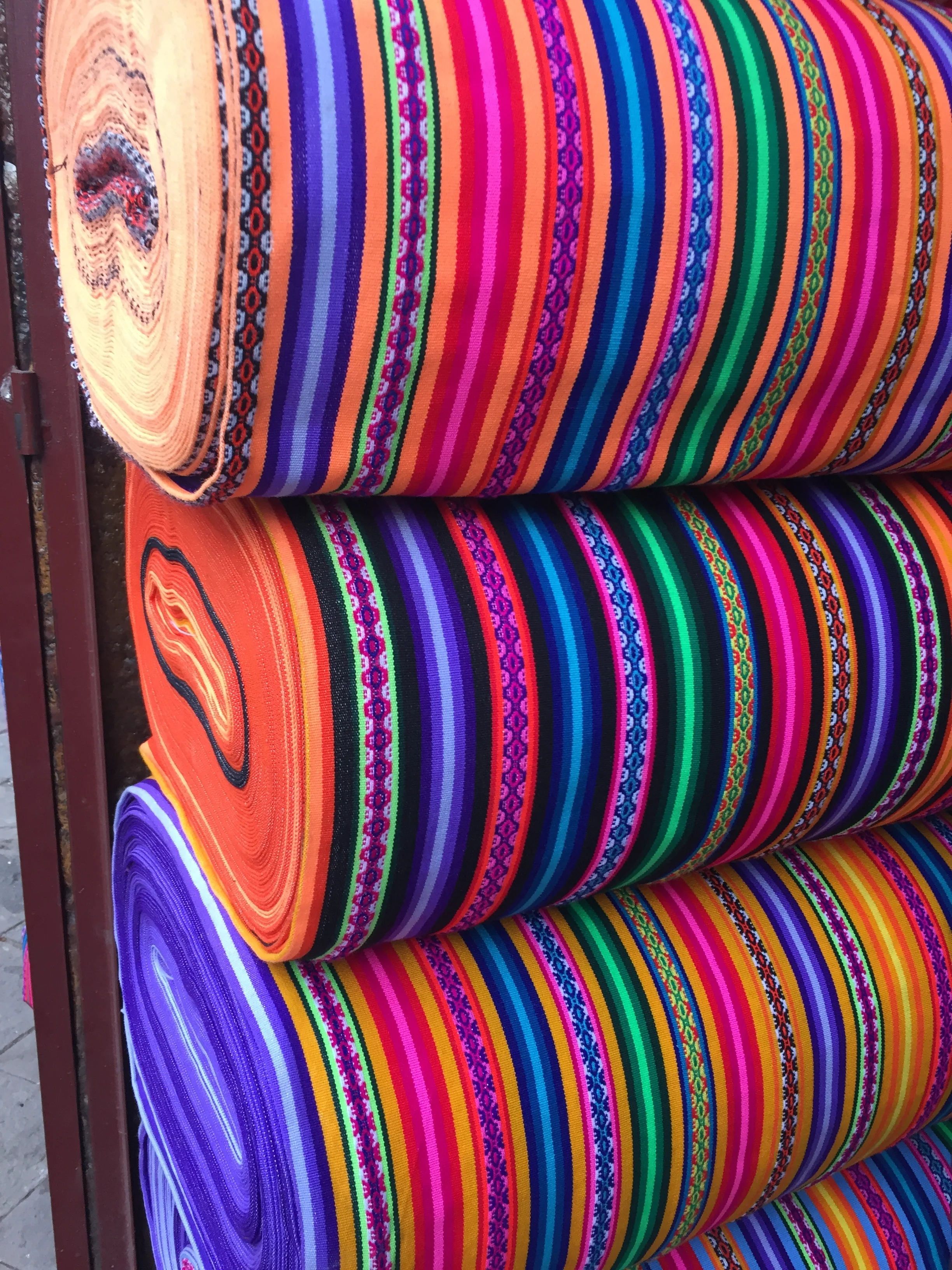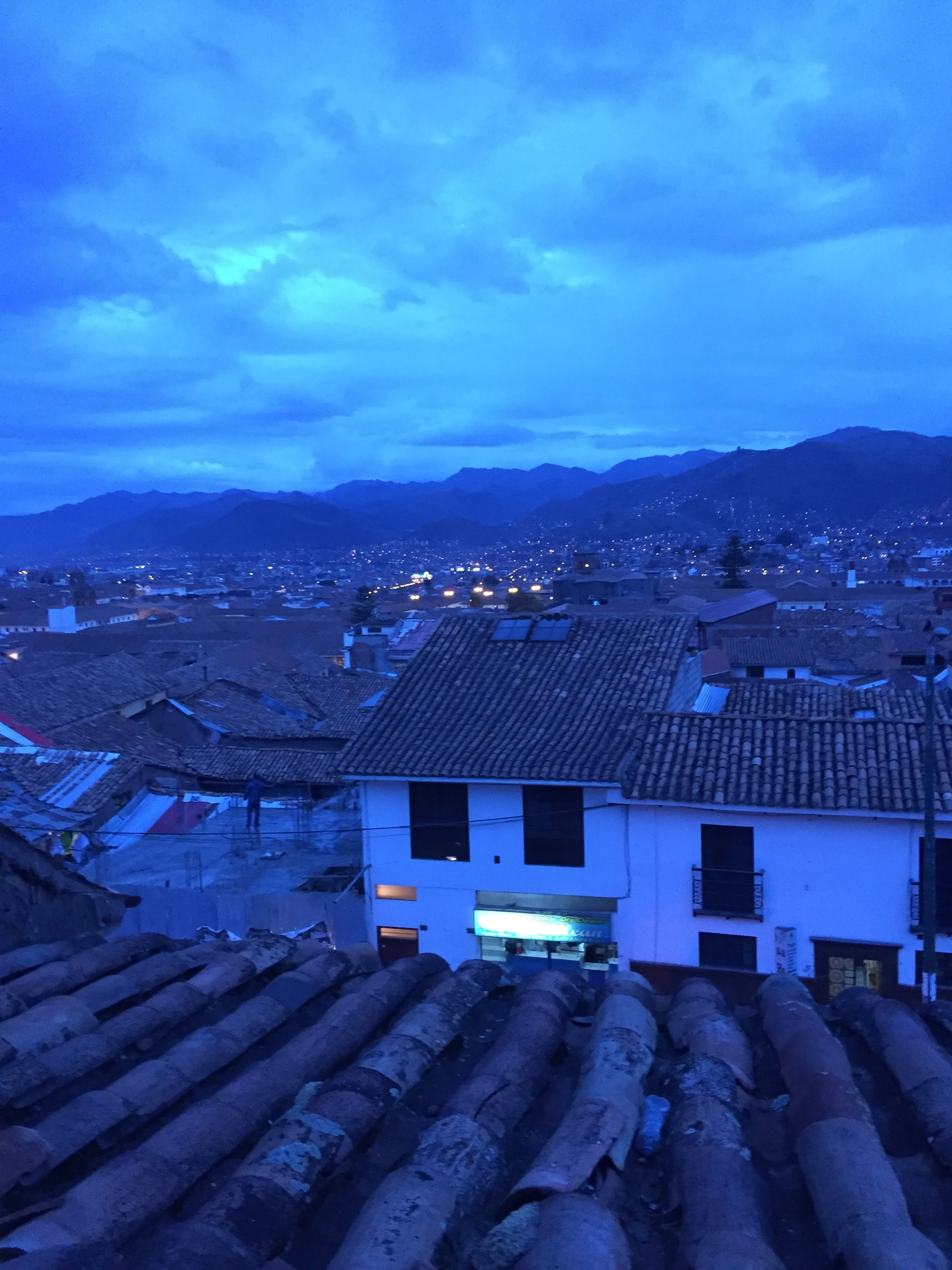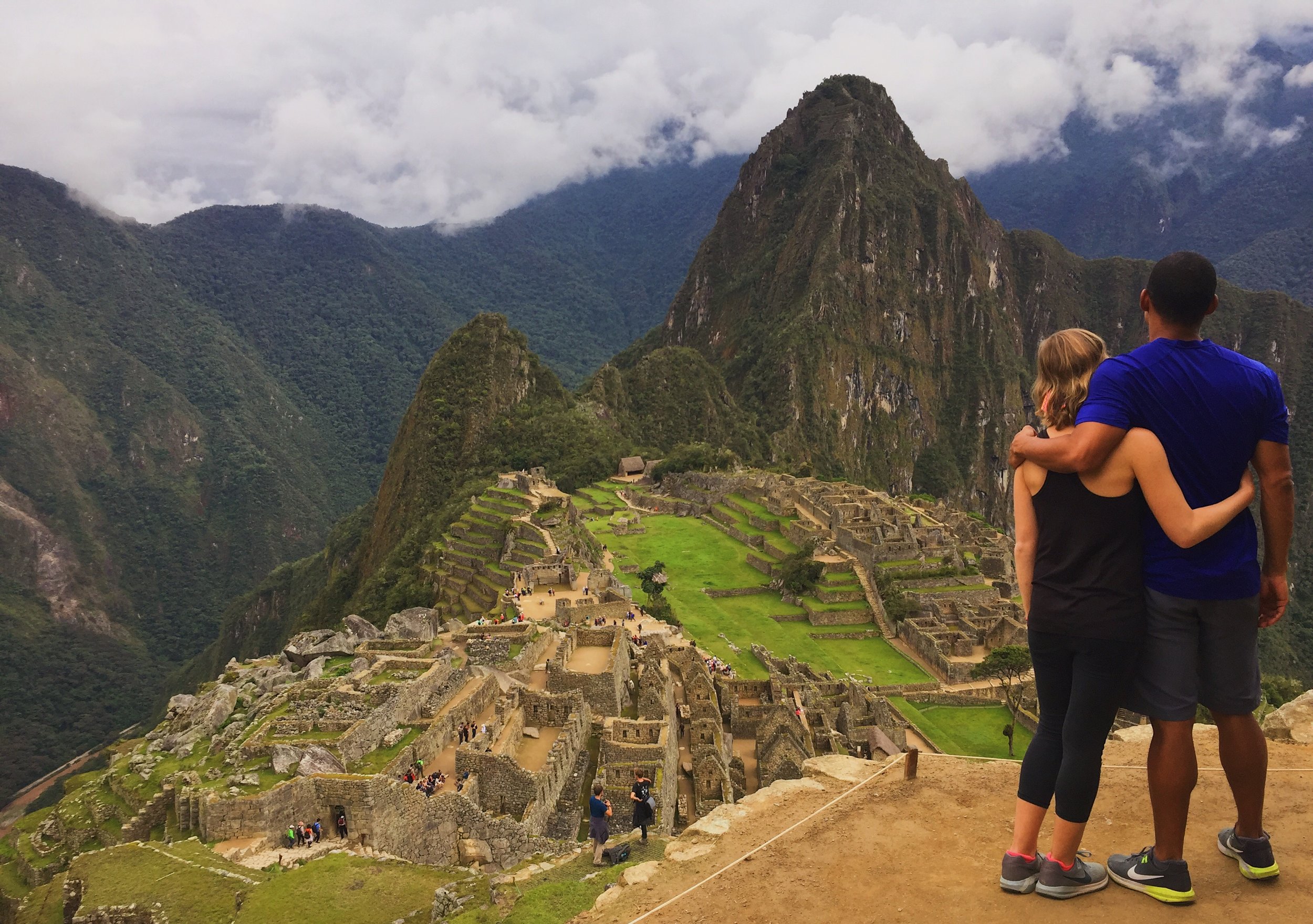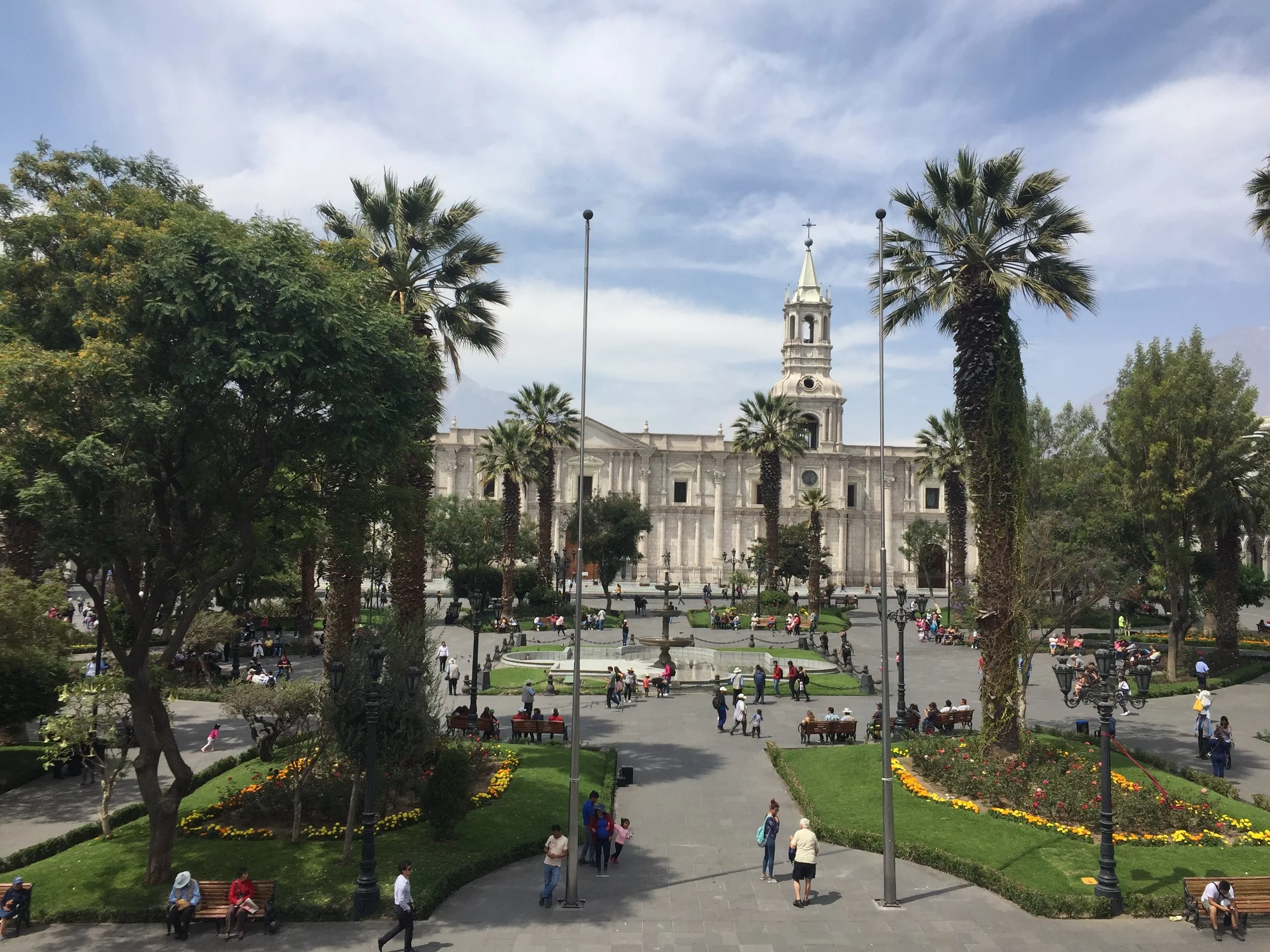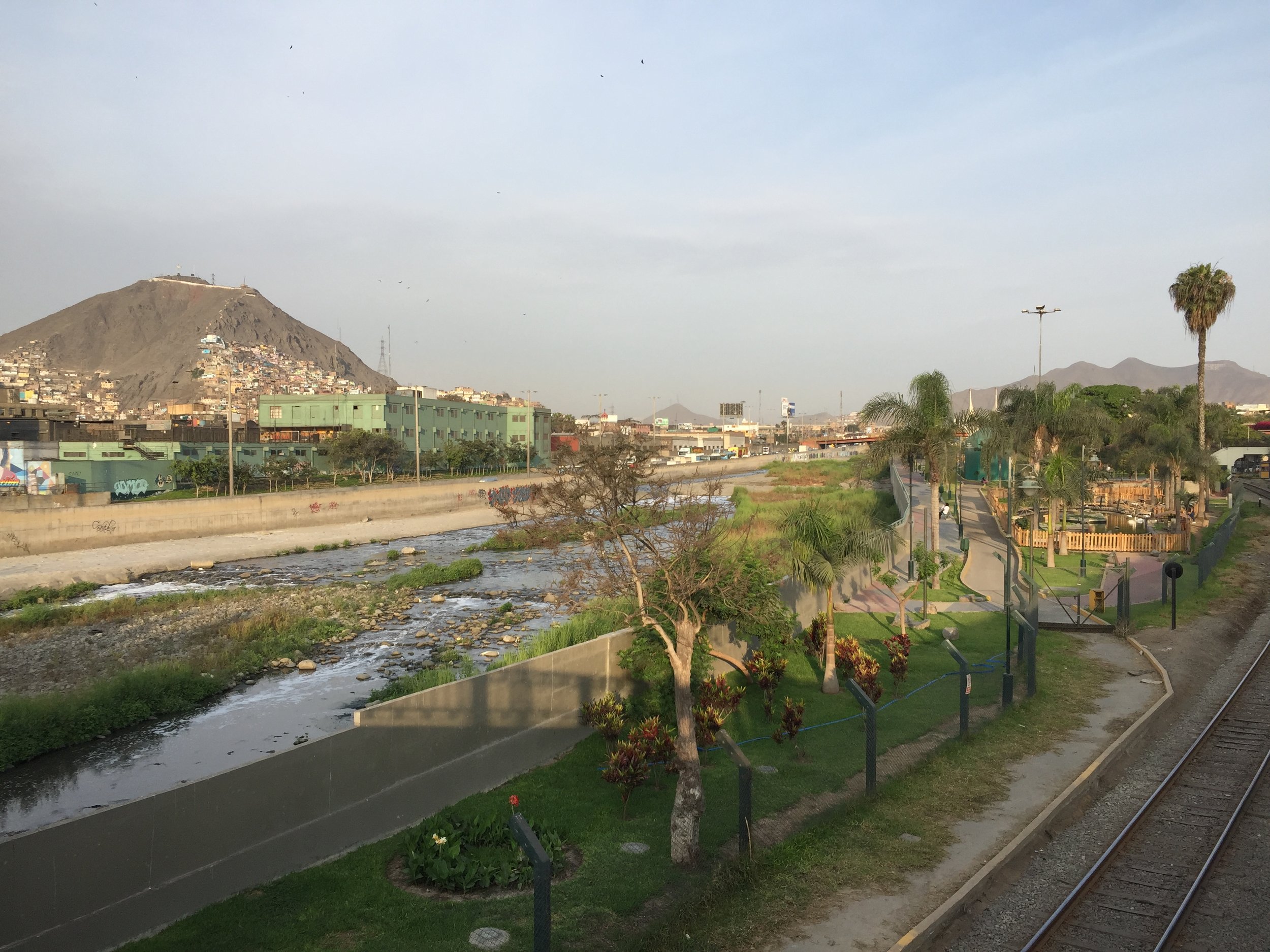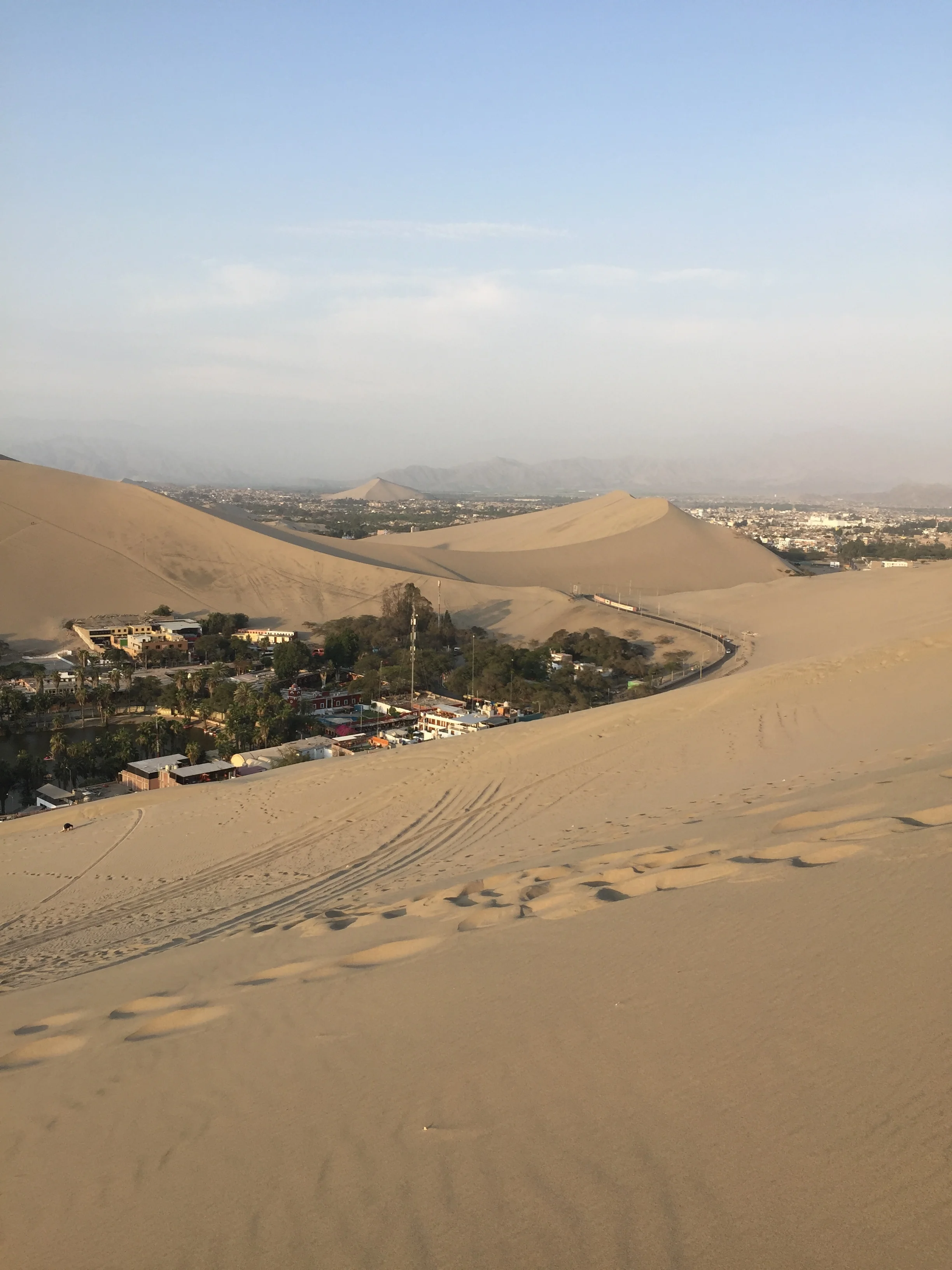Peru Hop III: Puno and Cusco
Barrels of every type of bread product overflowed onto the side of the road. We enjoyed some salty egg and cheese sandwiches on the go. One cost about two soles, or 60 U.S. cents.
From there, we stopped by Lake Lagunillas, where the altitude reached over 14,500 feet. The air was thin, extremely thin. We walked around briefly, perusing every kind of alpaca good imaginable being sold.
Puno, similar to Nazca, surprised us. We primarily went to explore Lake Titicaca, but the town itself had an undeniable charm.
The center plaza is set among the hills. If nothing else, there’s an indisputable sense that the town has character.
There’s a tourist centric strip near the water, but other than that, Puno feels largely untouched.
Most noticeably, the high elevation is tangible. Even driving in, the air felt thin. We soon discovered that out of everywhere we visited, it was the place that was most difficult to take a deep breath.
As soon as we arrived, we were in search of lunch. We ended up settling for IncAbar, which seemed pretty generic. But it was so delicious and completely hit the spot.
The city is situated on Lake Titicaca, the highest navigable lake in the world at nearly 12,500 feet above sea level
Puno is a situated along the Peruvian border with Bolivia. The lake connects the two countries.
Besides being an entry point to Lake Titicaca, Puno is known as Peru’s capital of folklórica. The colonial and naval influence can be noticed through the the traditional dress worn by many women in town.
While we didn’t catch one of the infamous festivals, such as the Virgen de la Candelaria parade, we did arrive for the weekly Saturday street market.
It was extensive. Clothes, treats, live chickens, dry goods, shutdown main thoroughfares.
I stopped for discs of sweet, freshly sliced pineapple.
And then we had to try this odd creamy whipped meringue concoction they were selling everywhere in dixie cups for one sol, or 30 cents. It was surprisingly lemony and light.
It was evident that the people of Puno appreciate a colorful celebration. And one with watermelon is always a festival I can get behind.
After, we went to explore the waterfront, paved with a wide, winding pathway.
We made friends with some sheep who were far more interested in chomping and maintaining the marshland.
And a miniature horse who was overseeing the lake.
We spent hours meandering around the the banks of the lake, over the pedestrian bridges. It was tough to believe there’s barely even two miles of flat land between the shores and the foothills.
As a result, the city has continued to grow up upward into the hillsides. The streets can be very narrow, and a real challenge for traffic.
We found that in Peru, pizza was fairly ubiquitous and Puno was no different. We tried Remix Pizzeria Cafe Bar, which was decidedly satisfying wood-fired pizza.
That evening, we stayed in Suite Indepencia, a local hostel with private rooms. We got up the next morning for a full day exploring the Floating Reed Islands.
The manmade islands are in the center of the lake made entirely of Totora reed. The native plant is known to reach up to 20 feet.
The Uros people, indigenous from the Inca civilization, are known to have lived on such islands for centuries.
We were given a tour of the small island, and a peak into their vibrantly decorated homes.
The locals speak their own language, different from Spanish or Quechua.
We were able to get our passport stamped, though it’s unclear the validity of this.
After, we took a two hour boat ride to Taquile Island. To be honest, we weren’t aware of the distance between the two islands.
As such, the Taquile Island is so remote that it was used to hold high security prison during the Spanish Rule in Peru.
We learned that over 25 rivers flow into Lake Titicaca.
And since it’s on the border, 56 percent of the area of the lake belongs to Peru, while 44 percent to Bolivia.
According to Inca legend, the Sun God lived on one of the islands on the Bolivian side of the lake, dubbed the Island of the Sun.
He created his son and daughter, Manco Capac and Mama Ocllo.
They ended up being the first Incas who ventured North to Cusco, later becoming the center of the Inca Empire.
We enjoyed a lovely lunch at a local restaurant of quinoa soup and trout.
We trekked to the other side of the island, before we made the two and a half trip back to the mainland.
We had some time to kill in Puno before a late overnight bus to Cusco, so we stopped for a couple of empanadas—one queso, one pollo—at Ricos-Pan.
After a eight hour bus ride, we arrived in Cusco at 5:30 a.m., totally exhausted. Fortunately, we were able to check-in to our hostel.
Not only did we have a stellar view from our room, Intro Hostels was one our favorite hostels to date.
Located in the historical center of Cusco, there was a nice communal space with a bar and breakfast provided.
But we rarely had breakfast there, because we found our second home across the street at JC’s Cafe.
We went daily, and the cafe took on a deeper comfort comfort for us. Eggs, avocado toast, homemade bread, fresh squeezed juice and a flat white came out to less than $7 USD.
We’d come back with friends, and you couldn’t go wrong with anything on the menu.
But by the end of our full week in Cusco, we’d ask for the regular. To say JC’s Cafe was our favorite part of Cusco would only be the lightest understatement.
Cusco is located in the southeast of Peru, and most known as the entry-point to Machu Picchu.
As the previous capital of the Incan Empire, it’s over 11,000 feet above sea level.
Walking around the cobbled stone streets was taxing for the lungs. But we felt more prepared staying for an extended period of time in Arequipa, which was actually higher in elevation.
Cusco is deemed the archaeological capital of the Americas.
Impressively, I didn’t realize it’s the continent’s oldest continuously inhabited city.
Yet there’s a strange juxtaposition, as a significant amount of the Incan buildings have colonial influence.
While there’s no doubt the city is rooted in history and tradition, there’s a more urban aspect to Cusco which attracts global vistors to not only pass through, but stay a while.
The Plaza de Armas is the central meeting point in Cuzco, filled with an array of hotels and swanky stores selling expensive alpaca goods.
It was tough for us to determine what’s genuinely living history, and what was for show.
The Andean women dressed in colorful garb hawking photos with baby llamas? For show. But as we ventured away from the town center, we managed a glimpse into a more realistic way of life.
We trekked up to see Cristo Blanco, a 26 foot statue of Jesus Christ that can be viewed throughout the city.
The iconic white statue was a gift from the Arabian Palestinians who sought refuge in Cusco after World War II.
The peak yielded some beautiful views of the city.
In many ways, it felt like an oasis apart from the more congested city center.
The further we walked from the city, the more stray dogs appeared.
San Pedro Market was apparently another more accurate peak into life in Cusco.
There were certainly more local Peruvians and less souvenirs.
There was a strong dichotomy between more traditional and touristic activities. Not far from the market was the Choco Museum.
They offered a demonstration and tour of how chocolate is made.
But free samples of chocolate is really the best kind of tourist trap.
Another example was dining. We did enjoy a few local restaurants with a set menu of soup and entrees such as fried trout.
But when it came down to it, we were really just craving enchiladas and tacos. We continued our habit of seeking out any and all Mexican restaurants. Tacomania was a favorite.
Cusco was colorful and mostly what I expected it to be.
Mostly, we enjoyed wandering around unmarked alleys. Coming across gems such as these warm churros with dulce de leche.
Cusco was wonderful, but by the end of the week, we were definitely ready to move on. The anticipation of Machu Picchu felt tangible.

